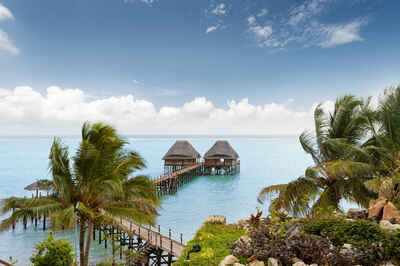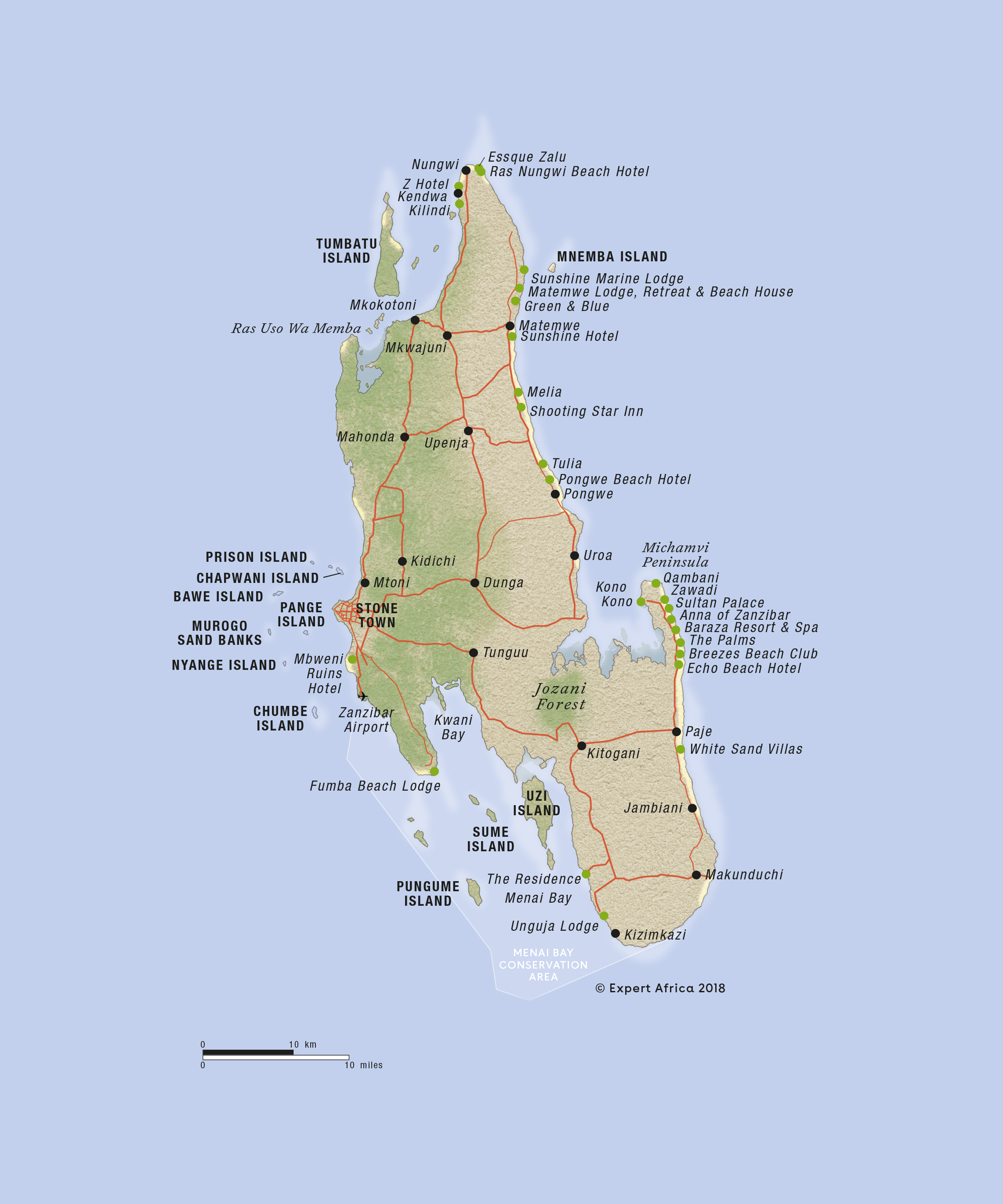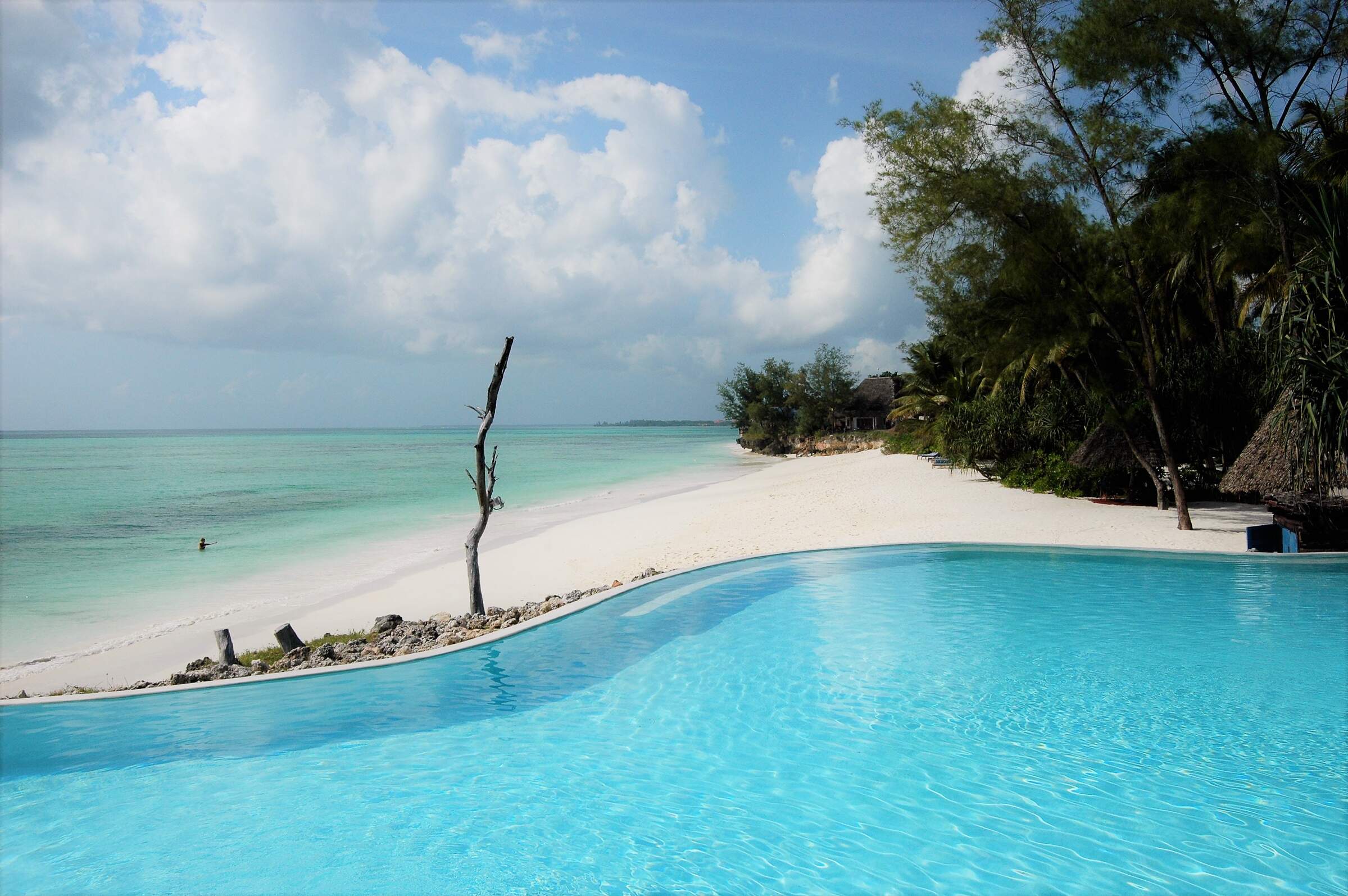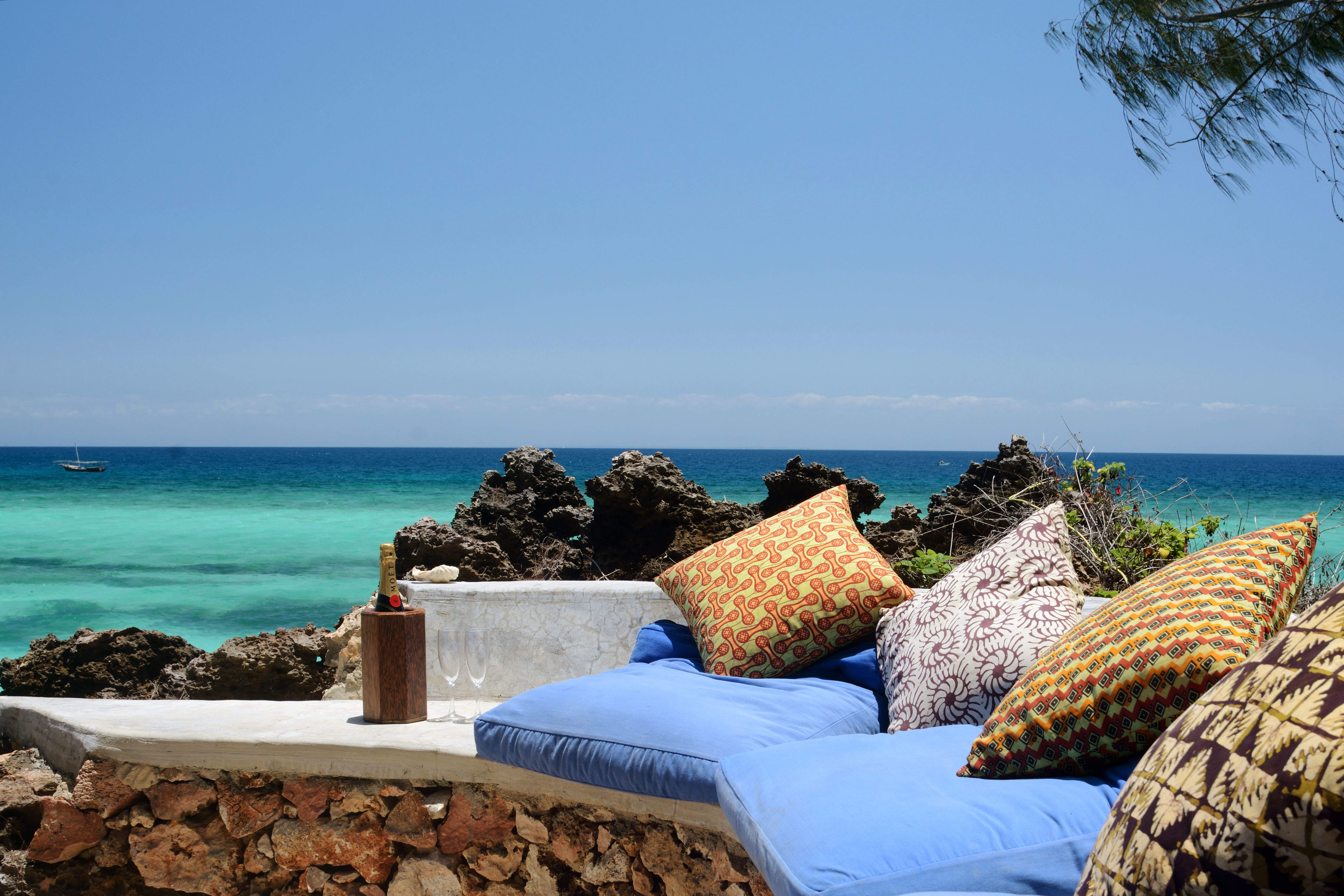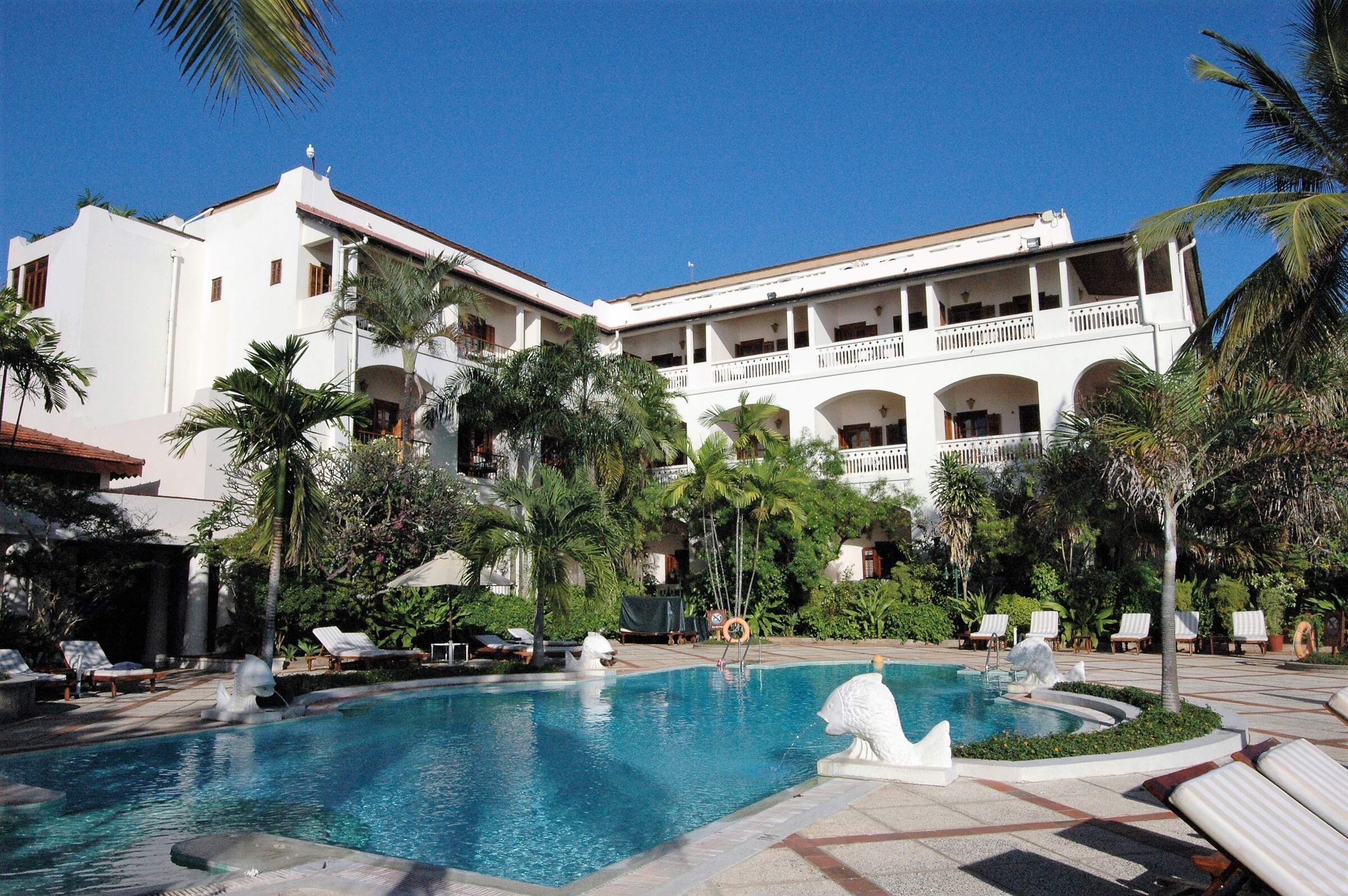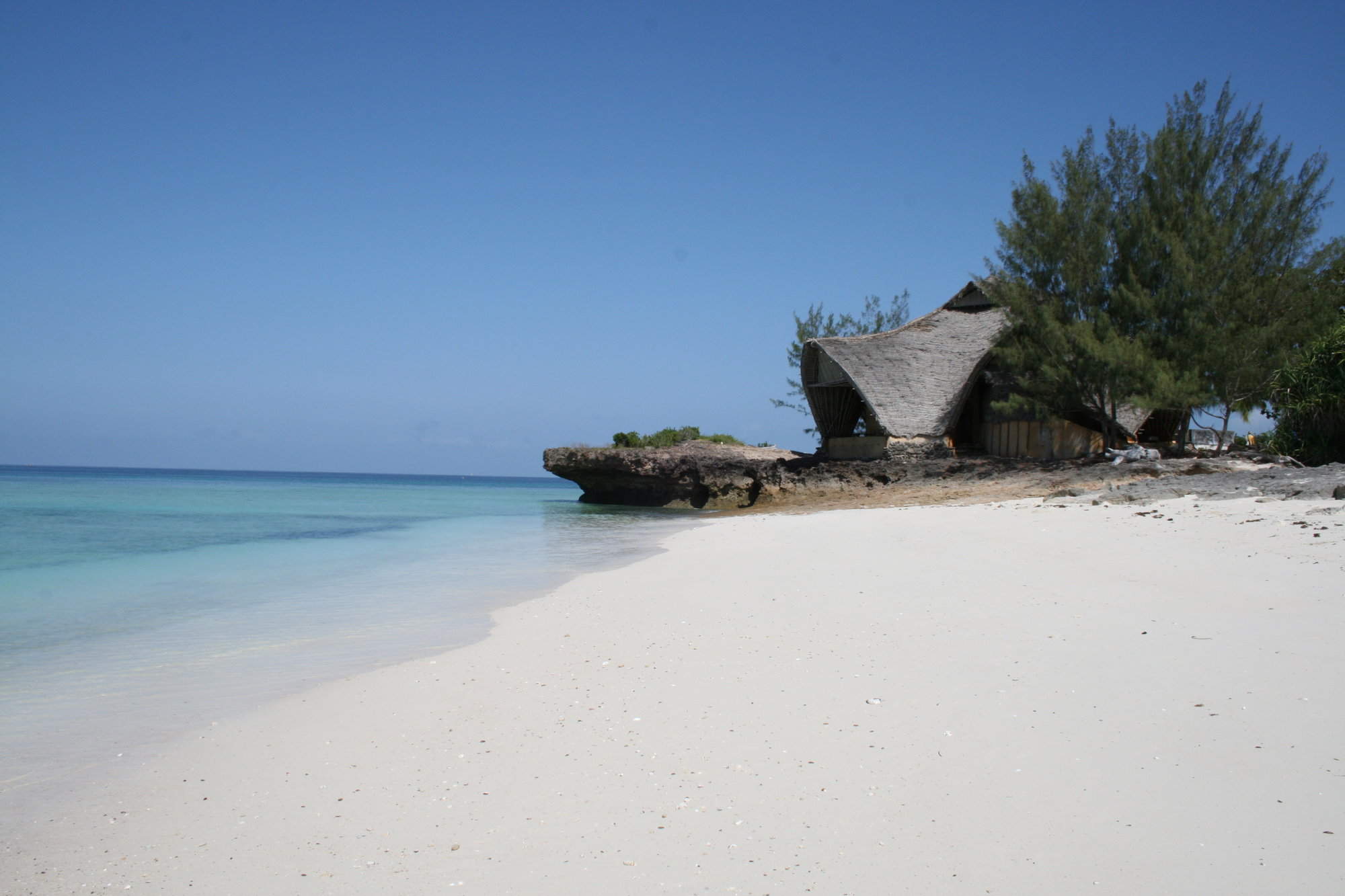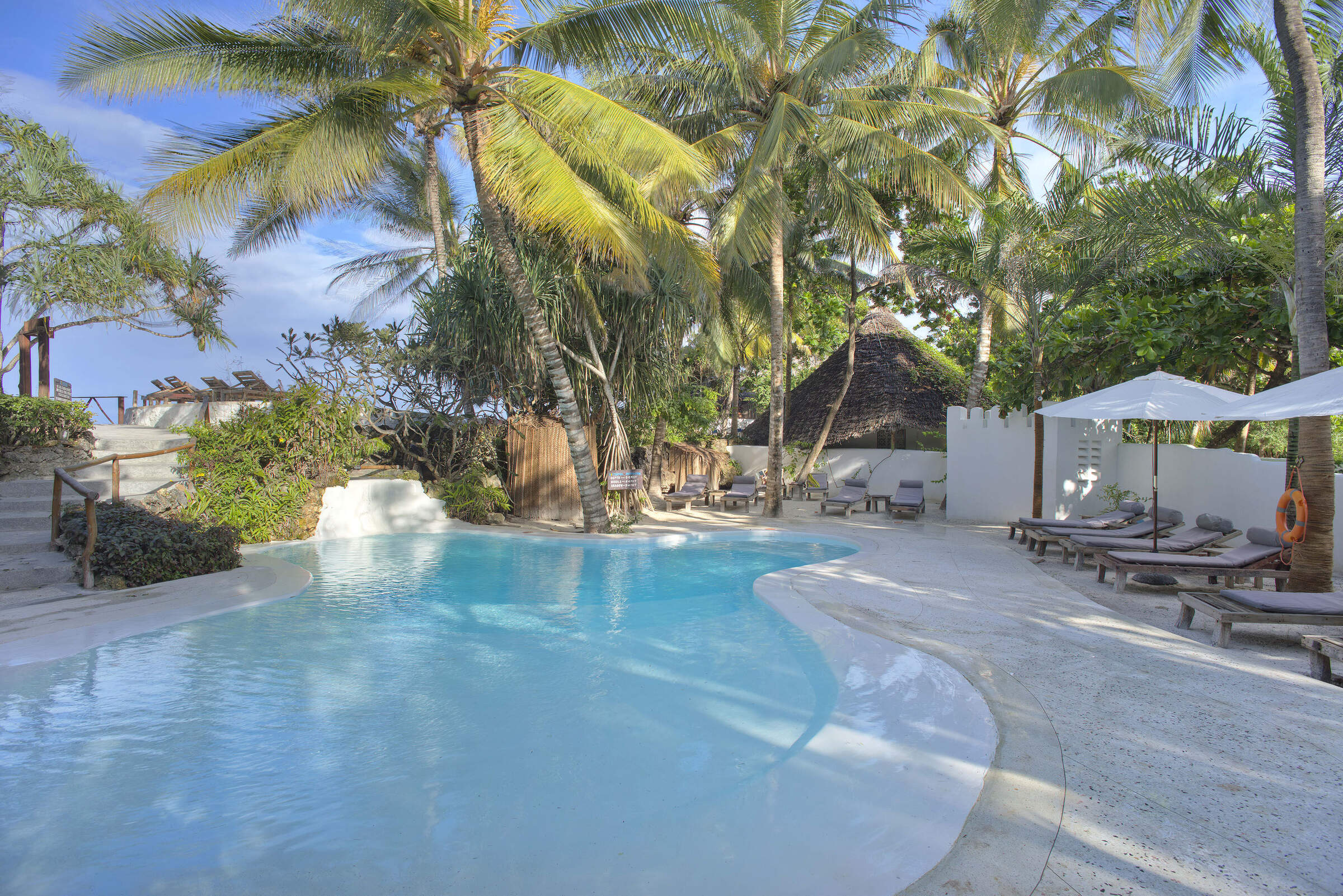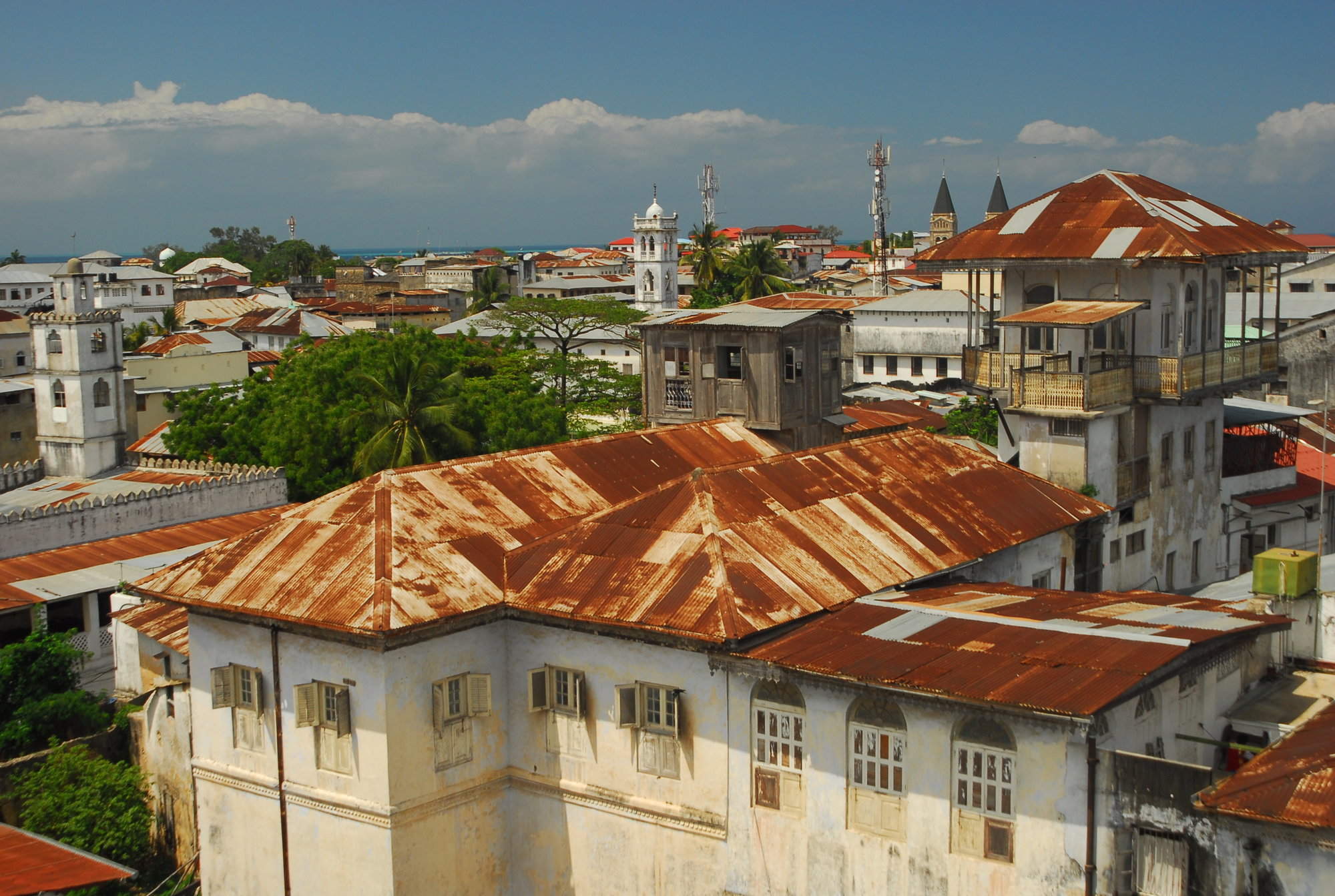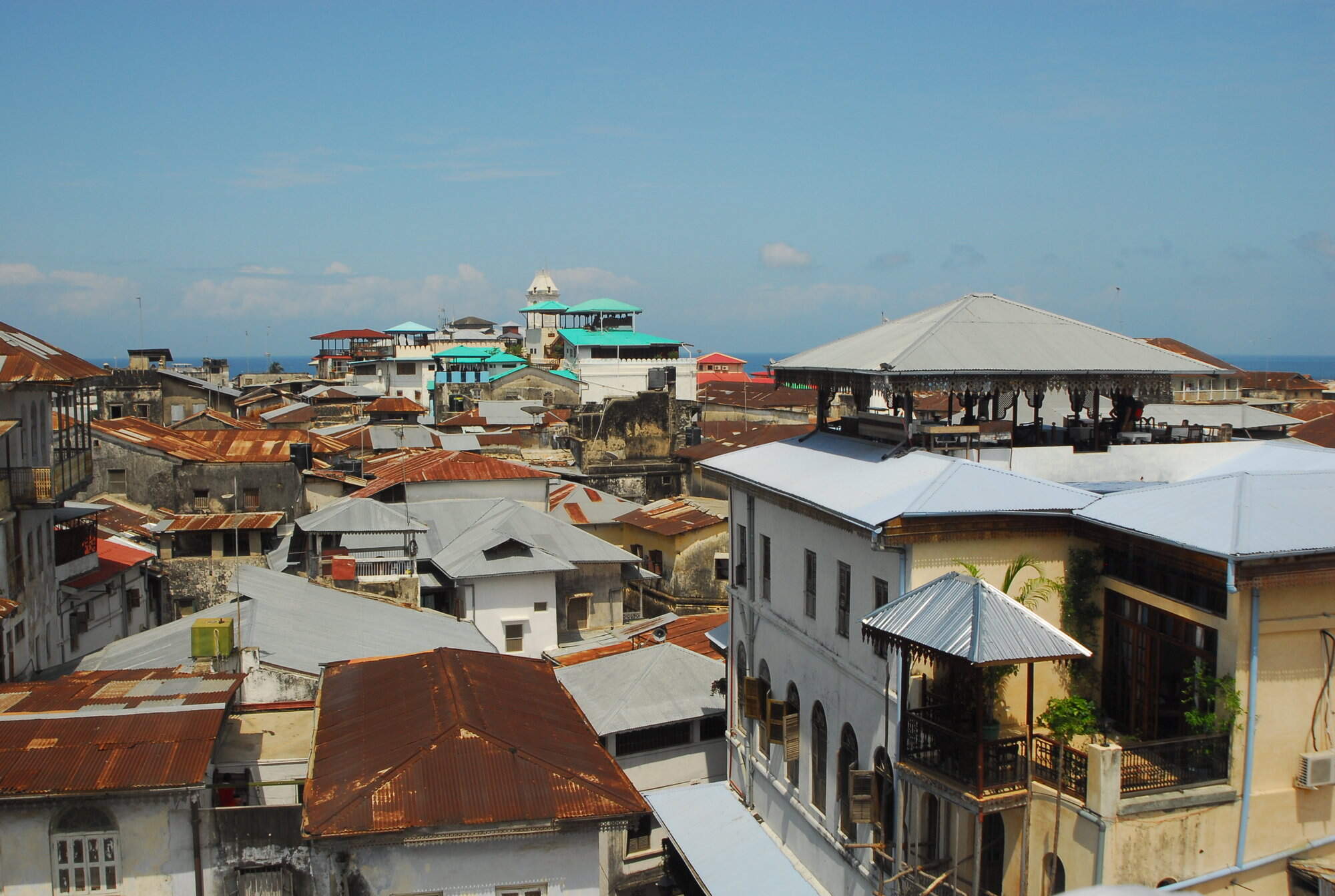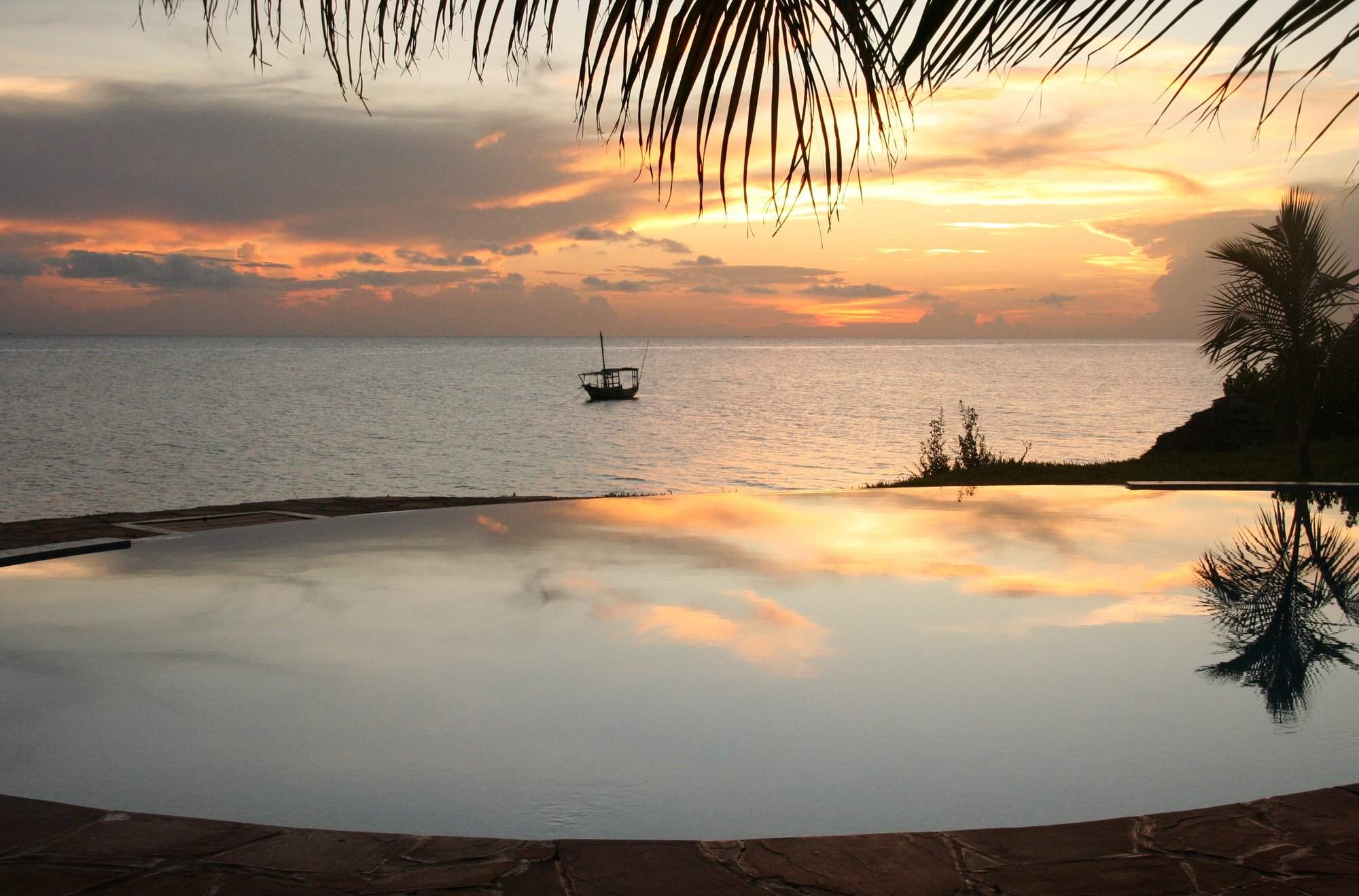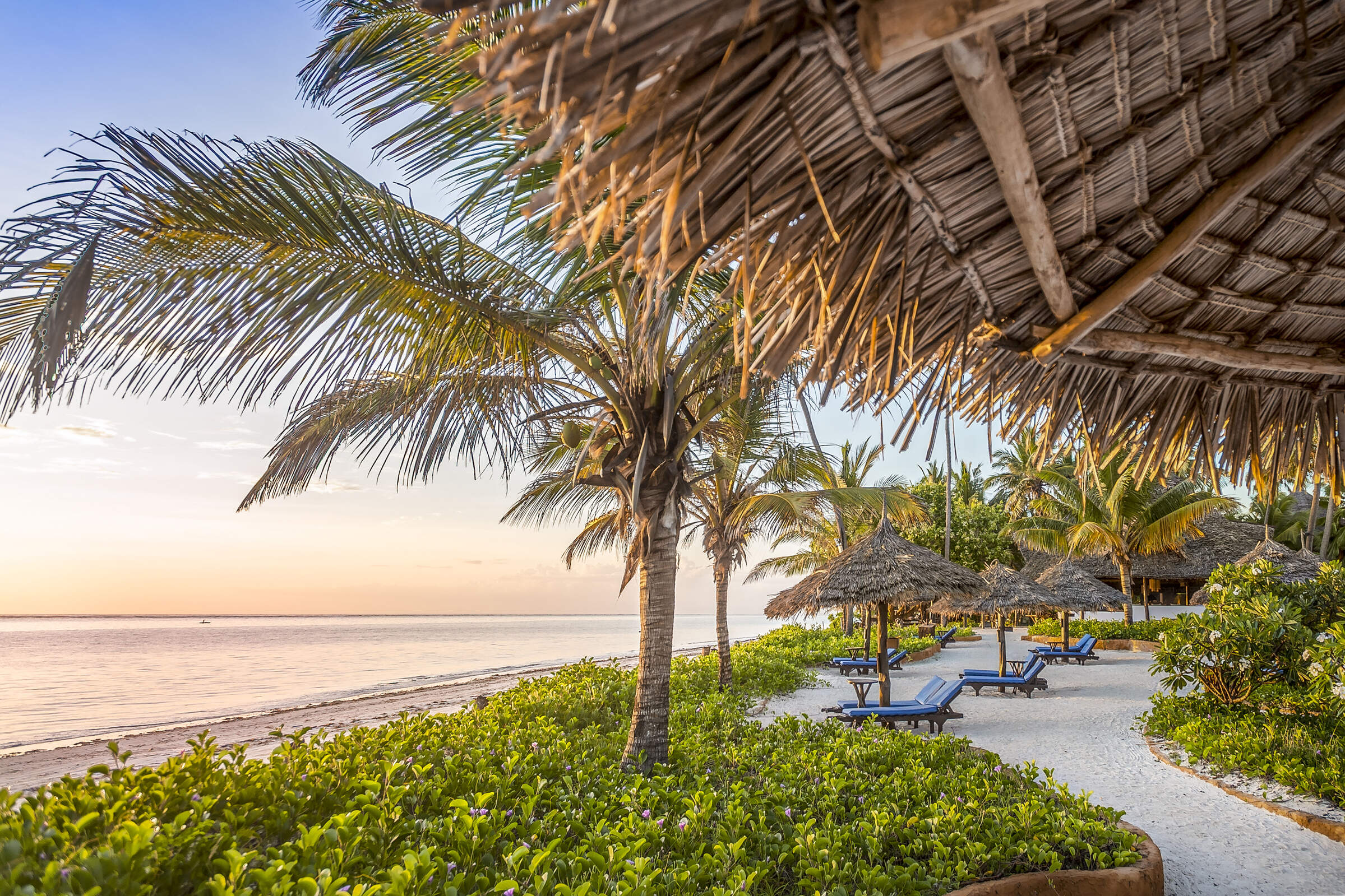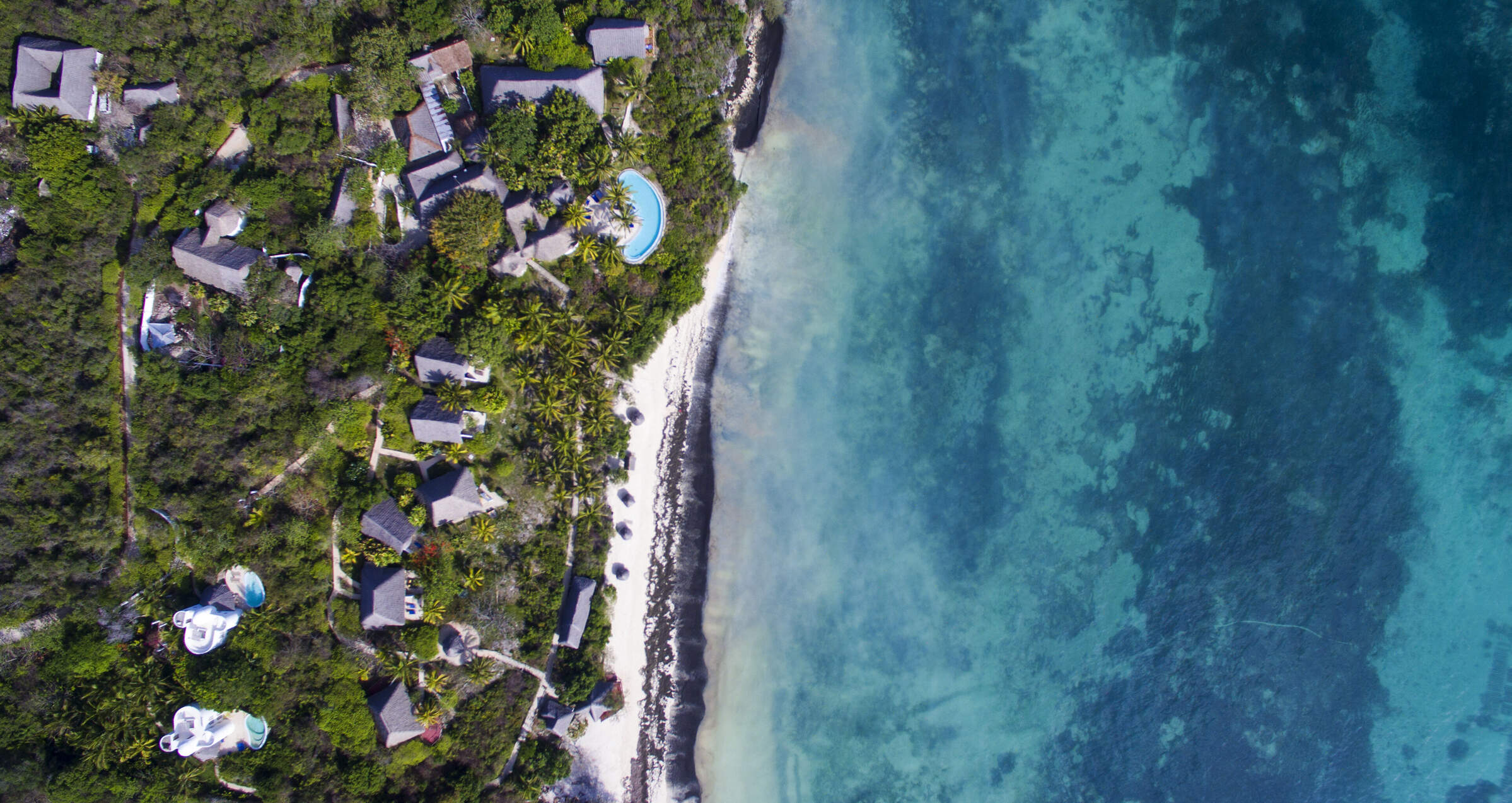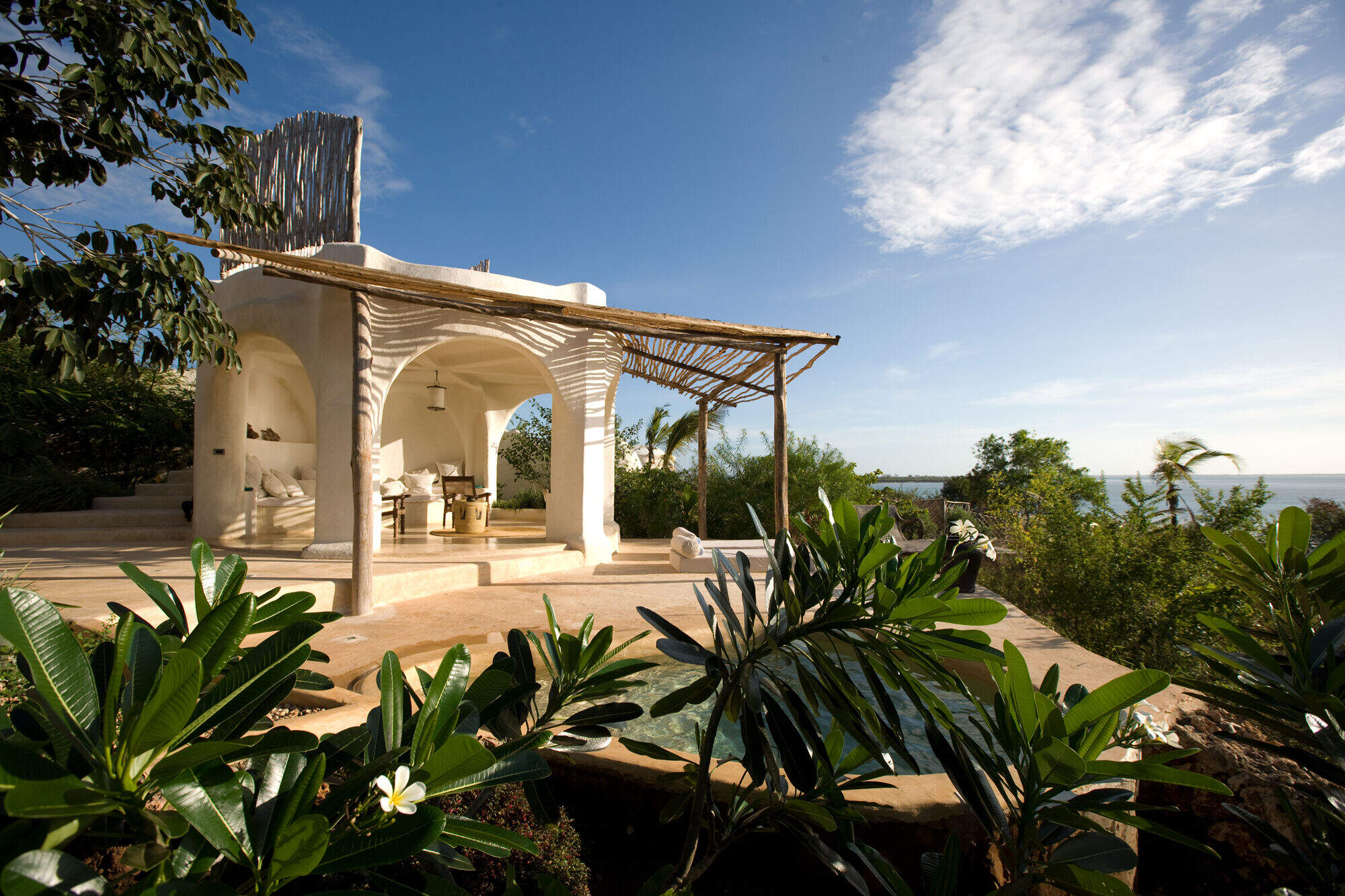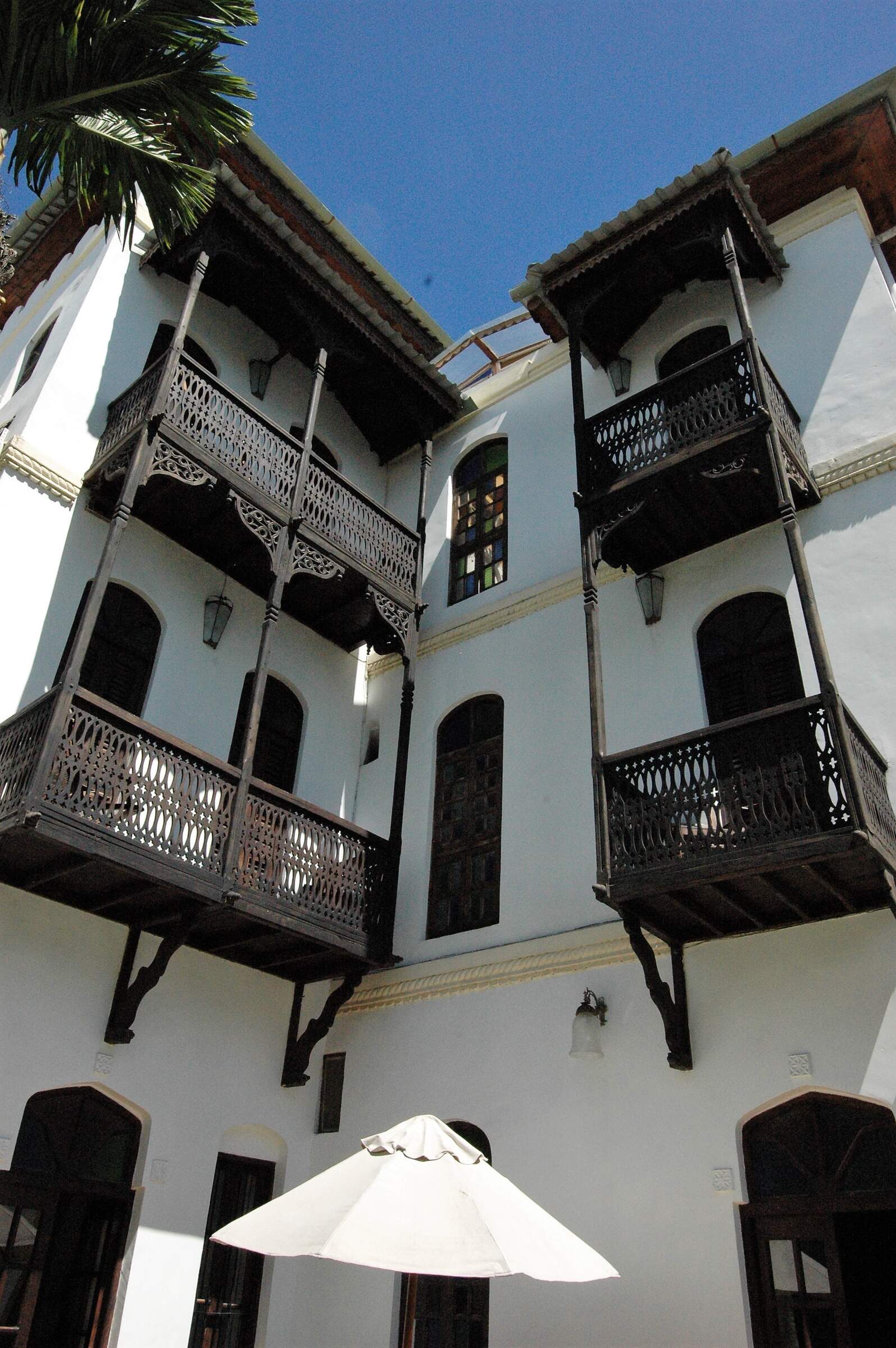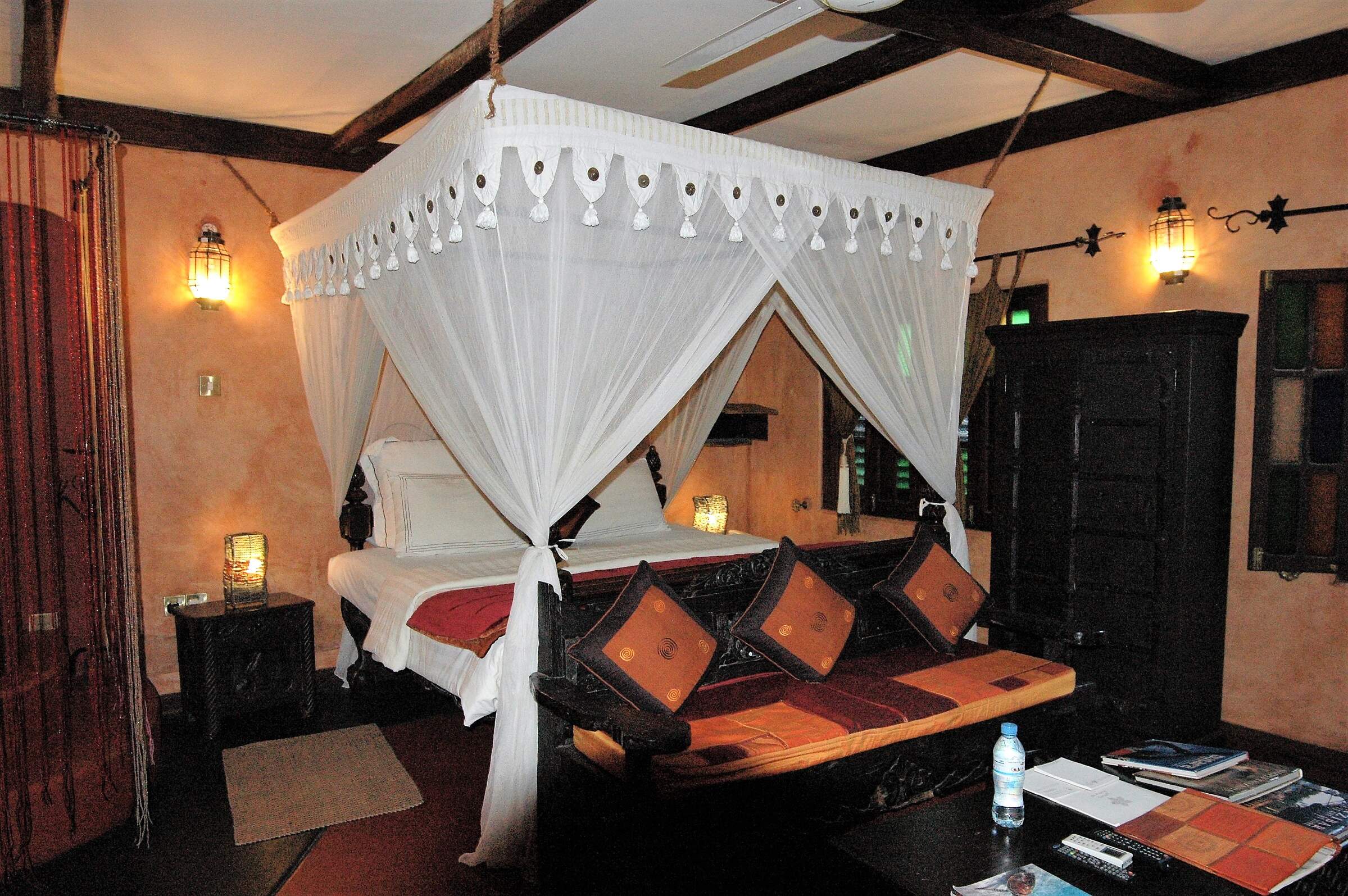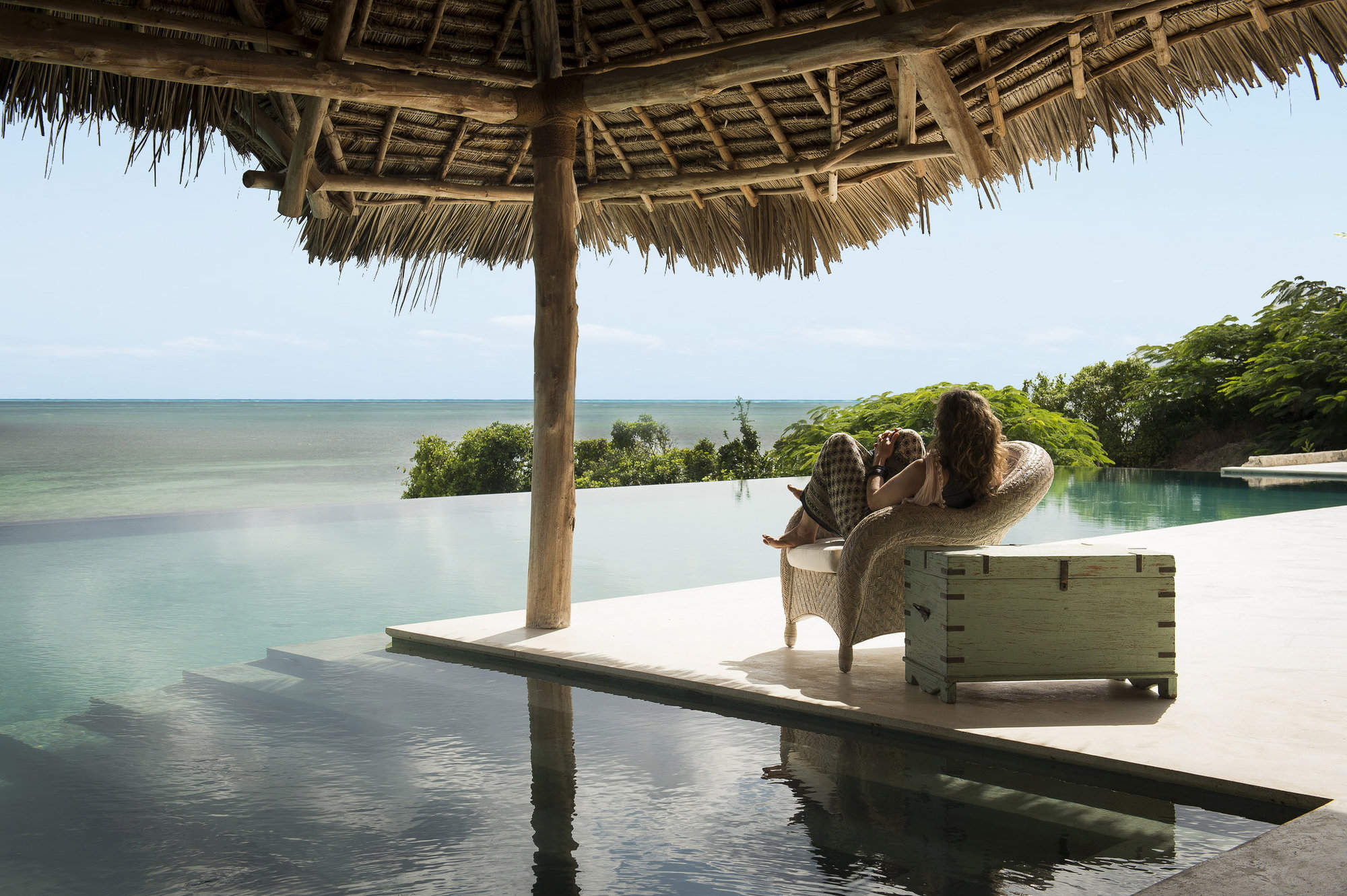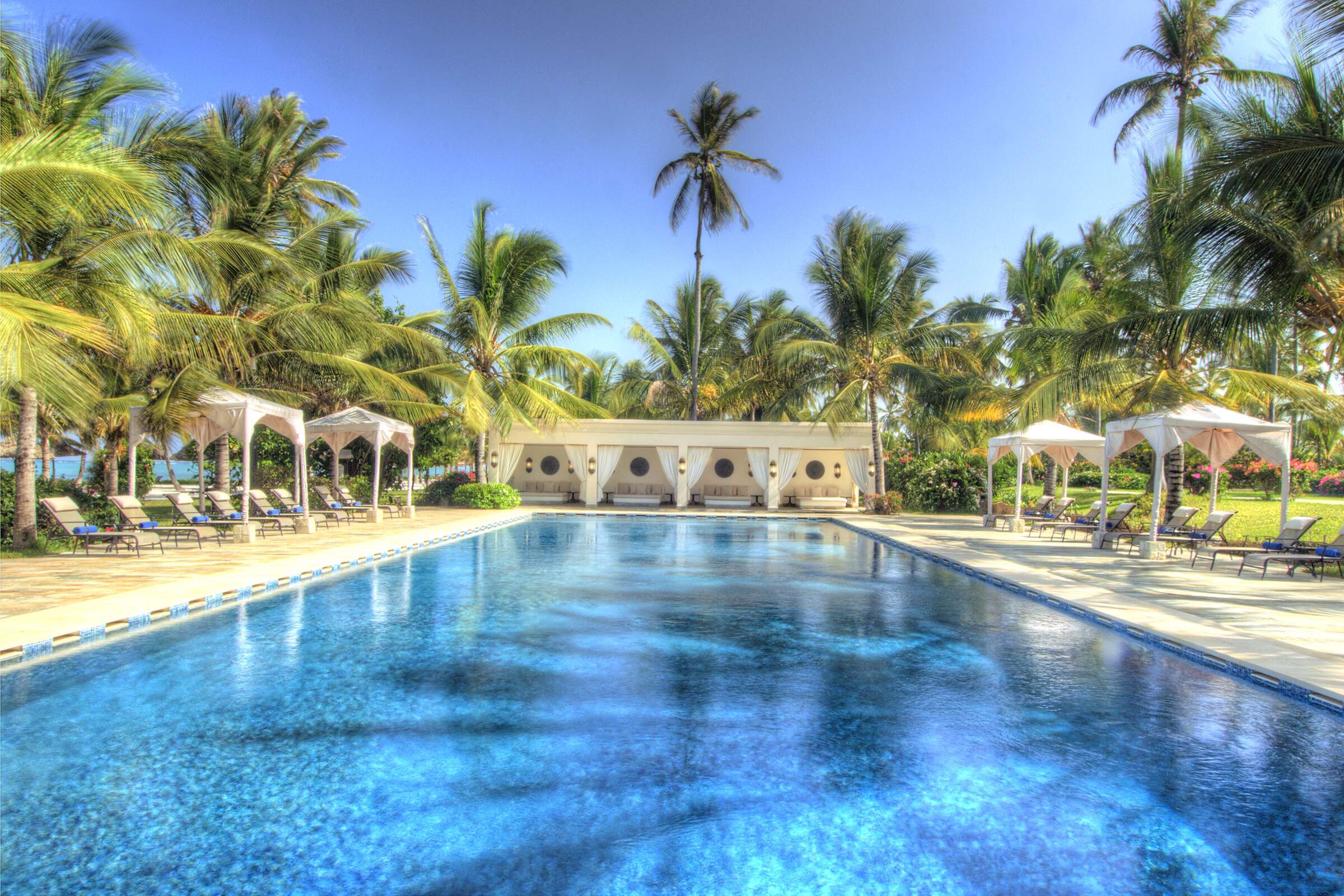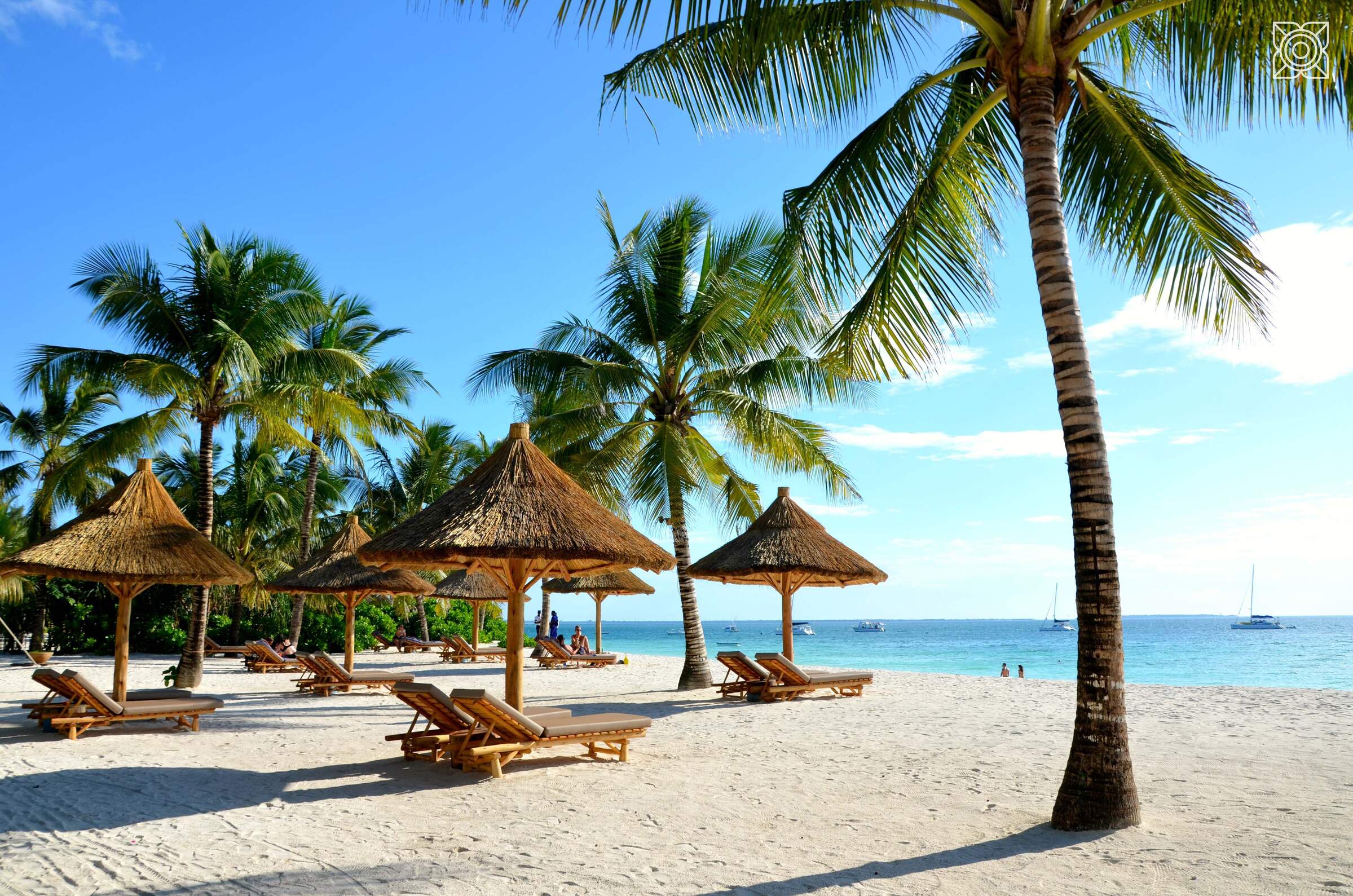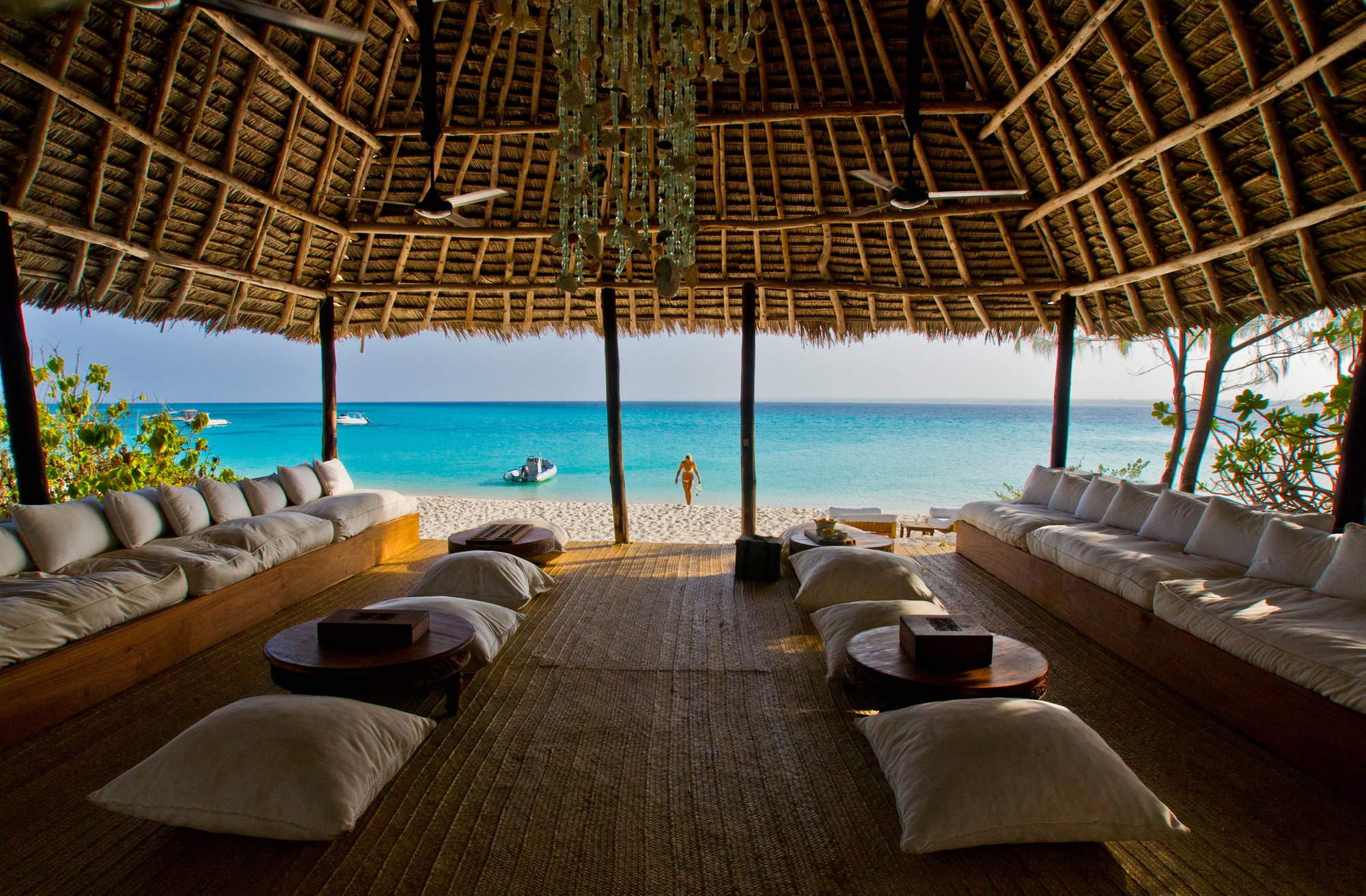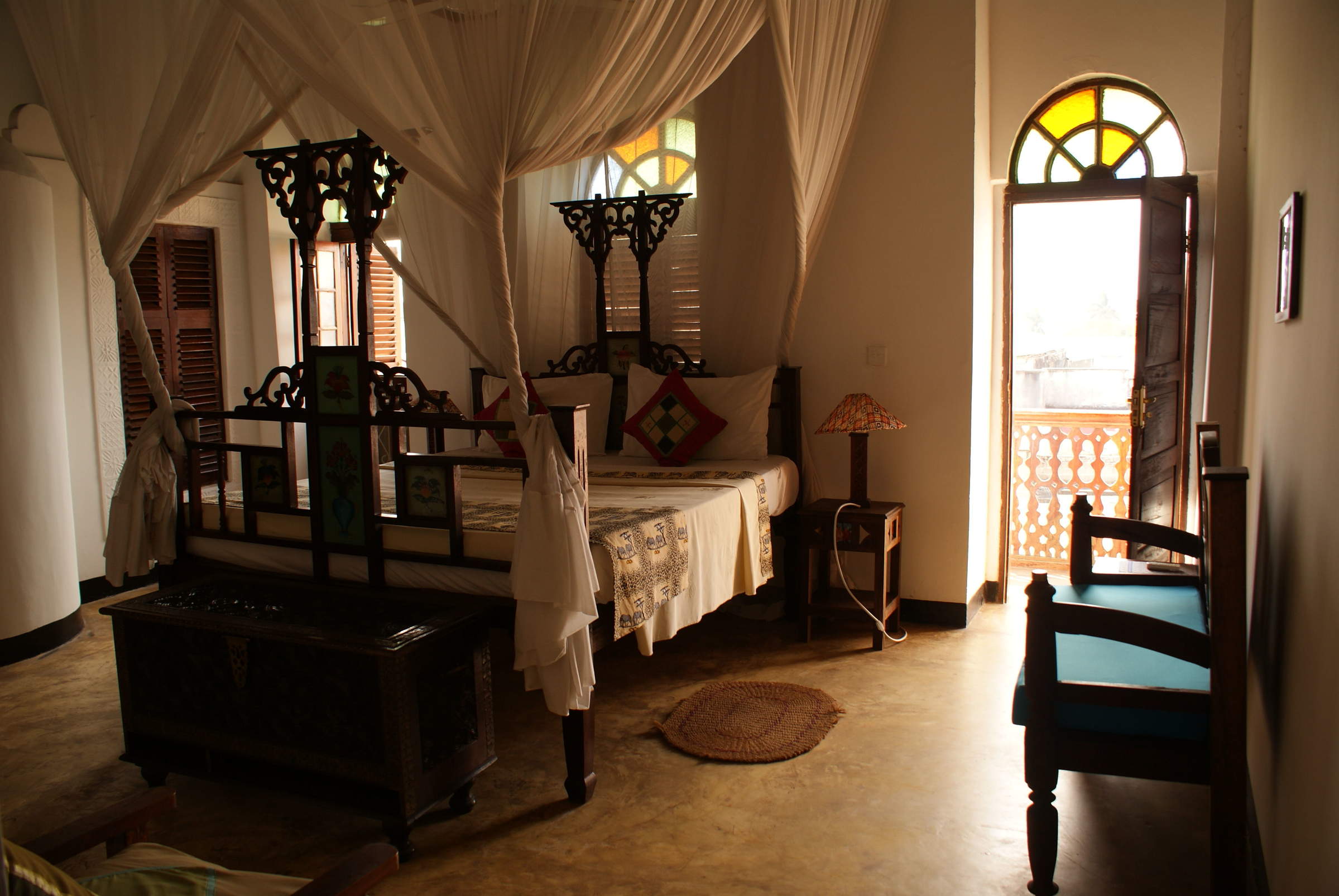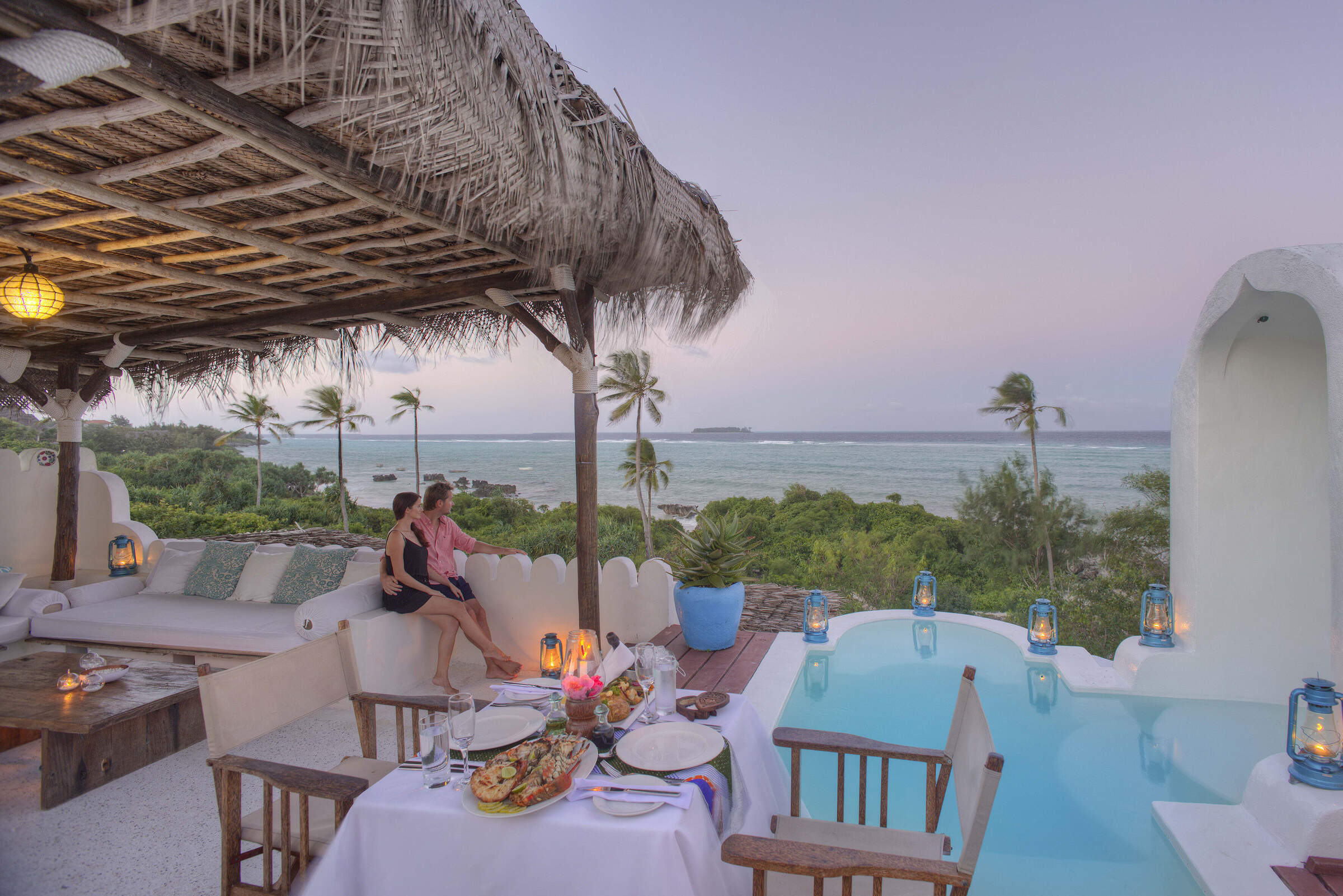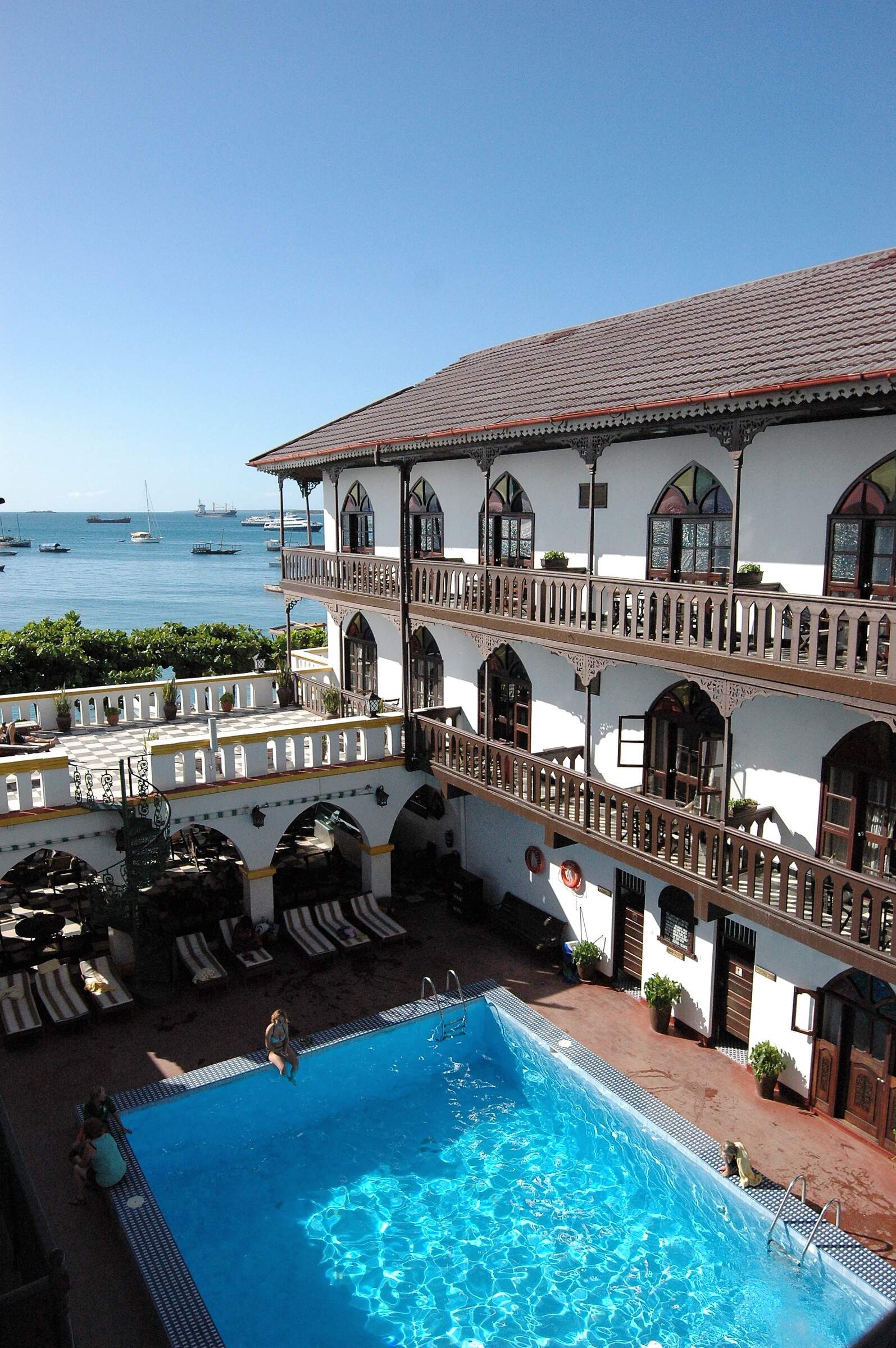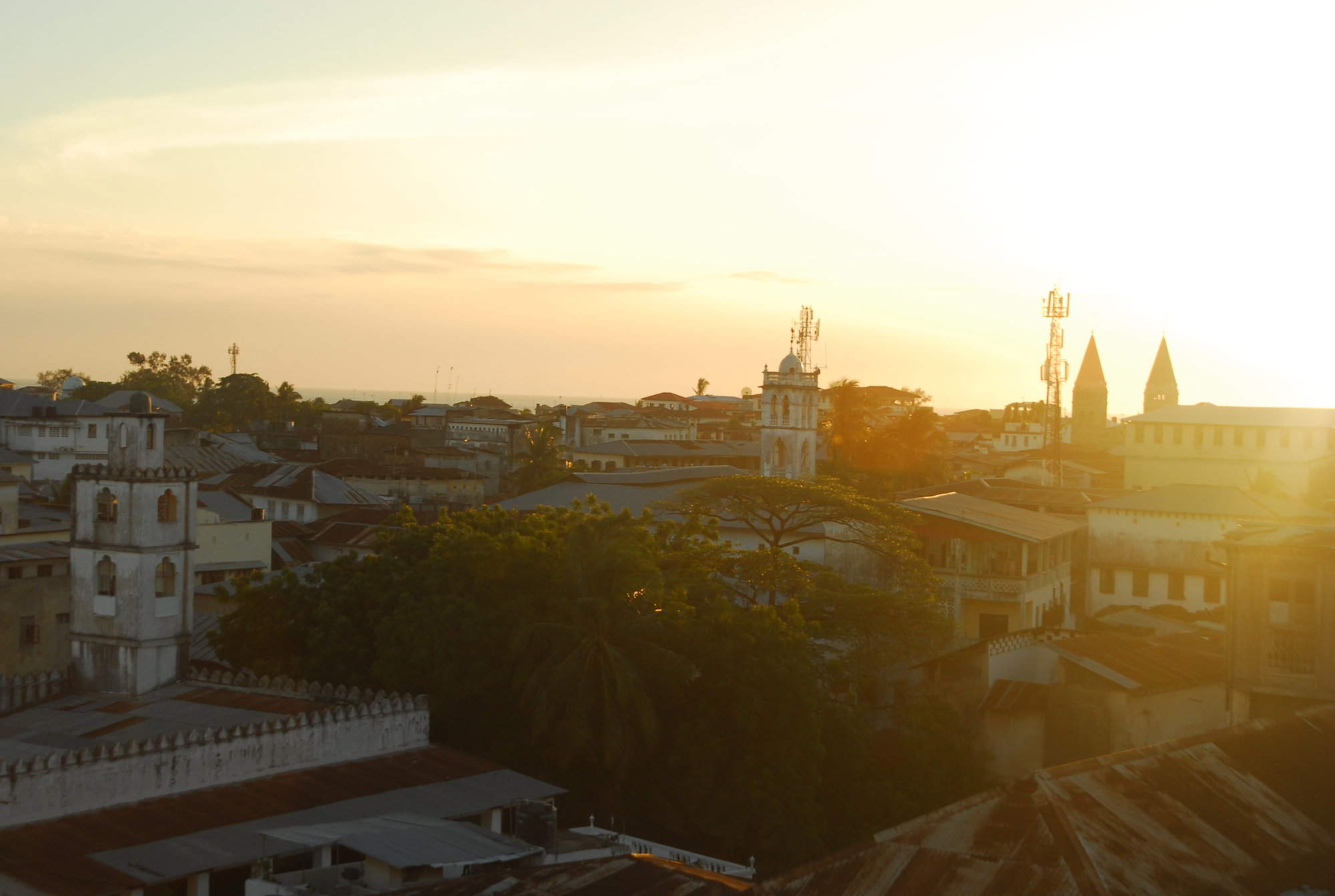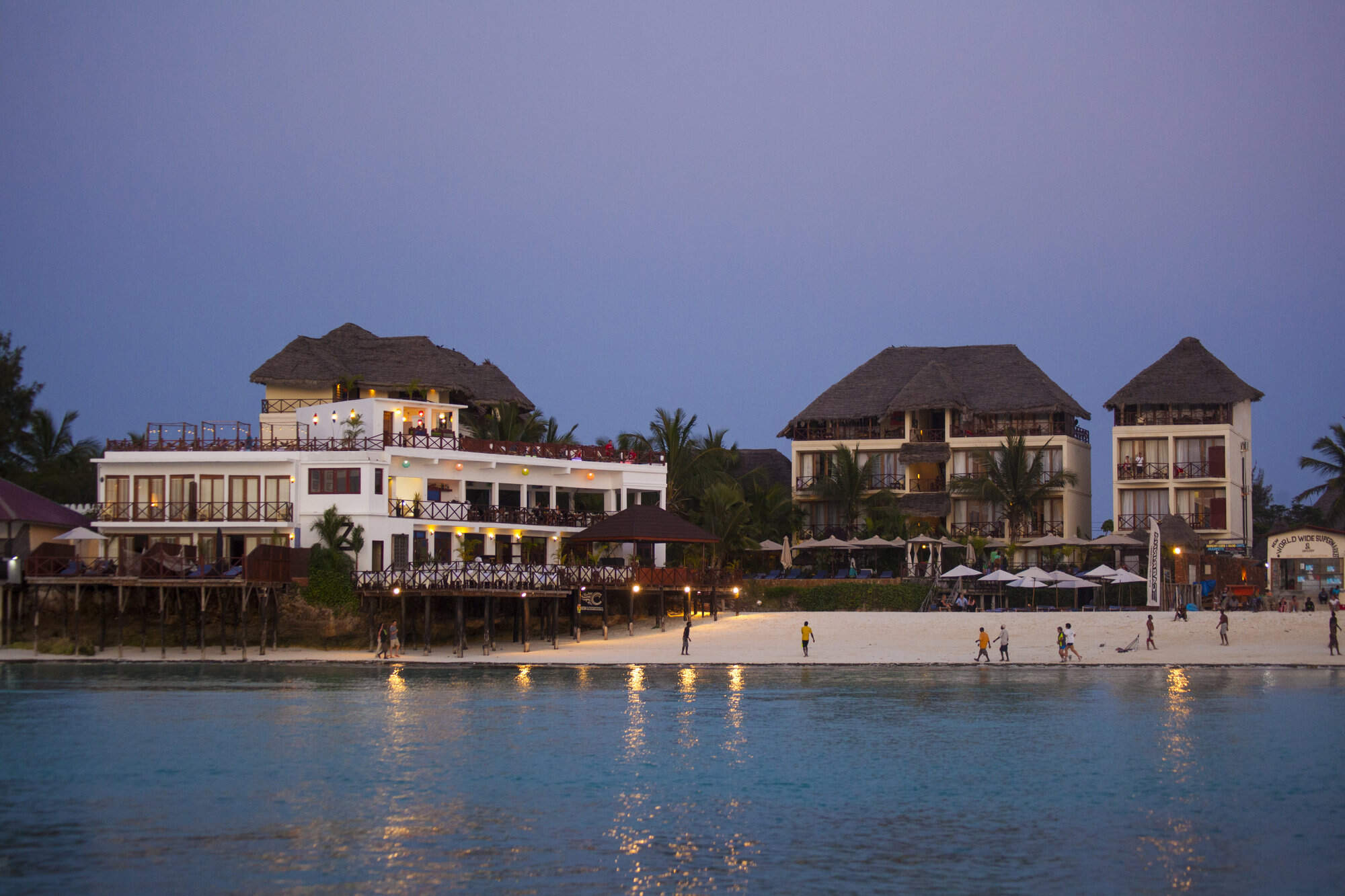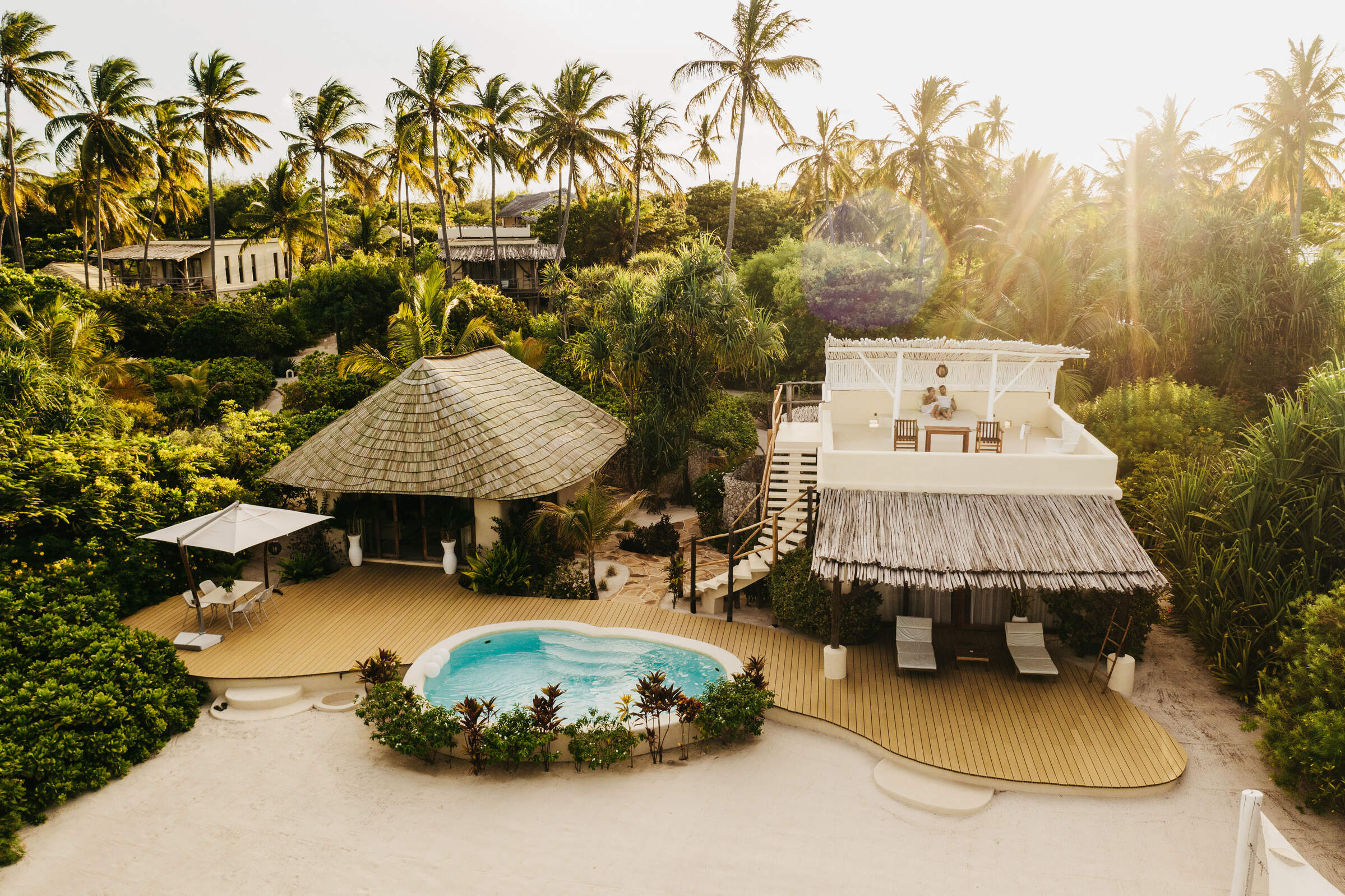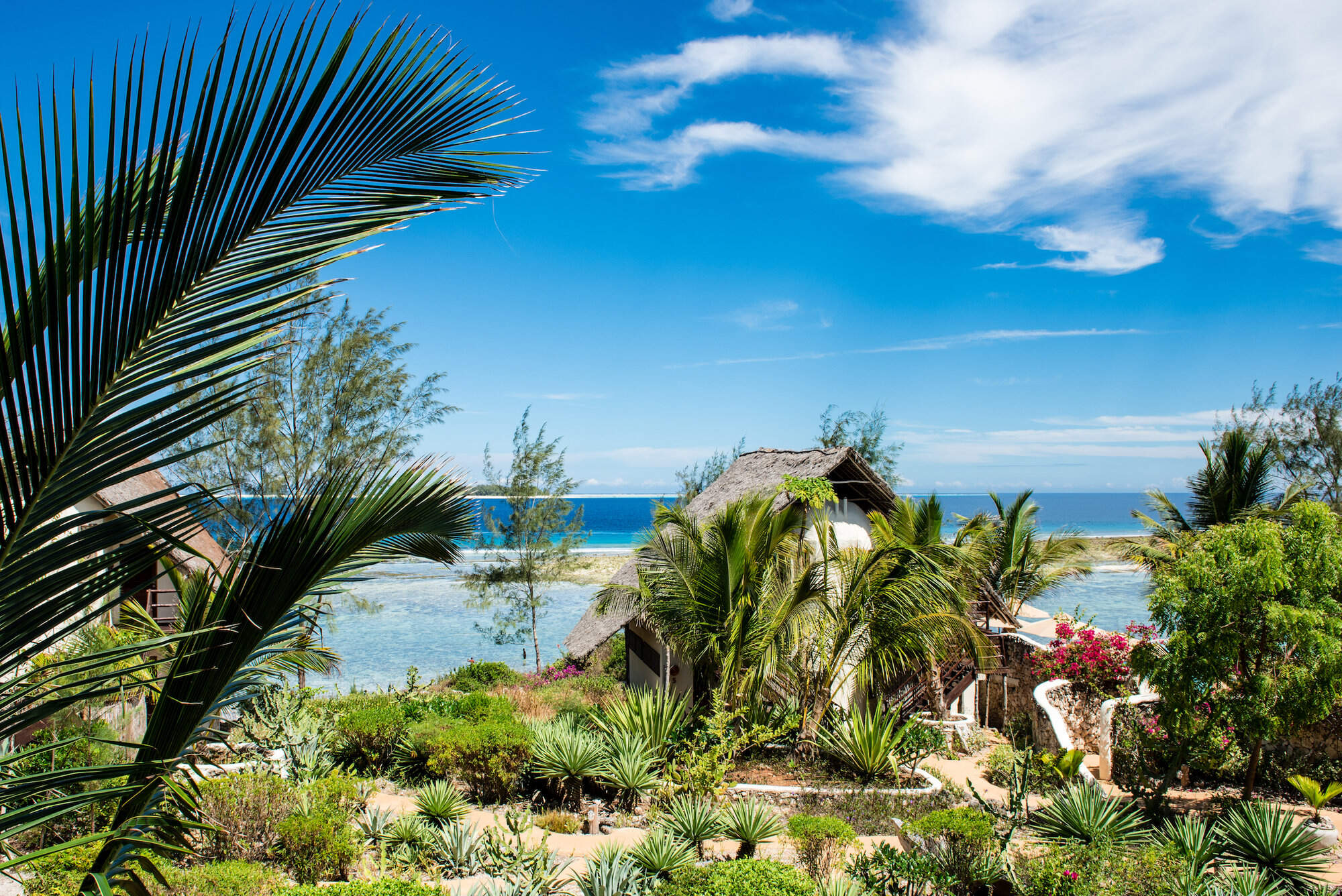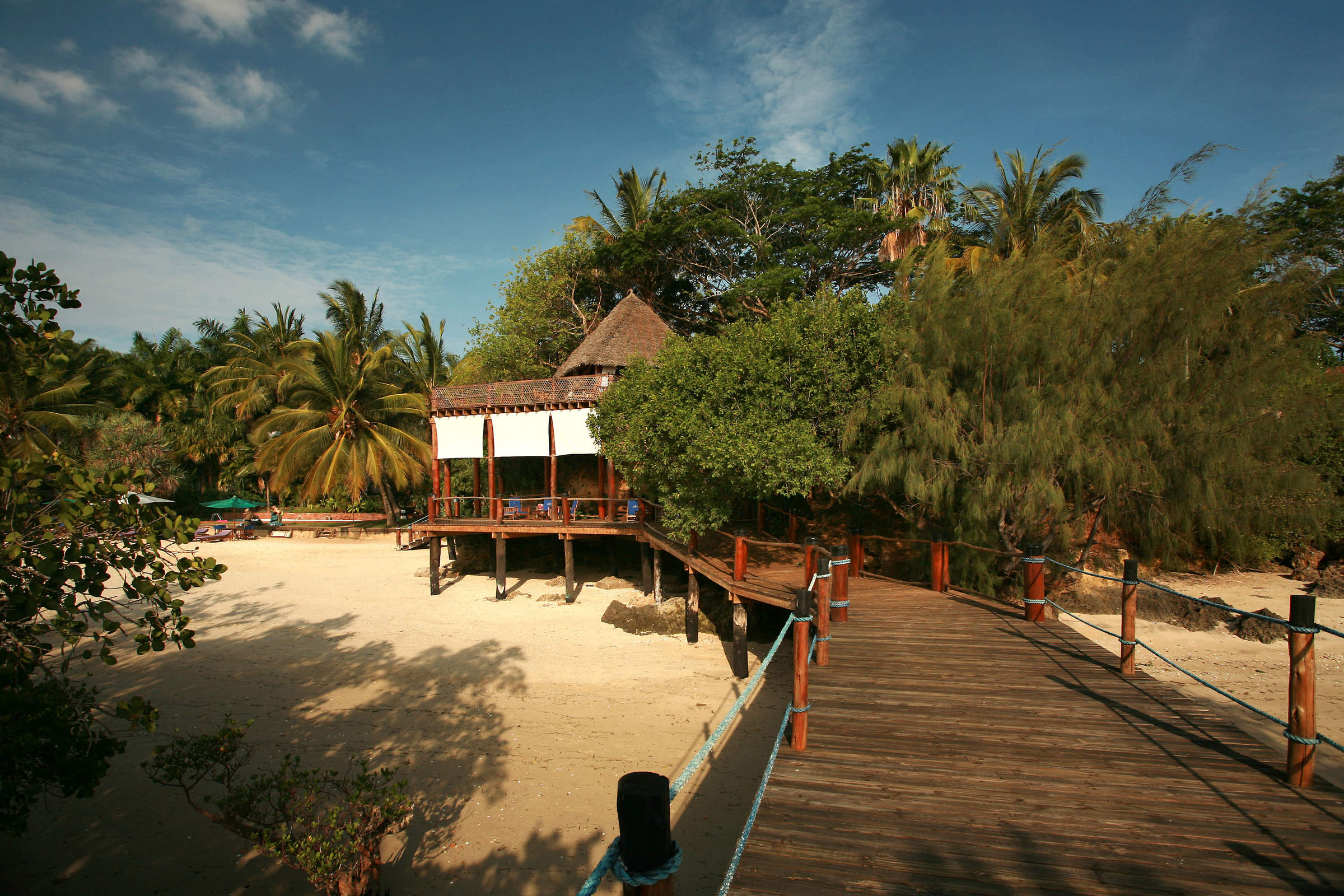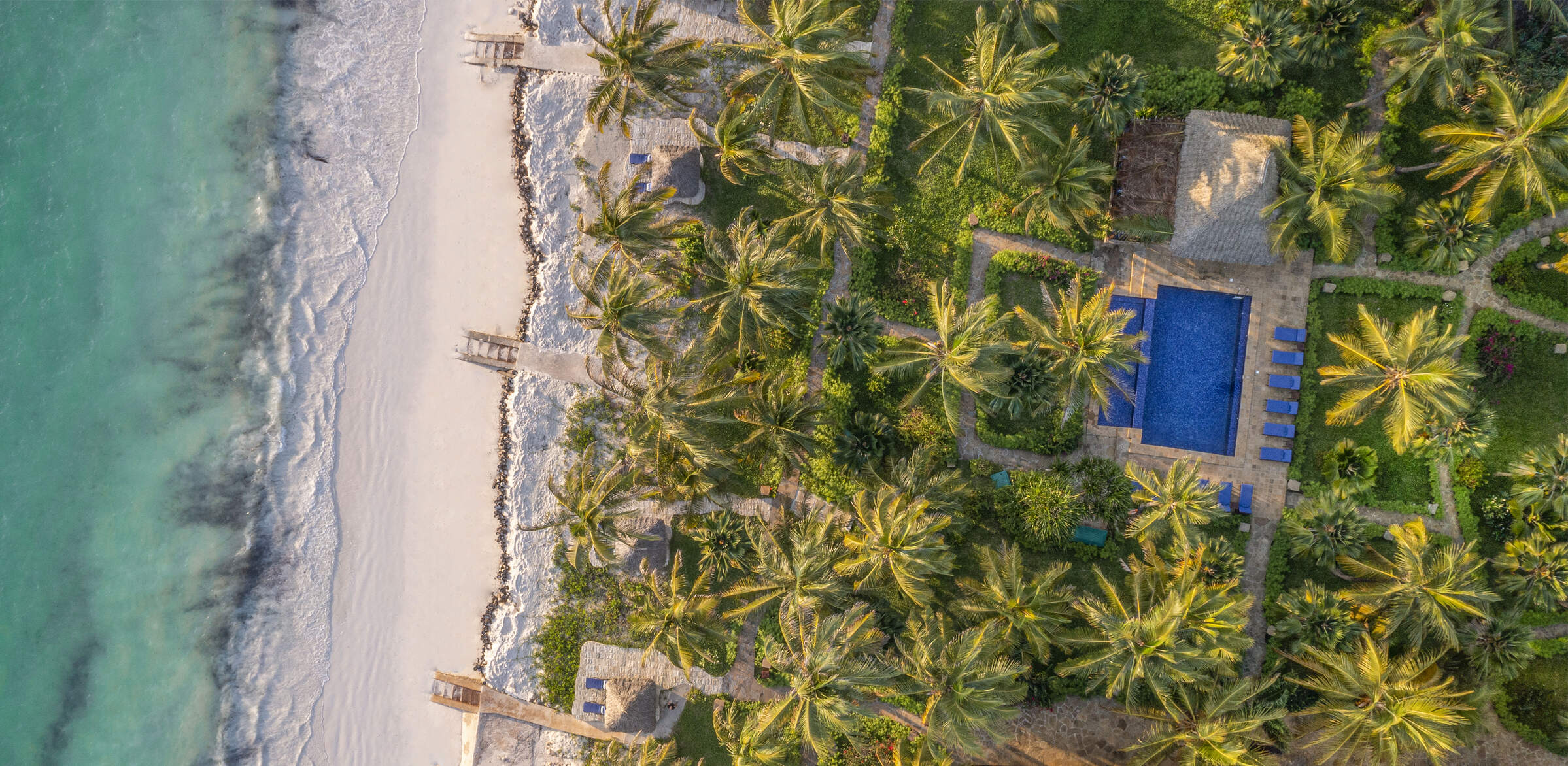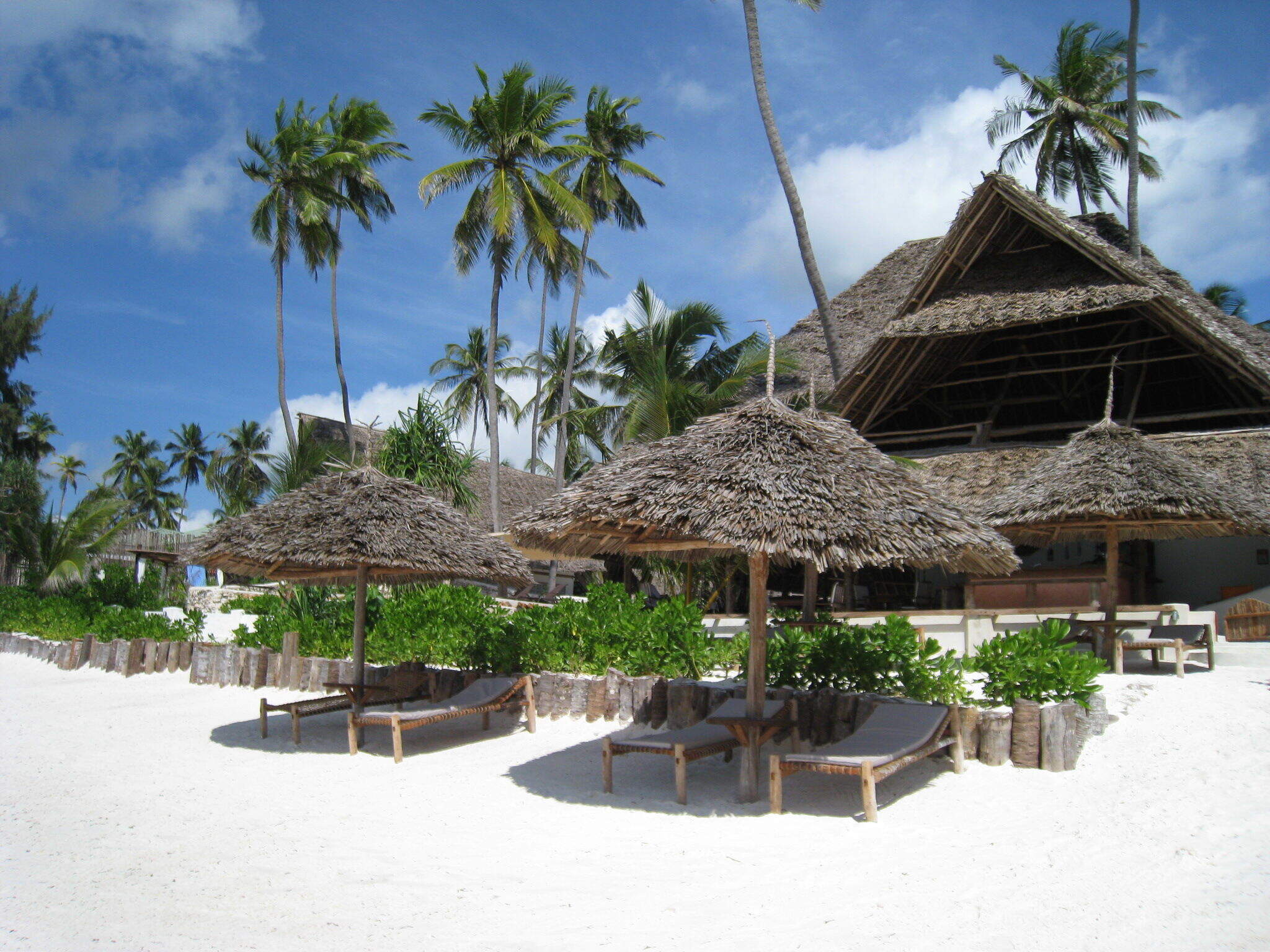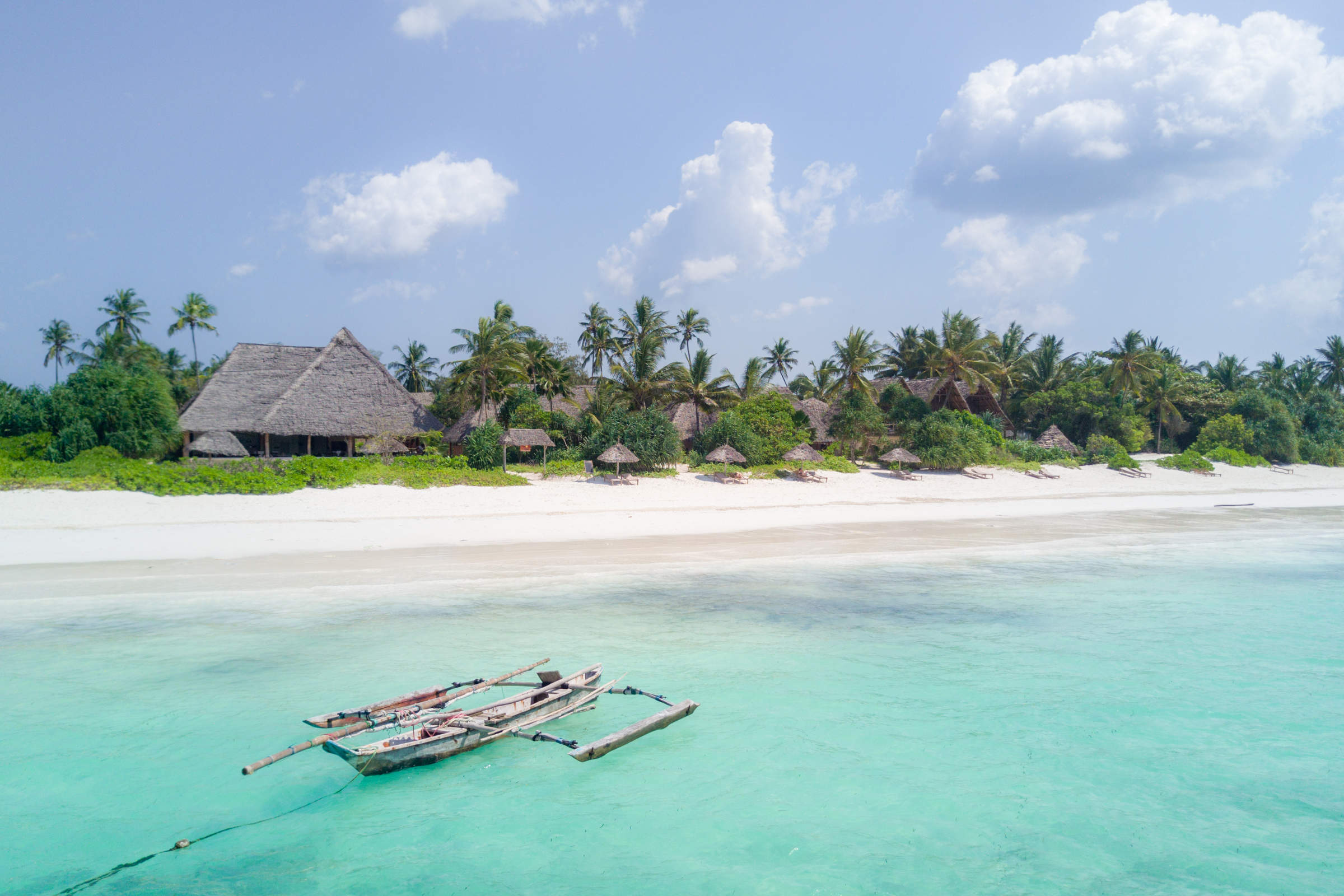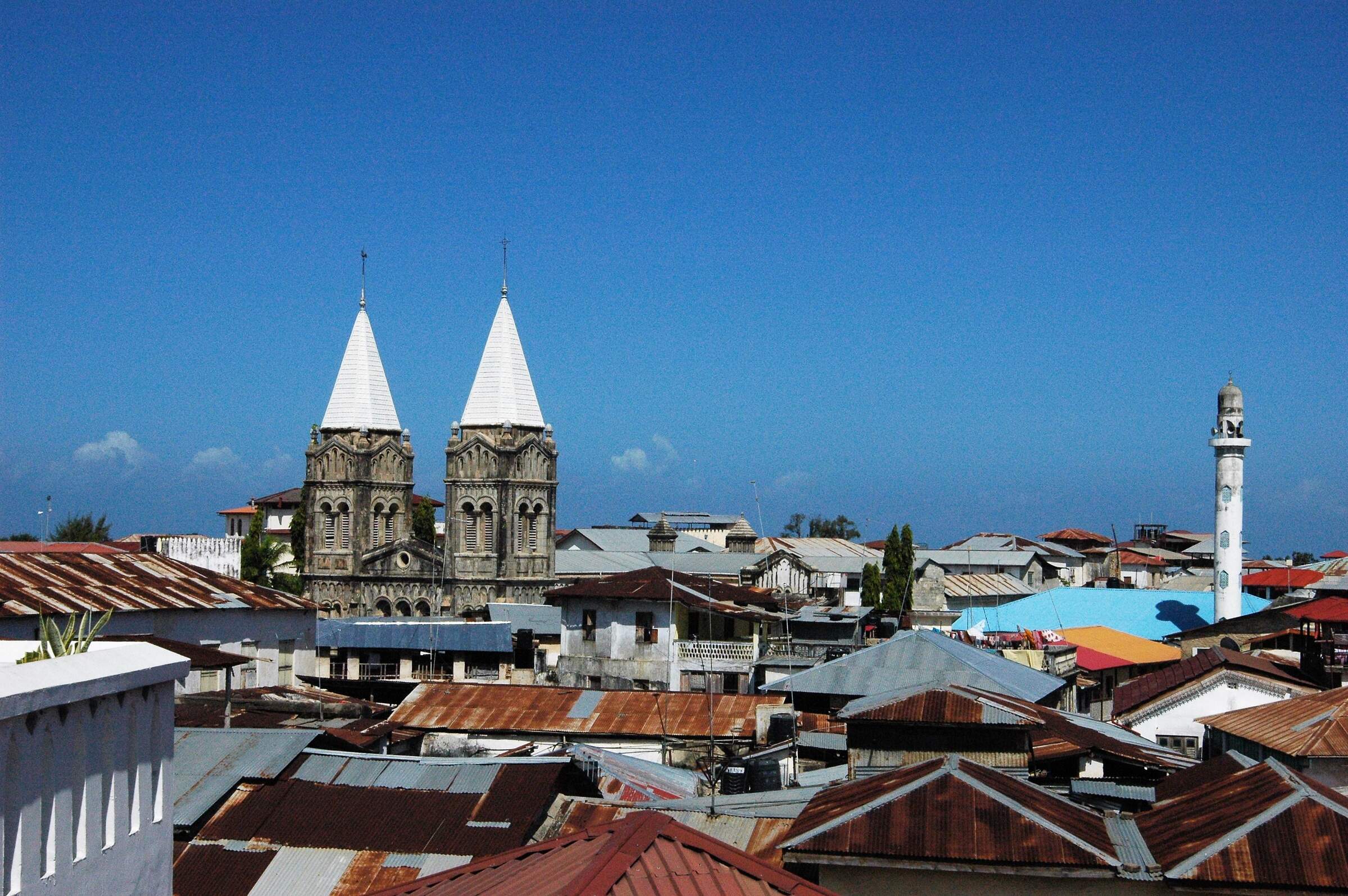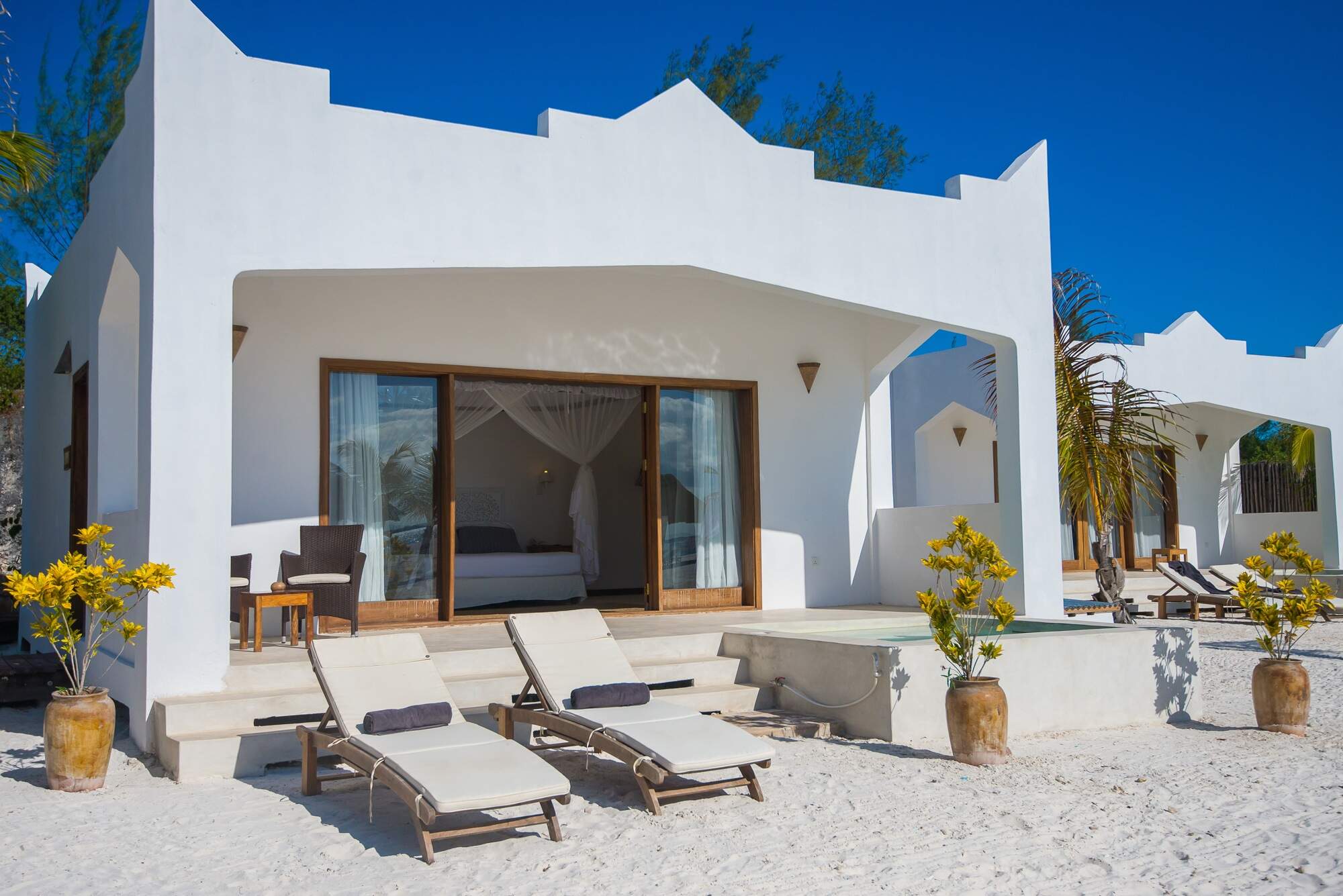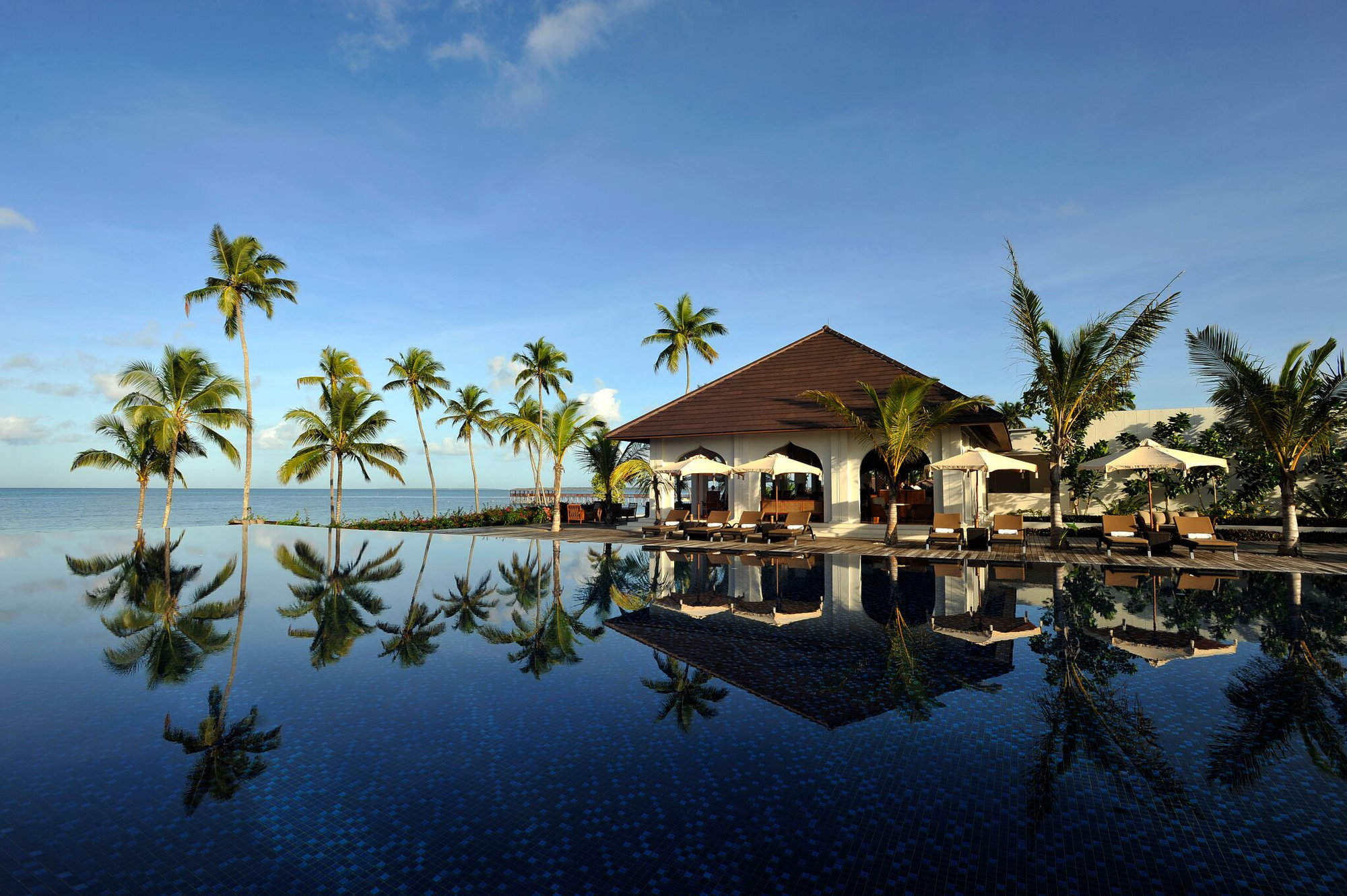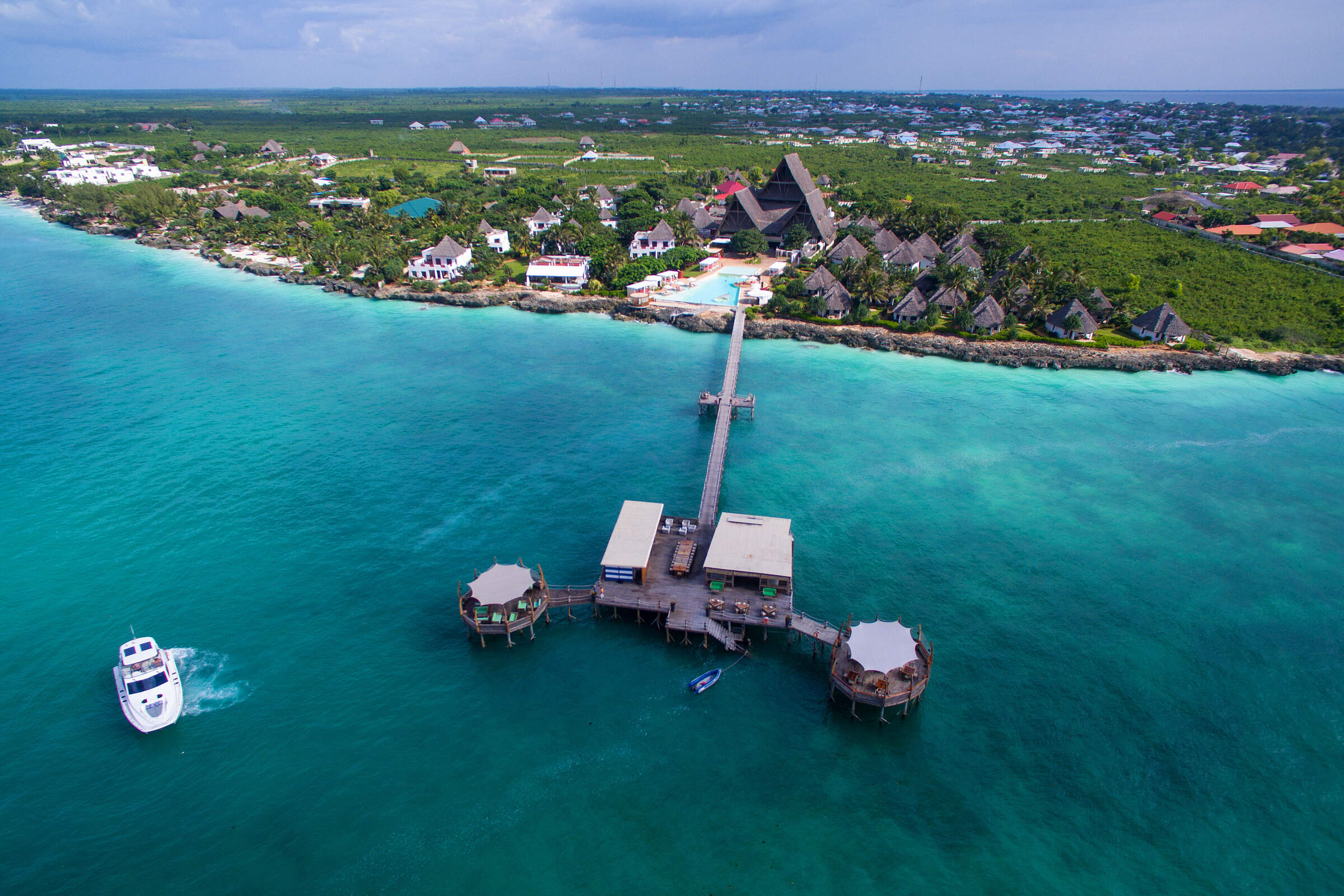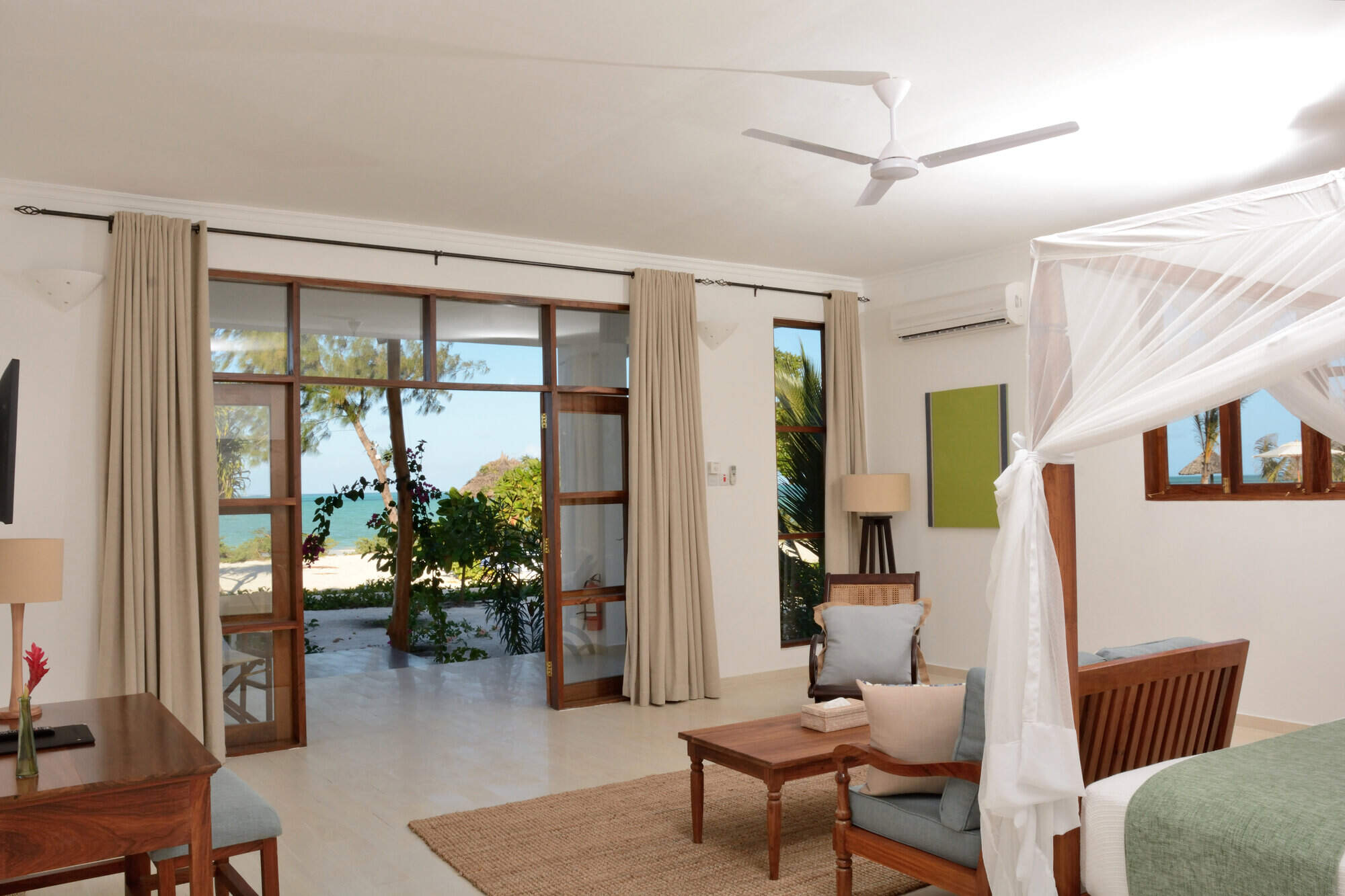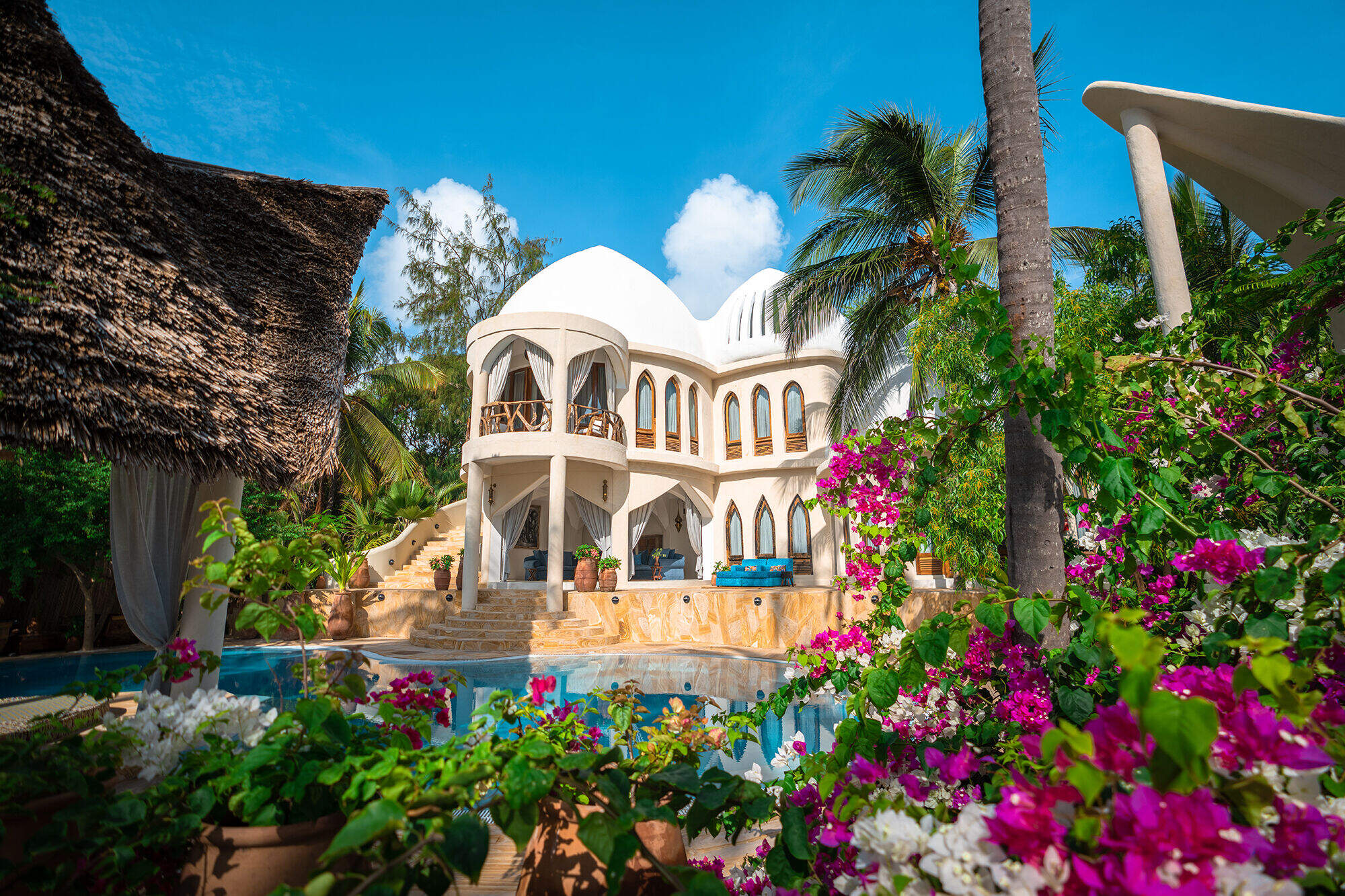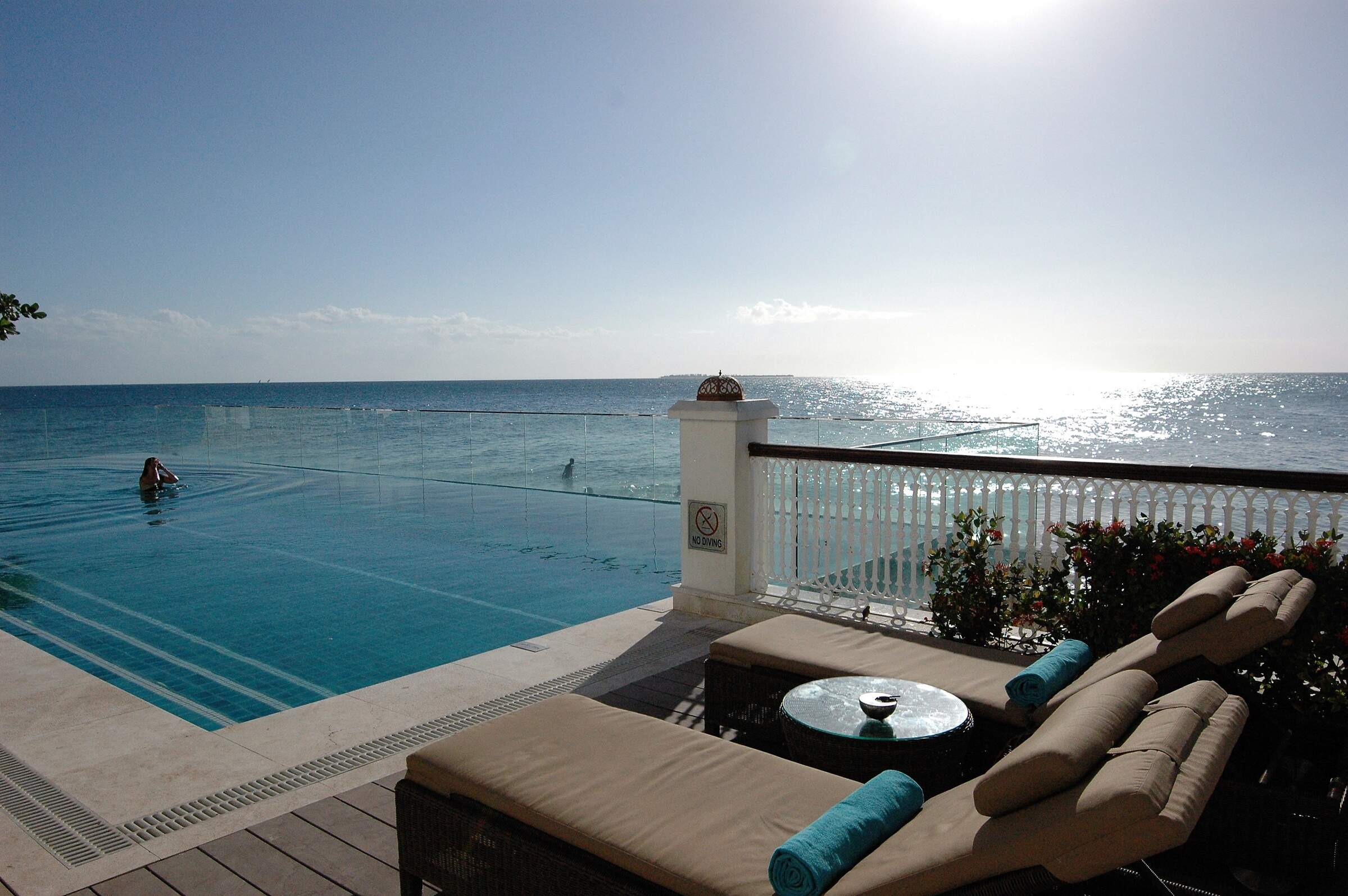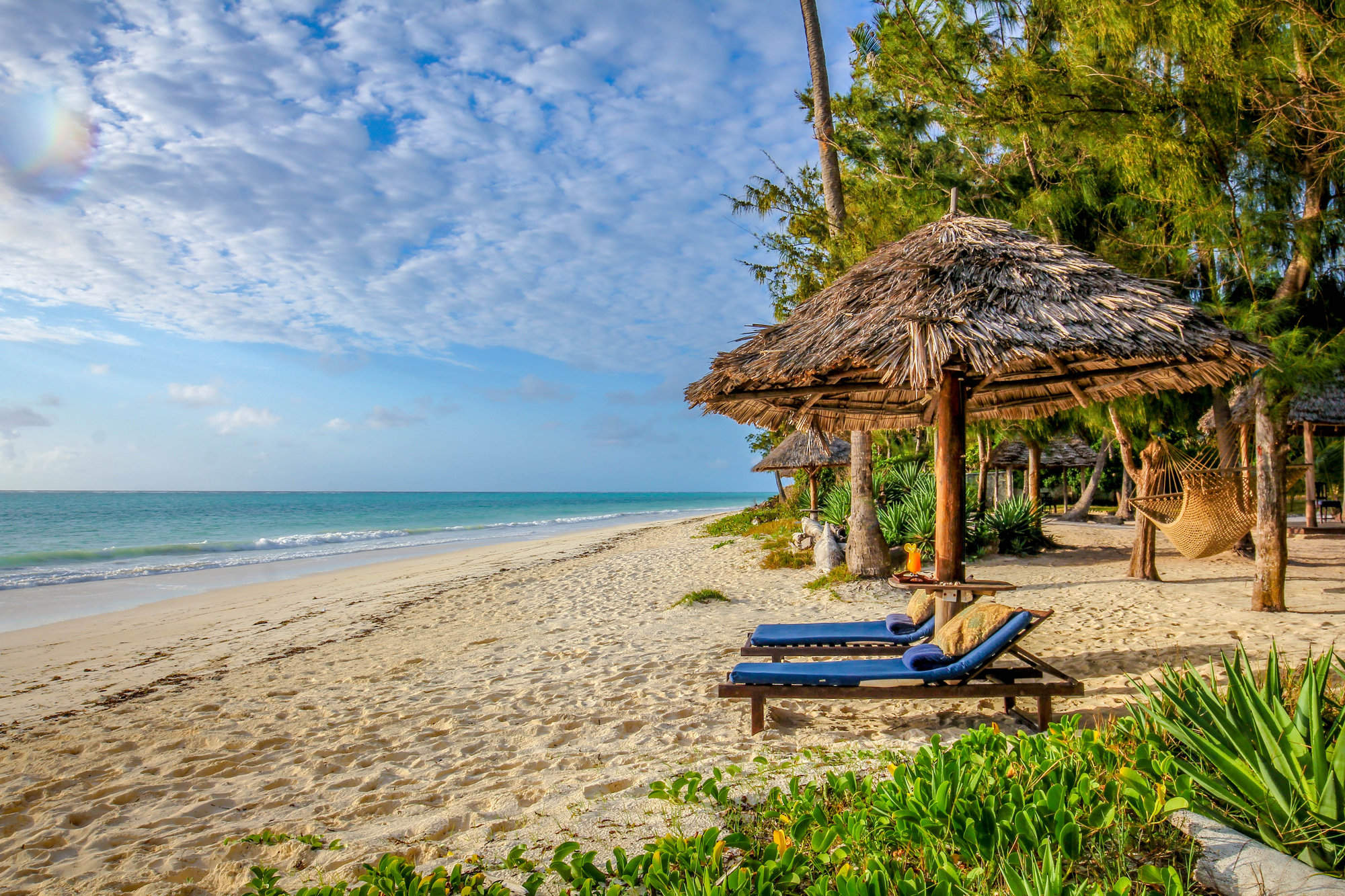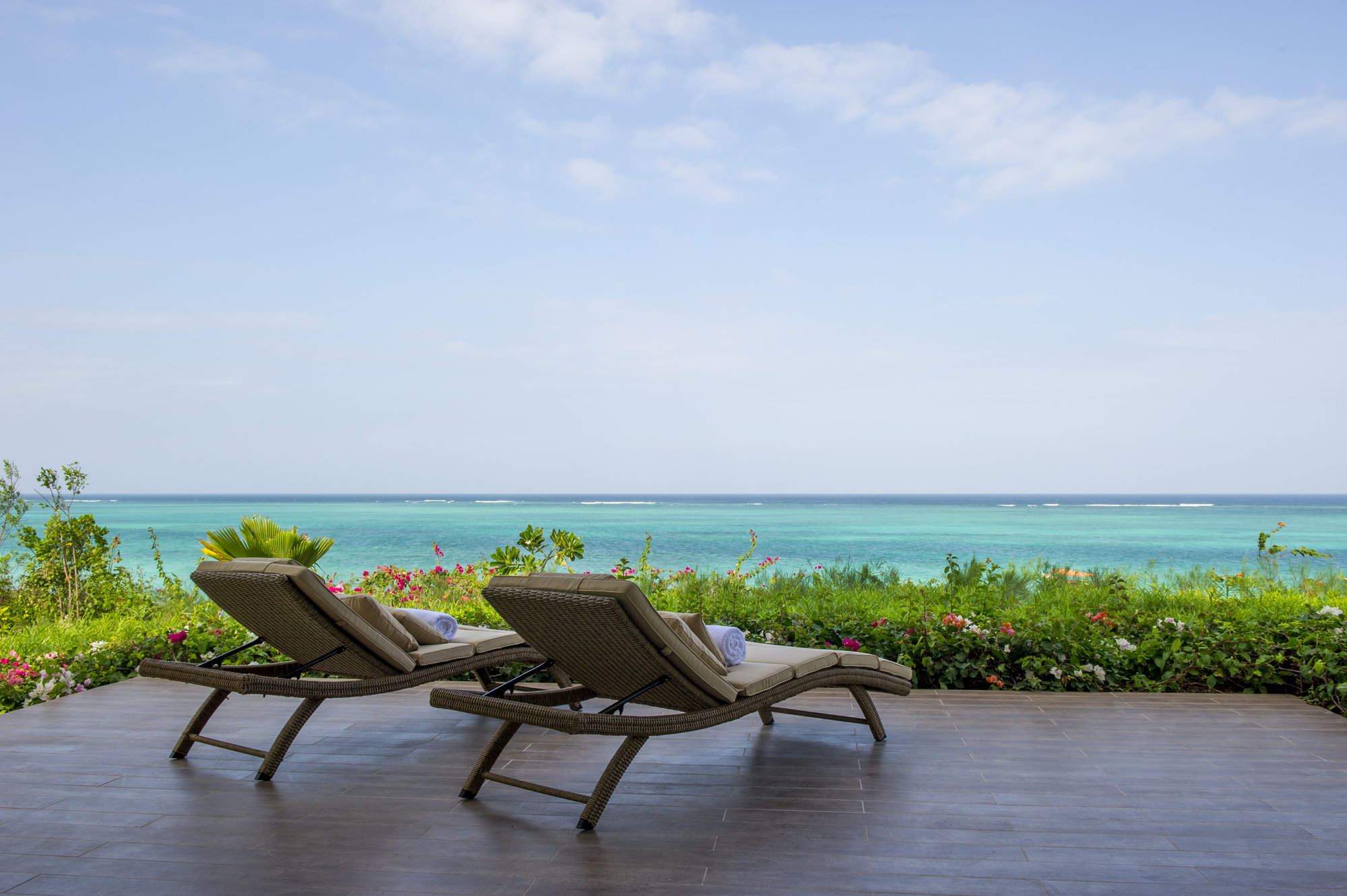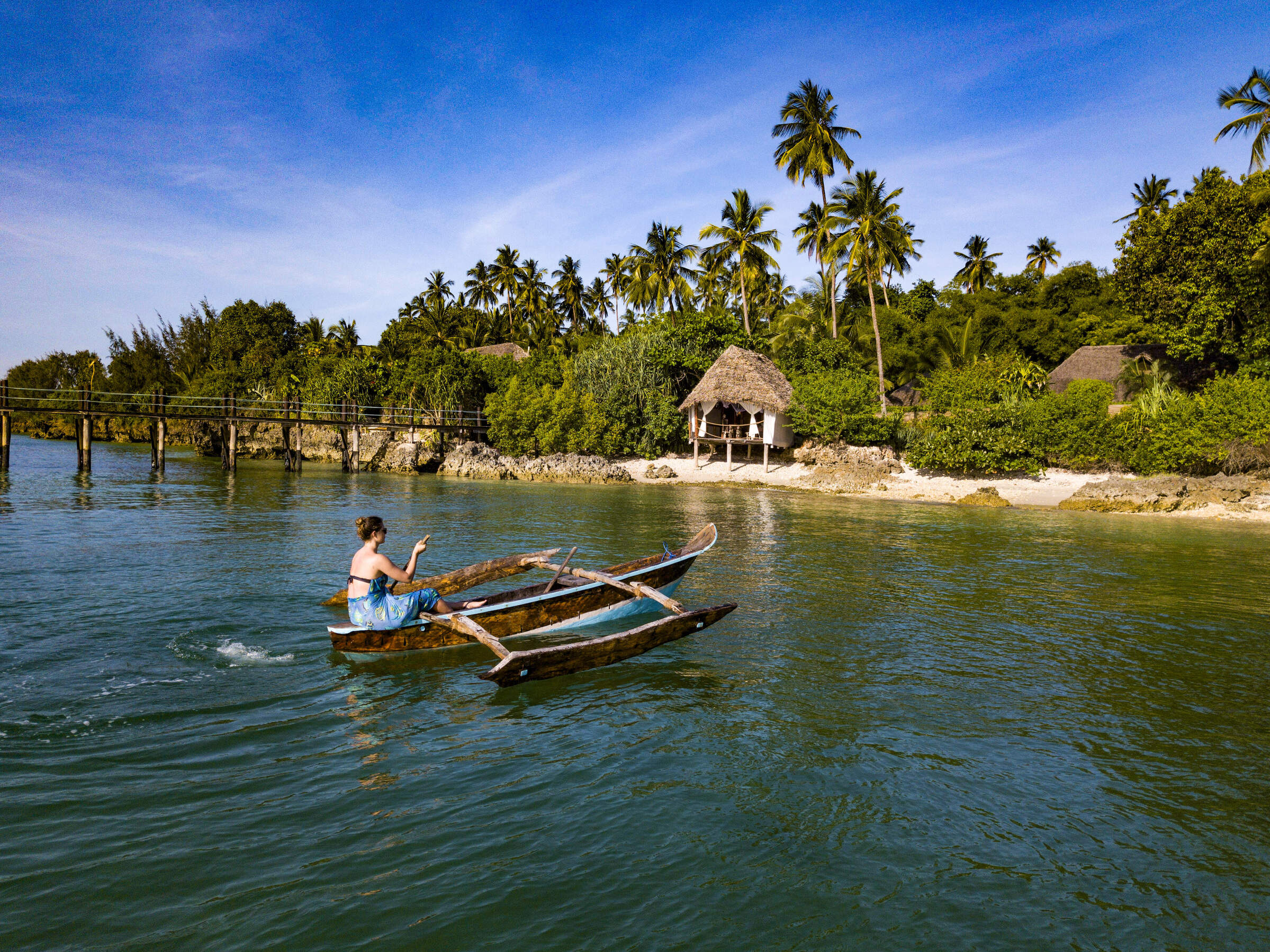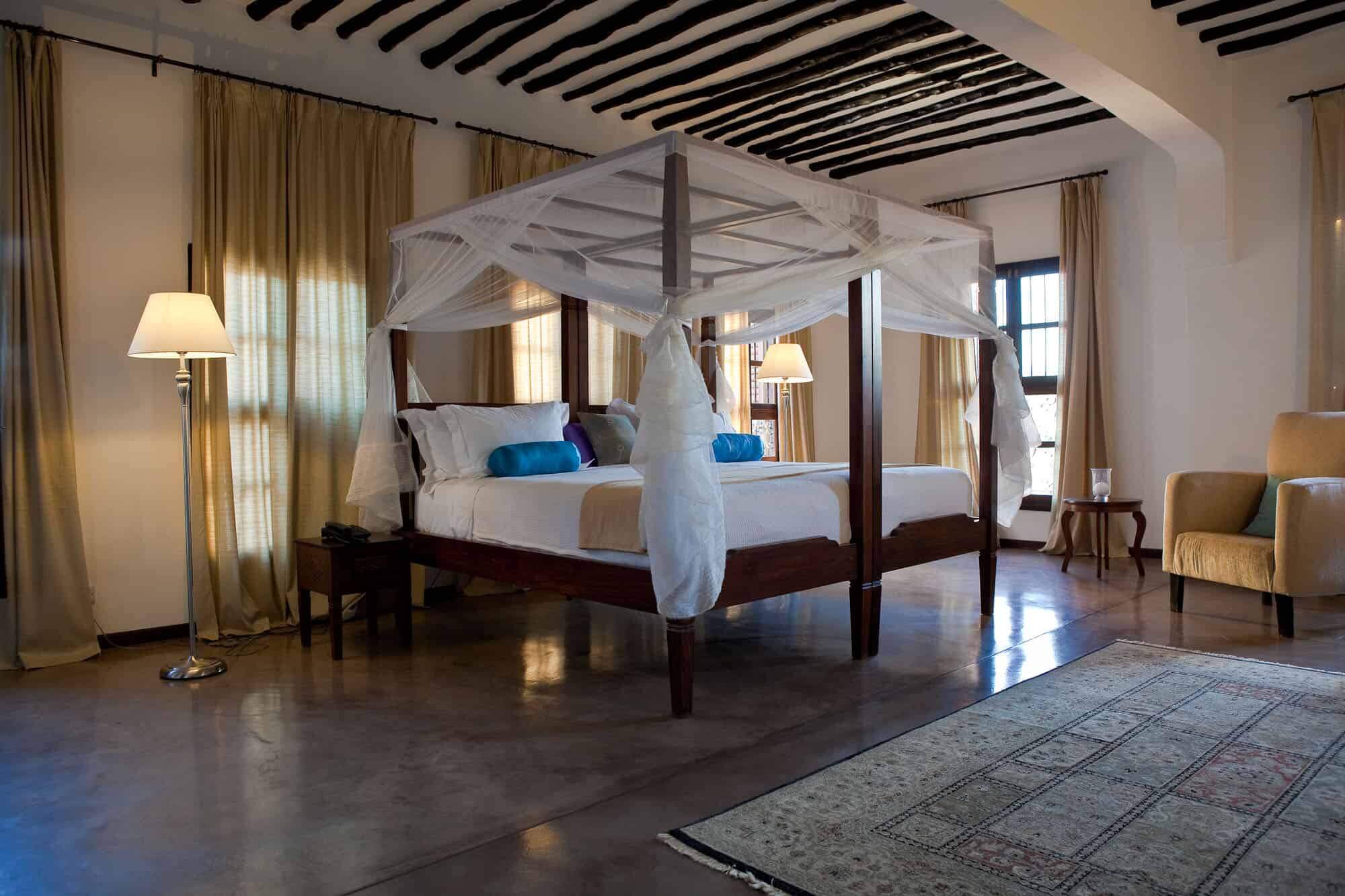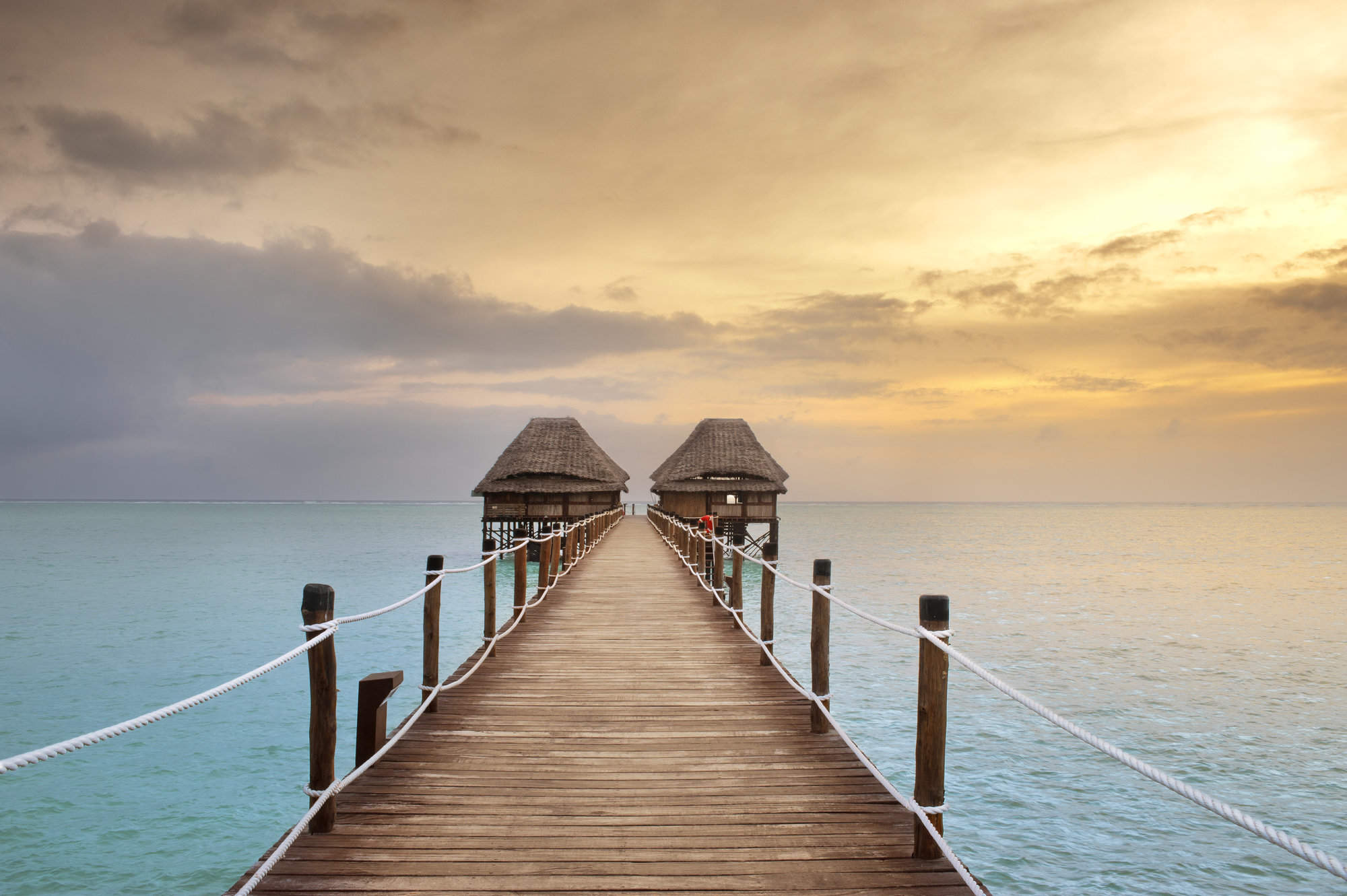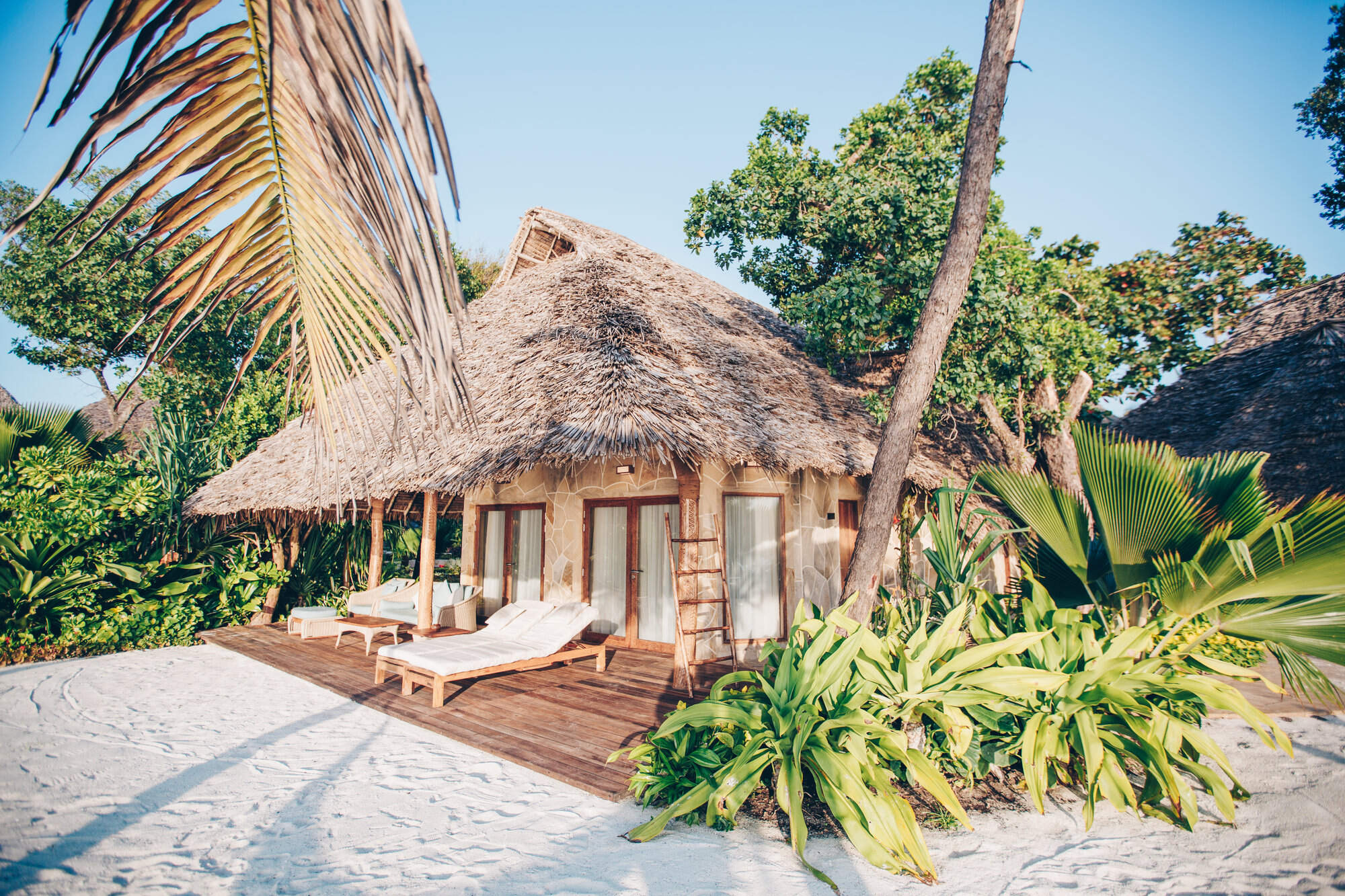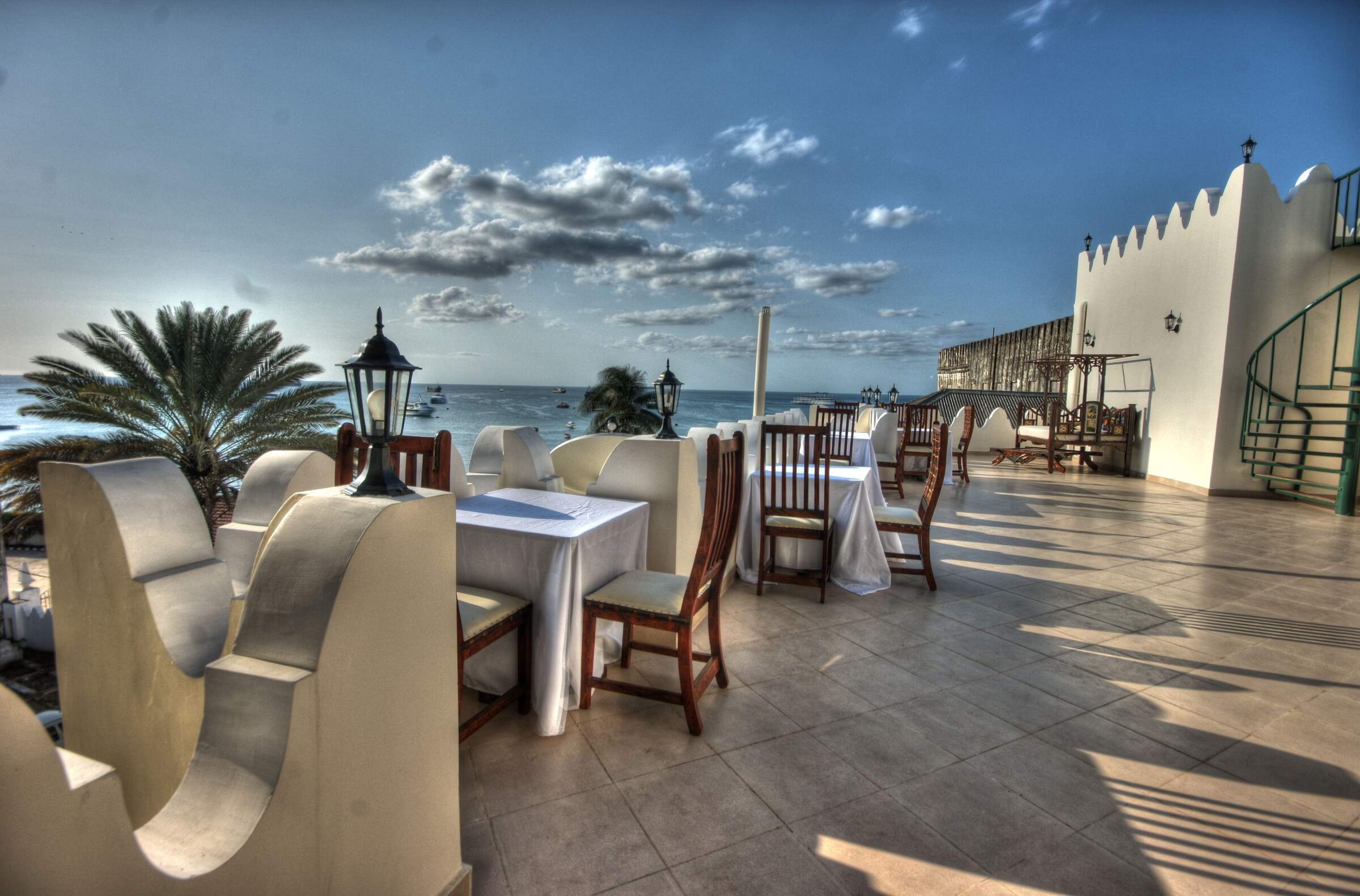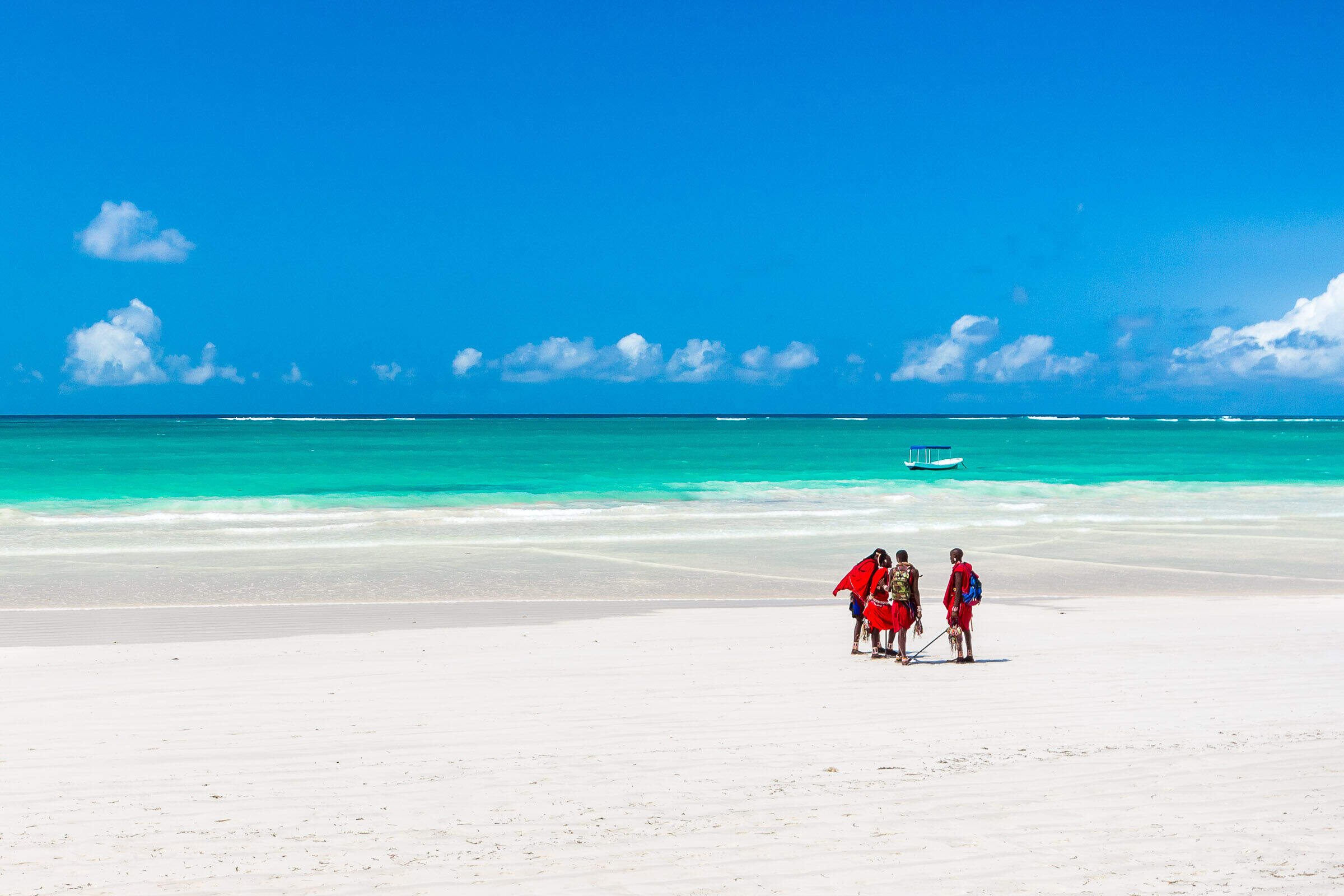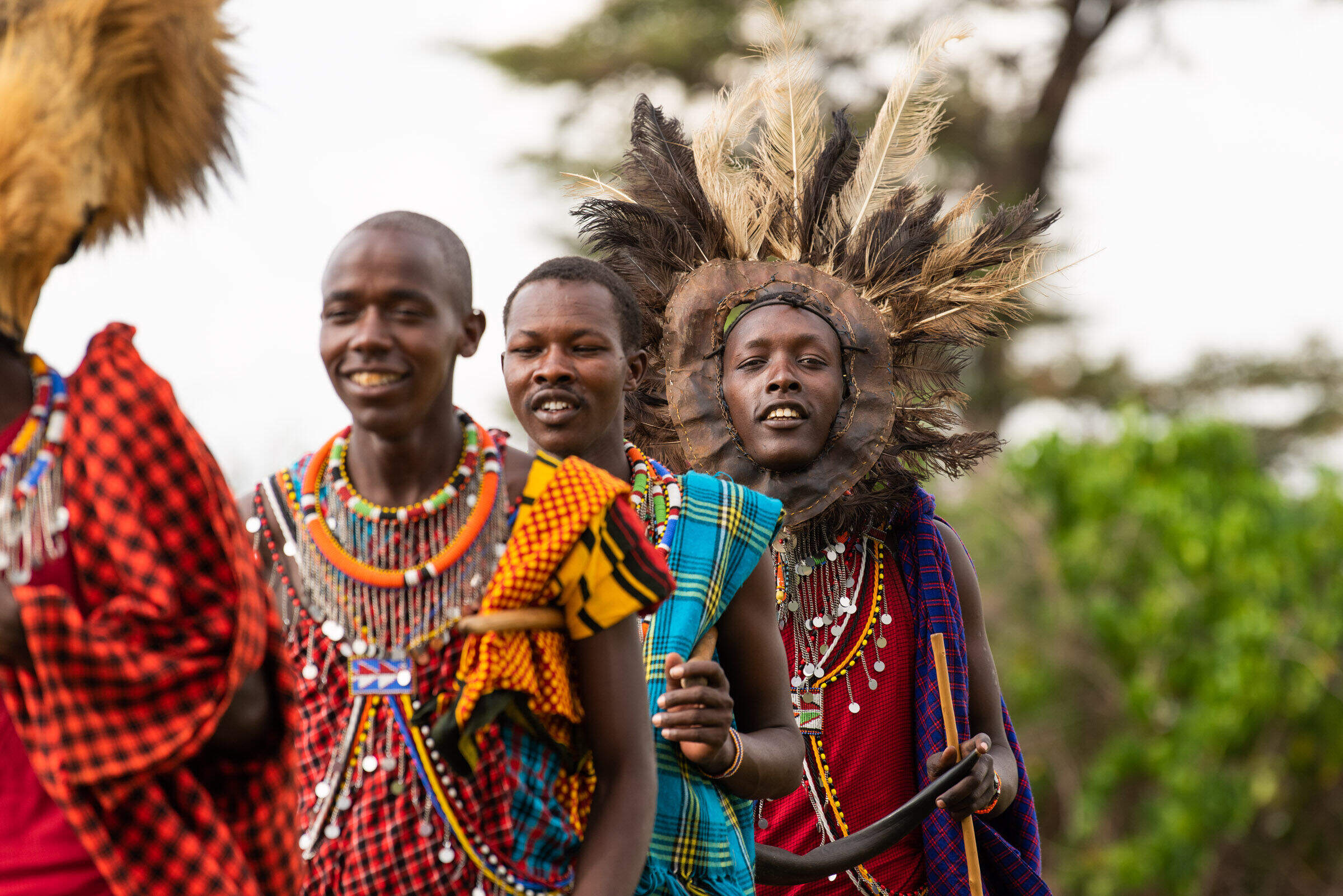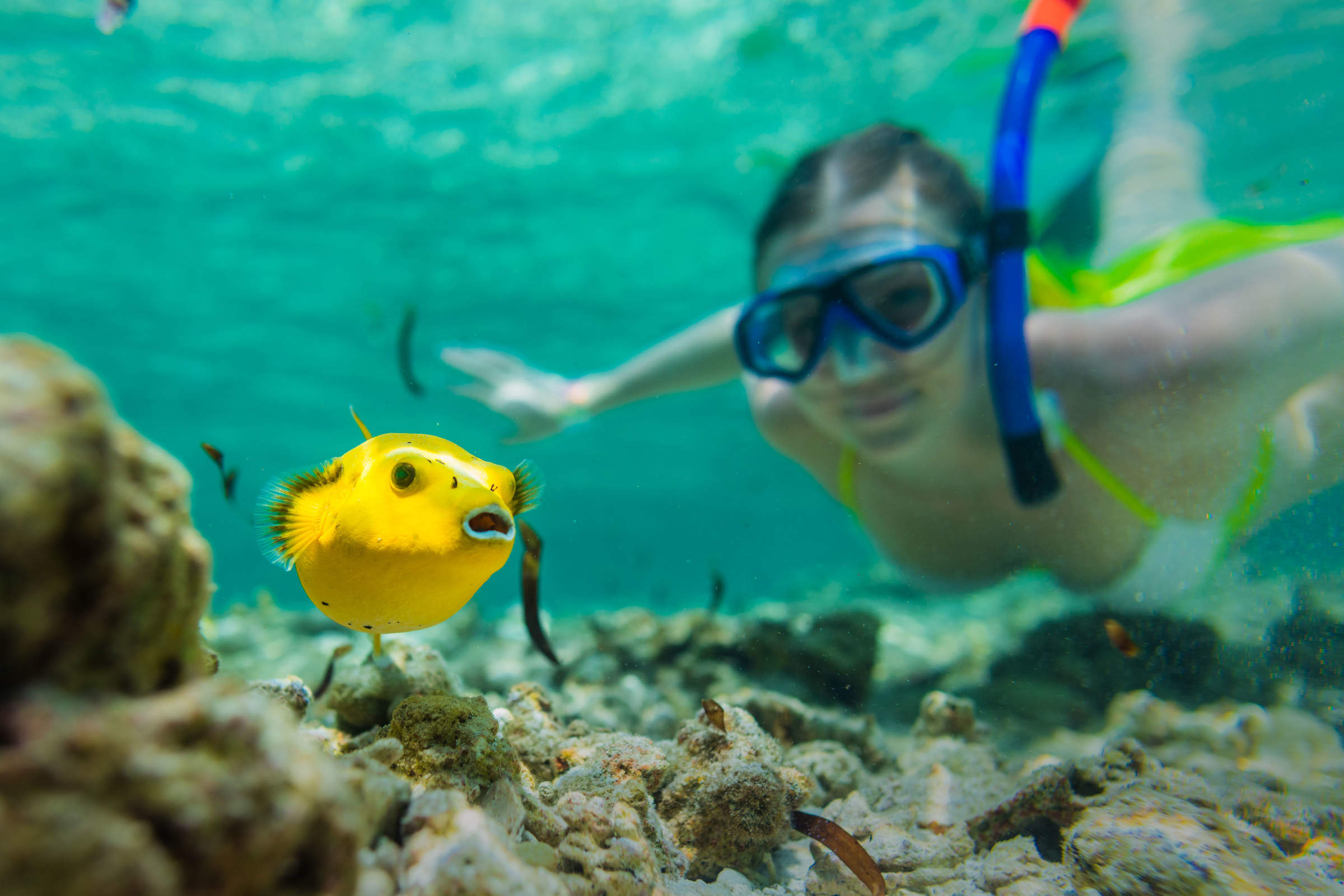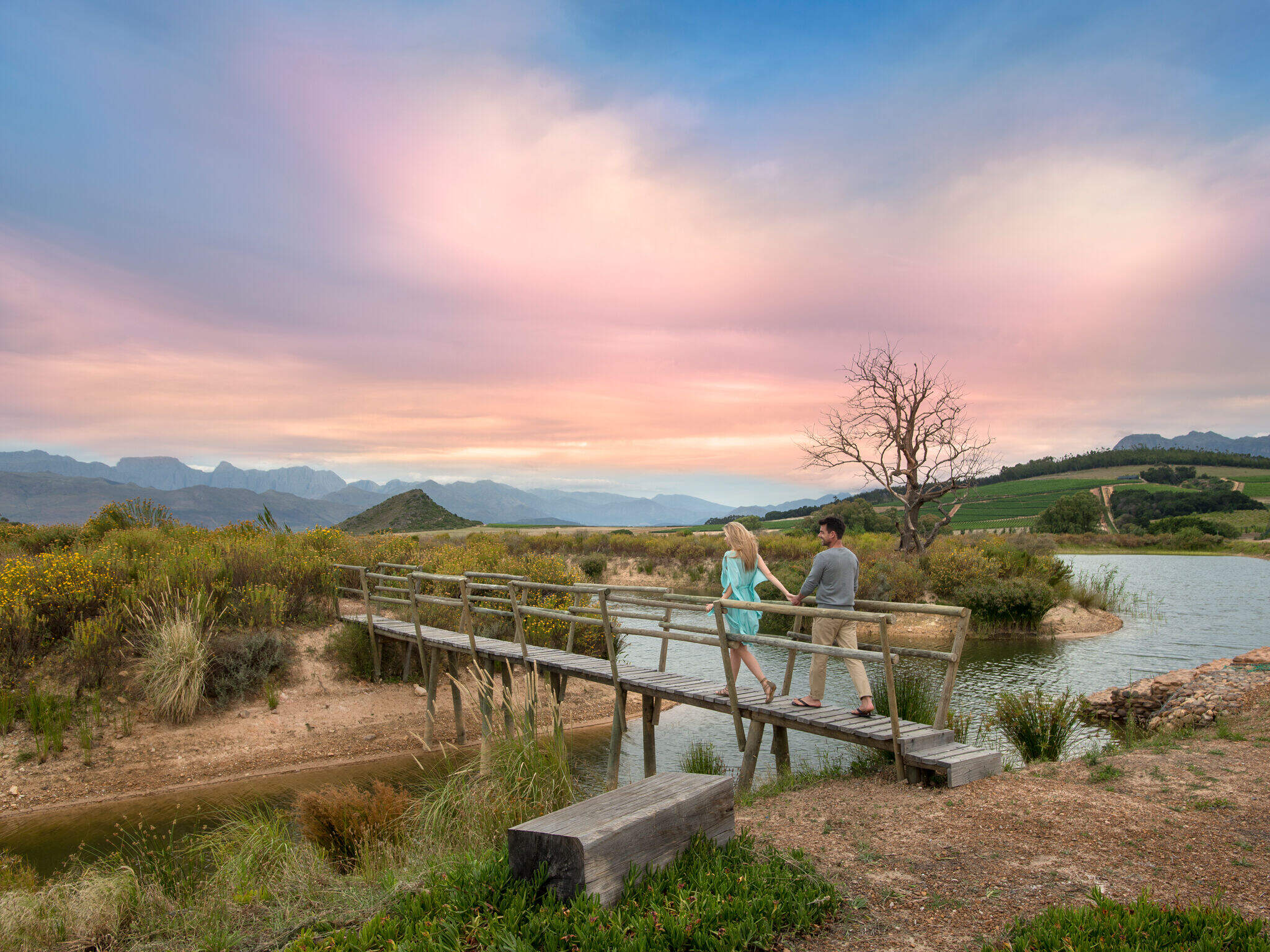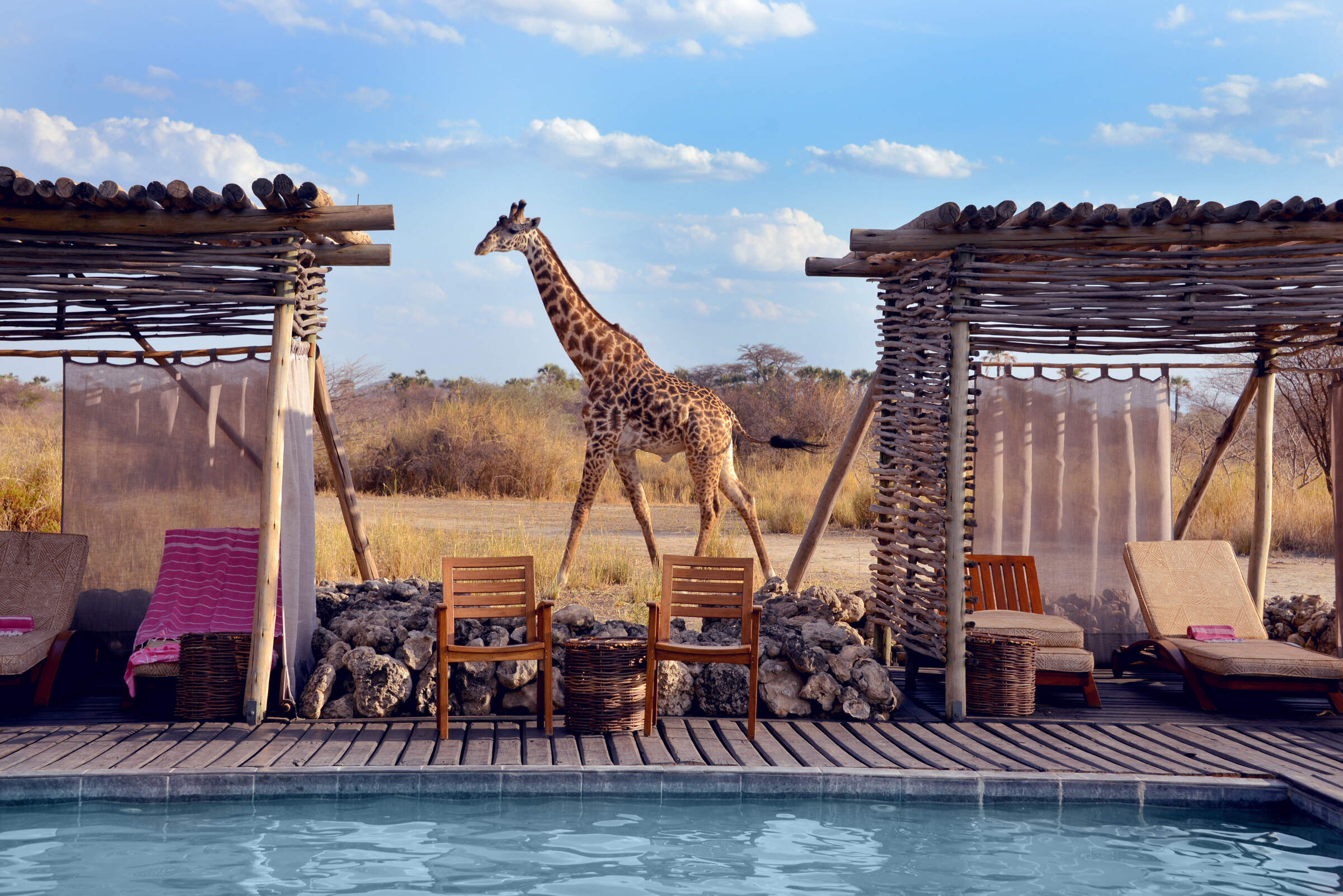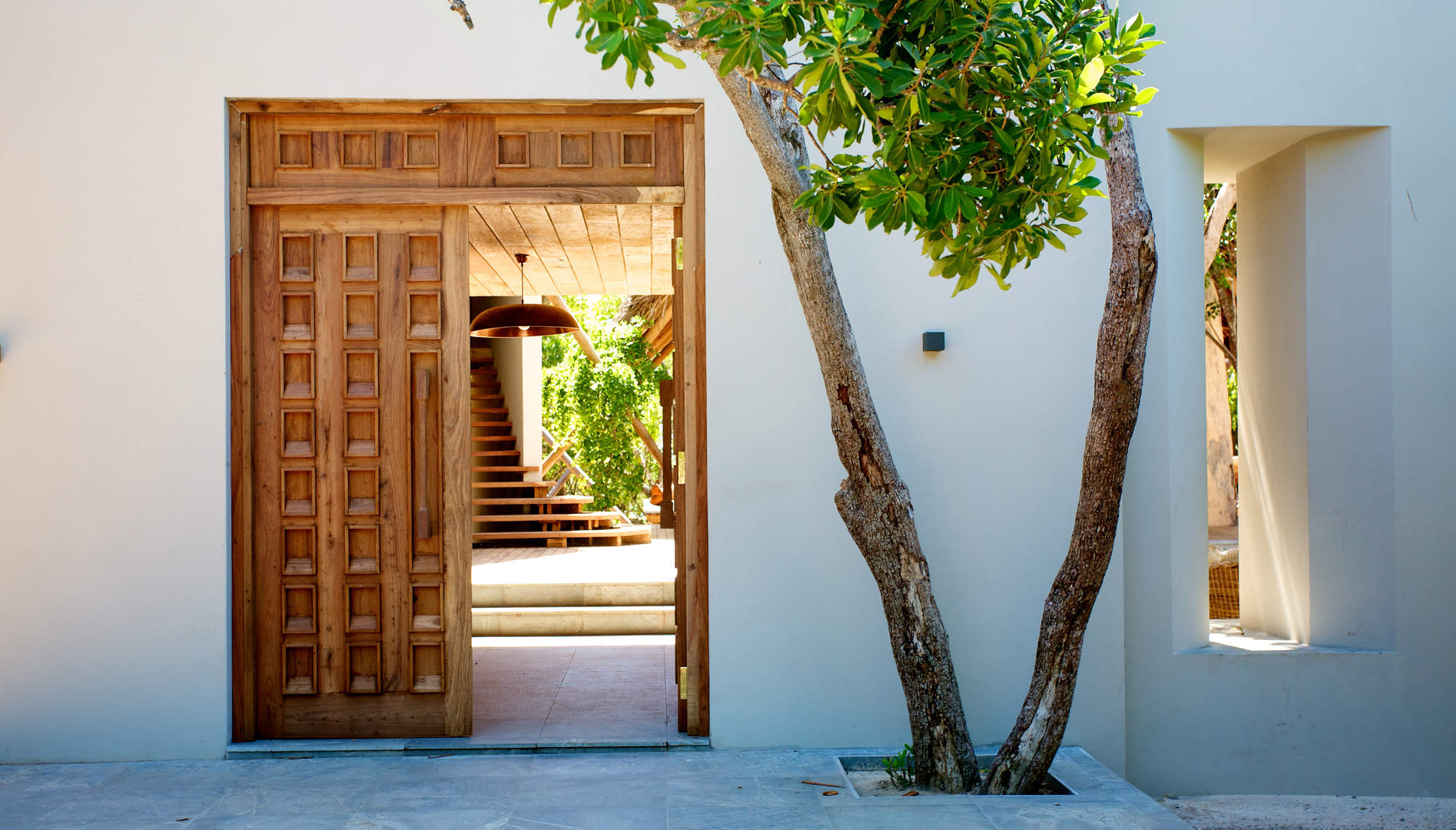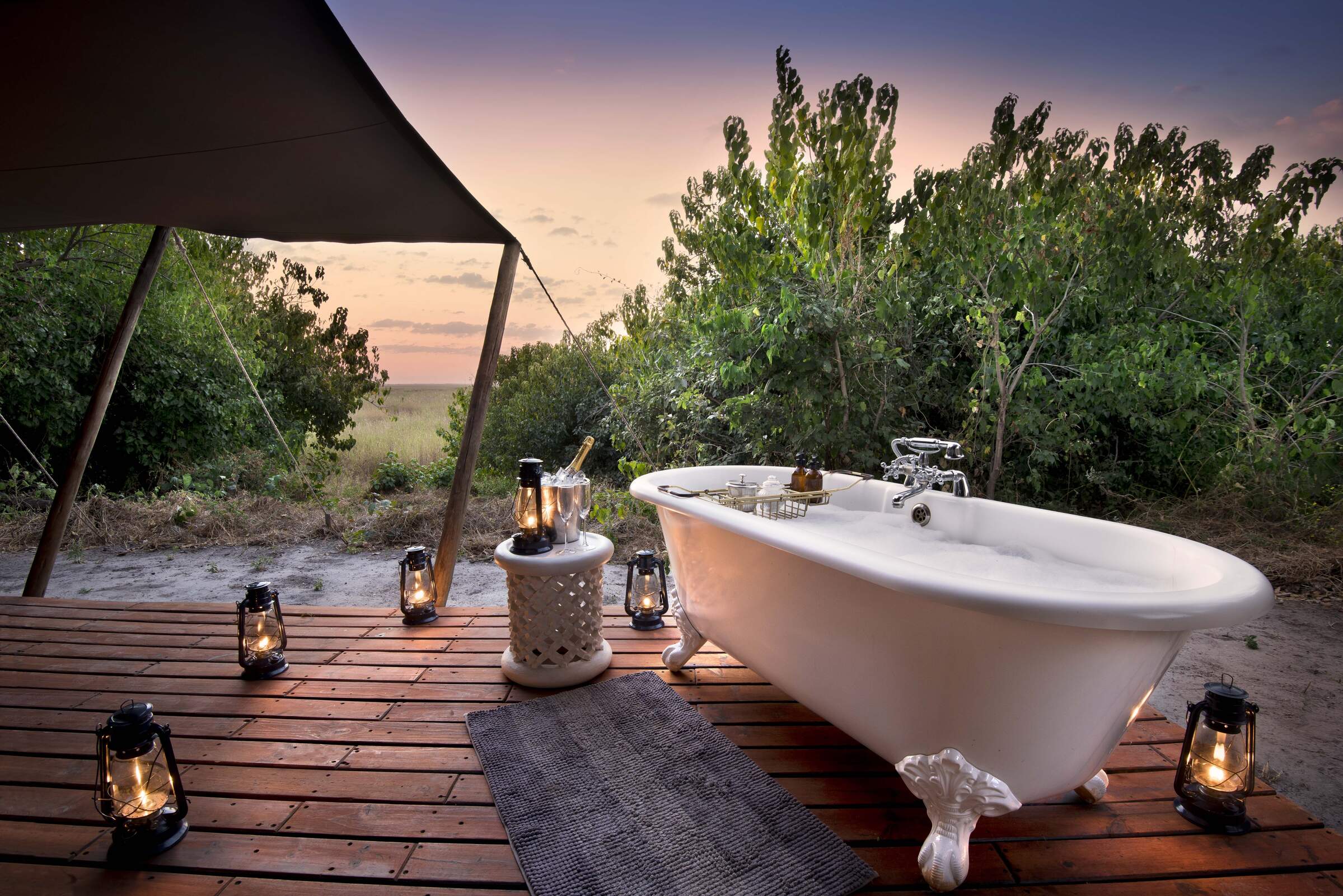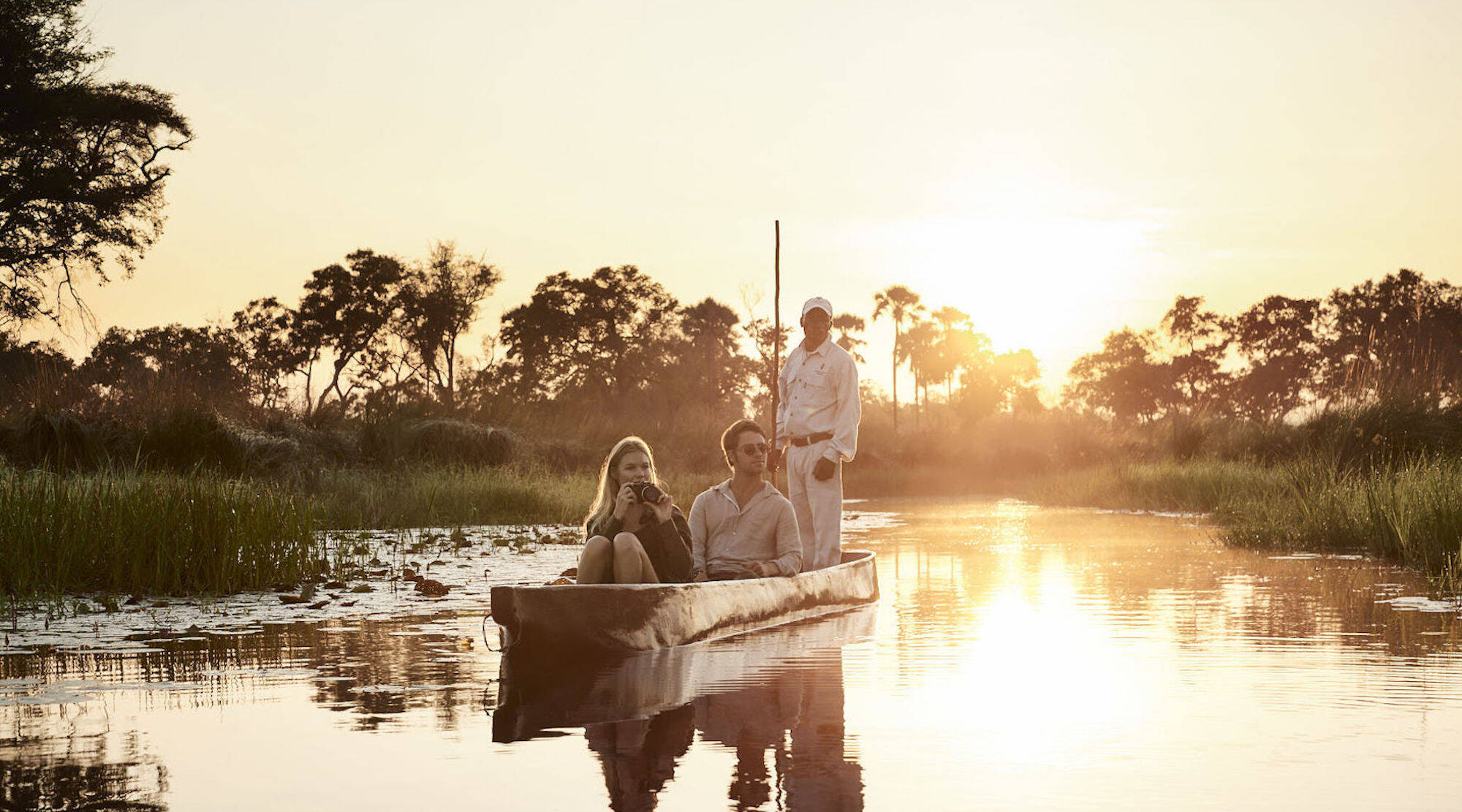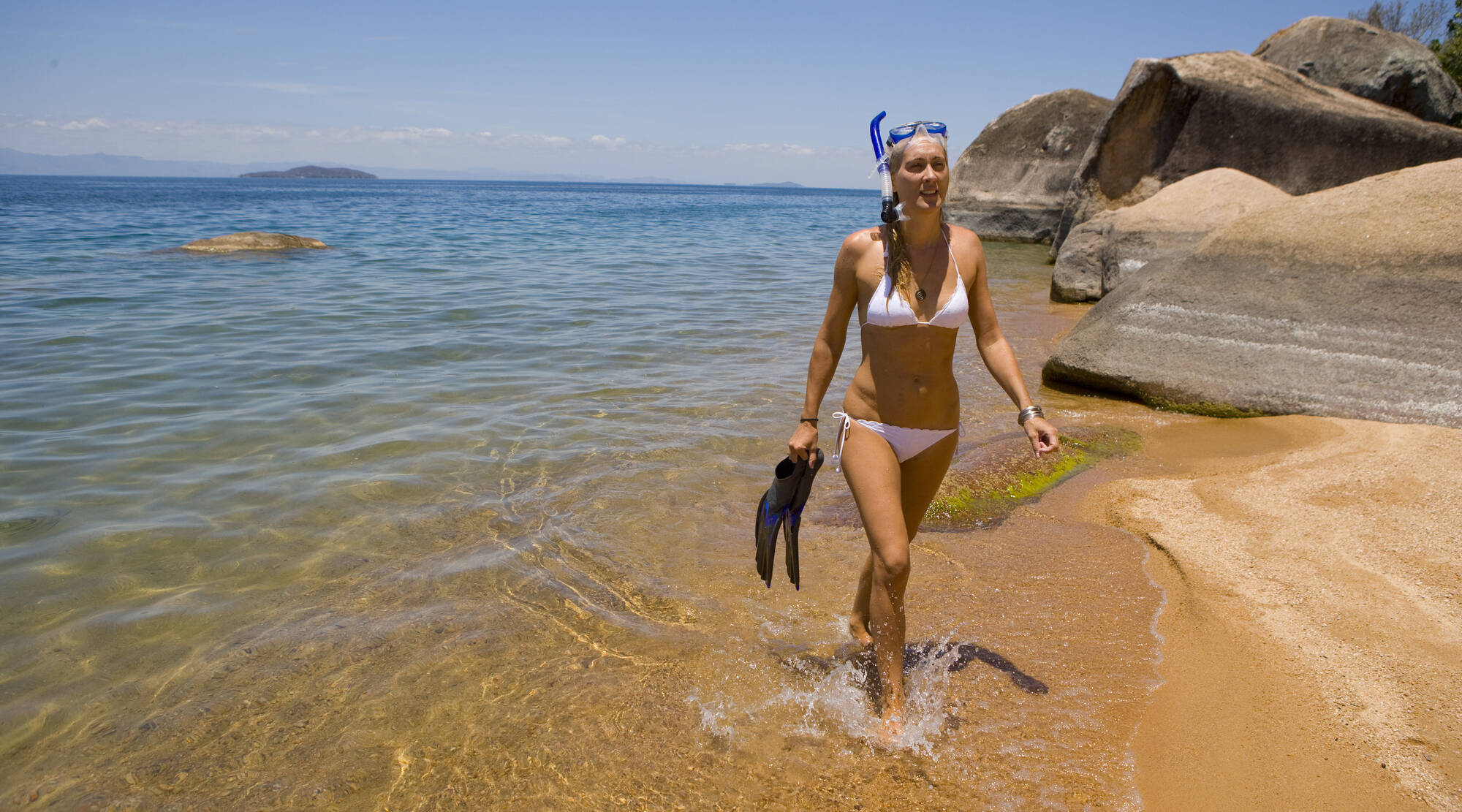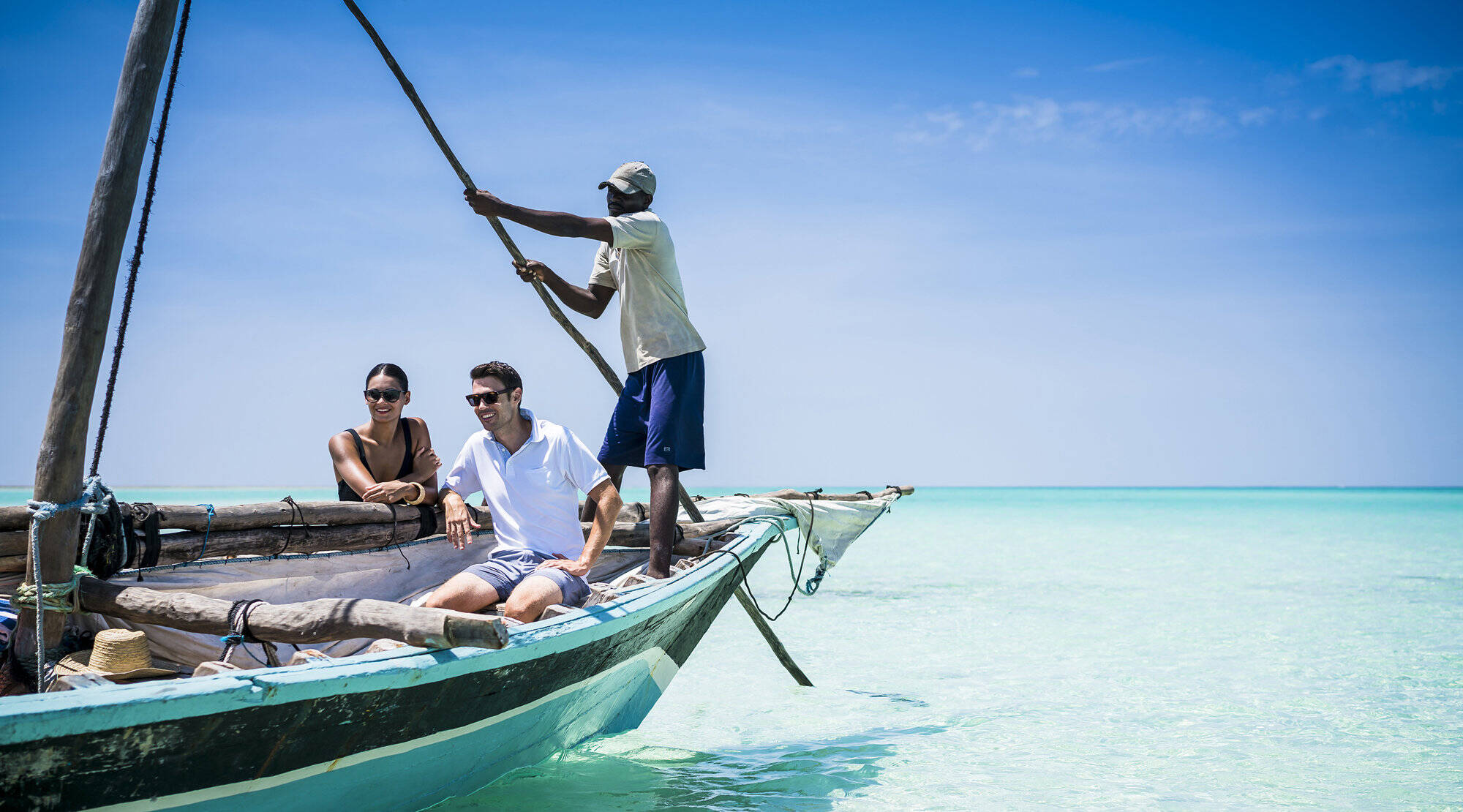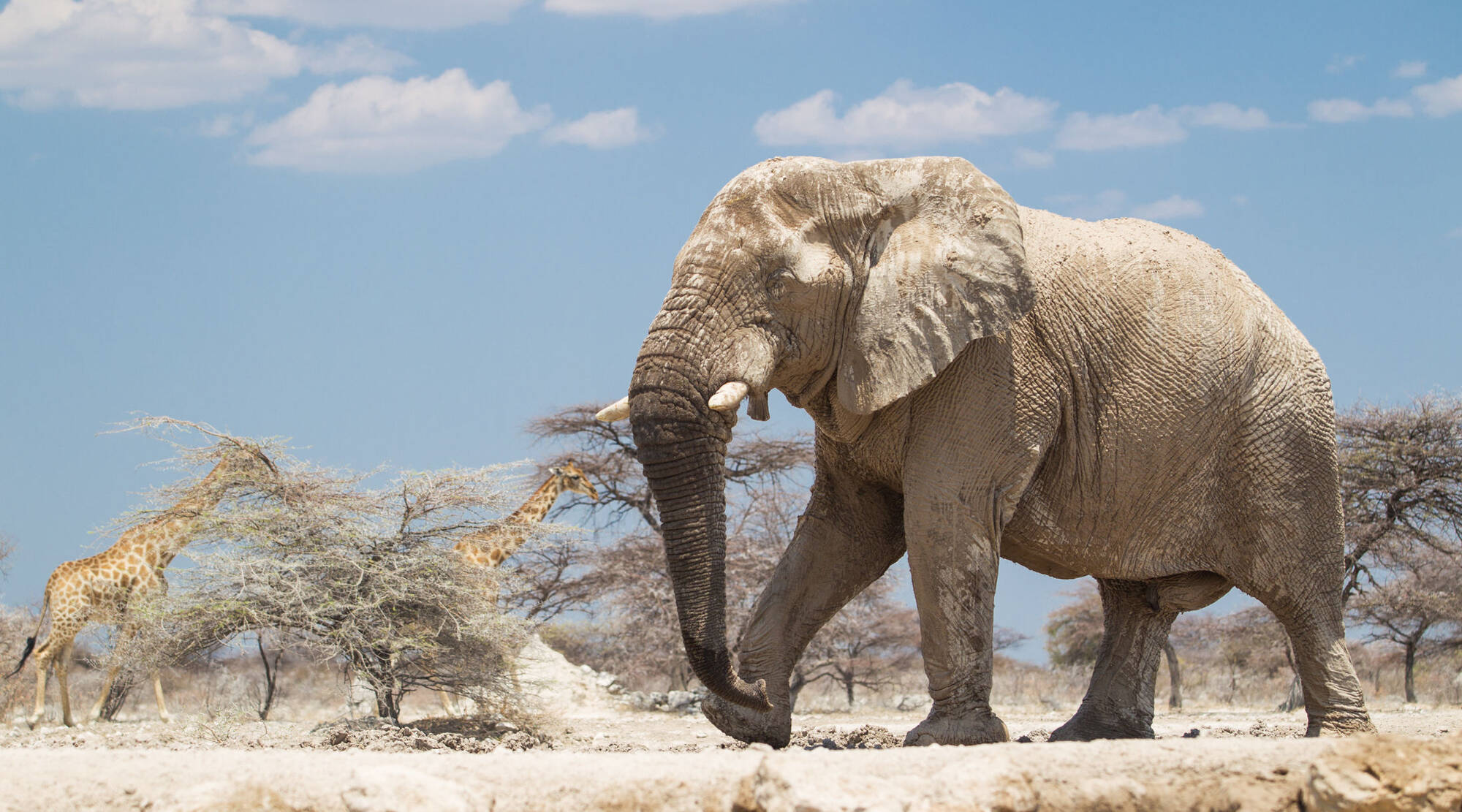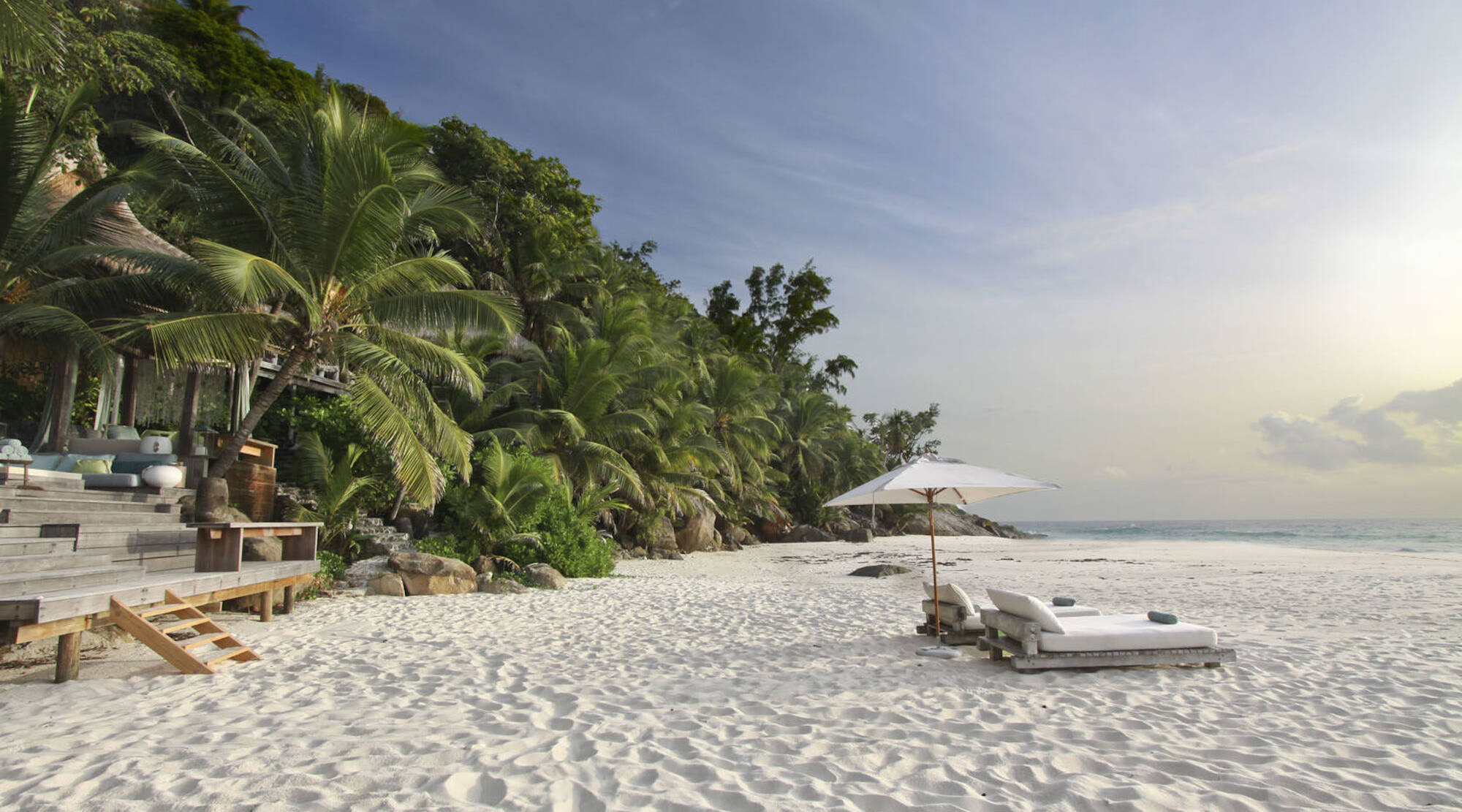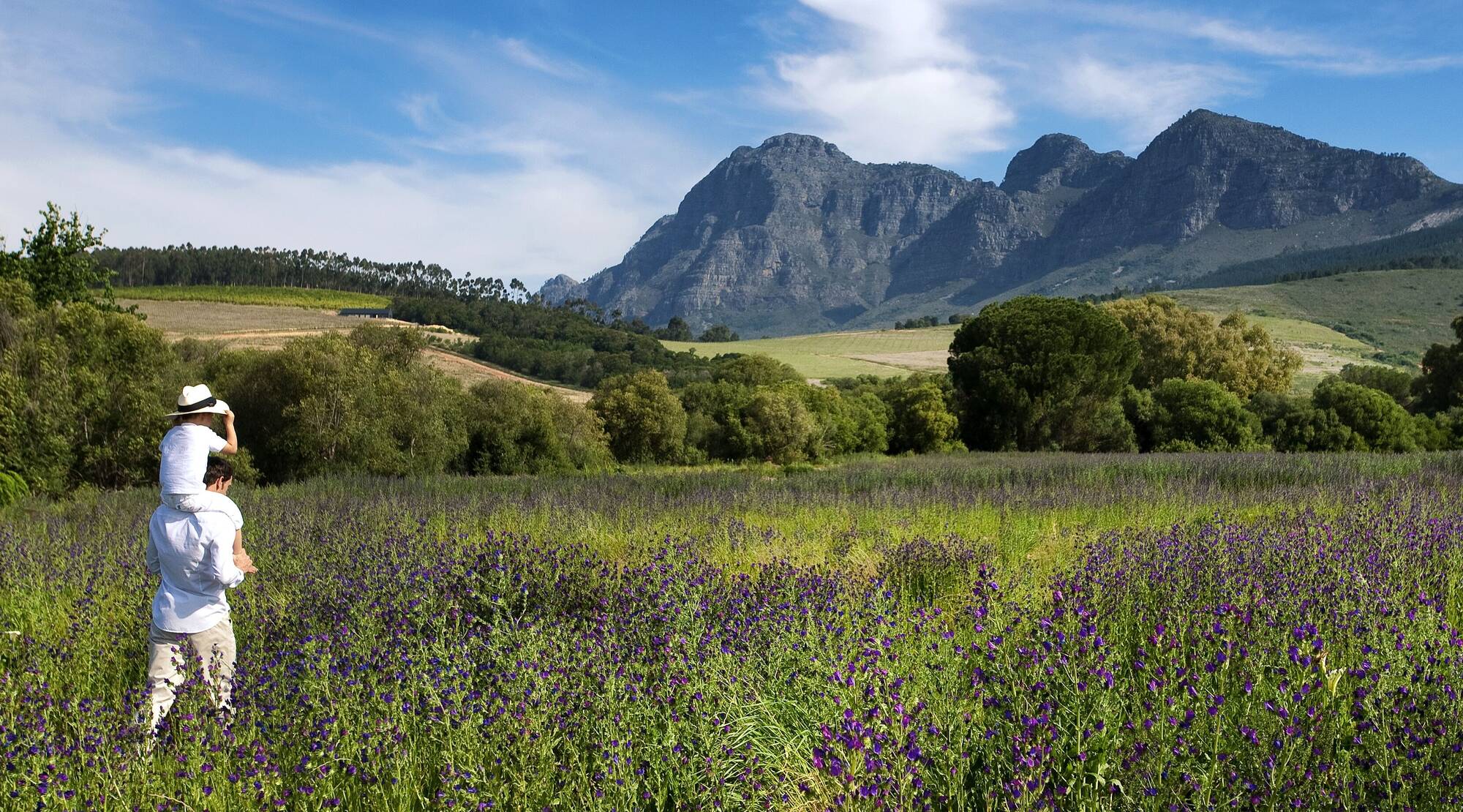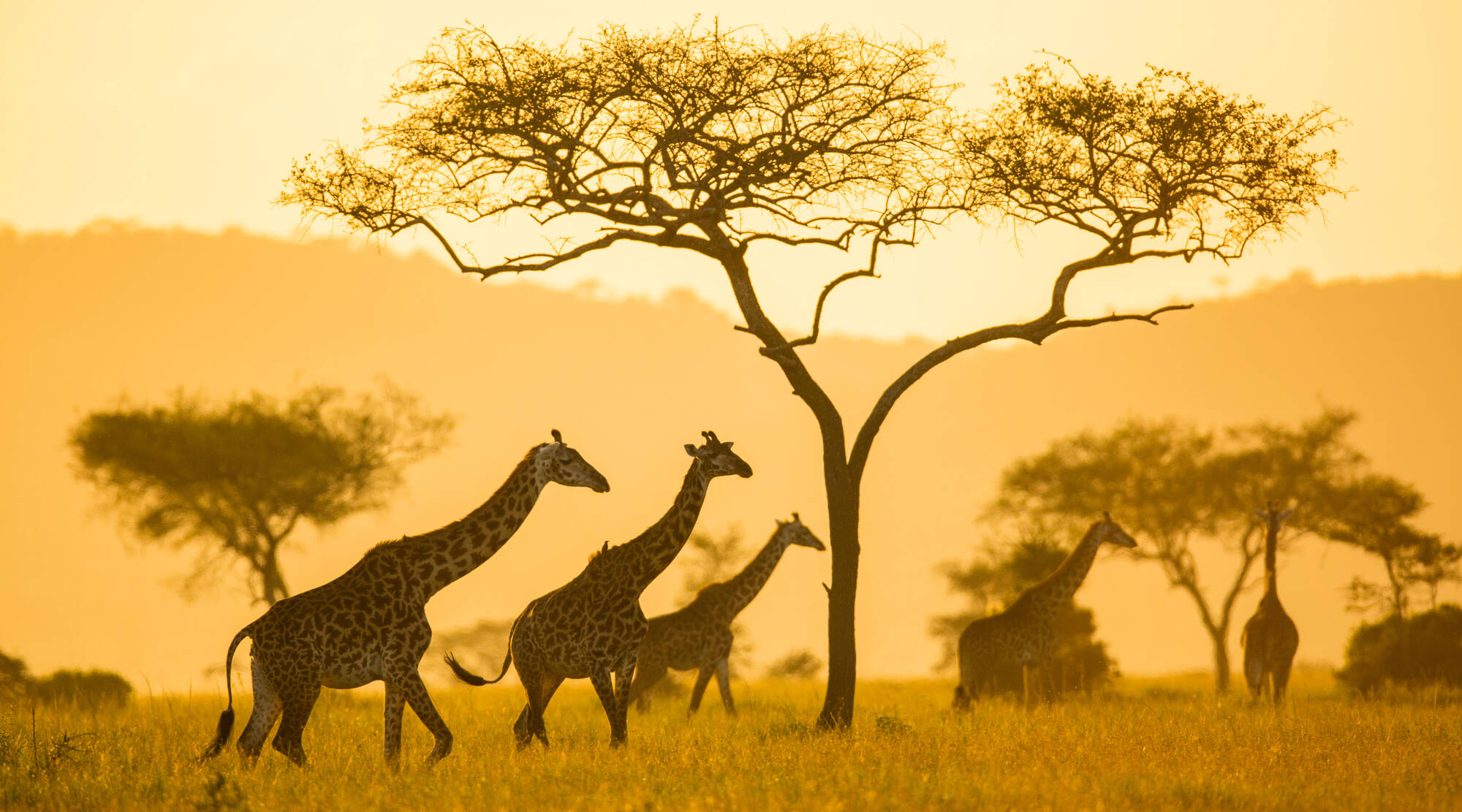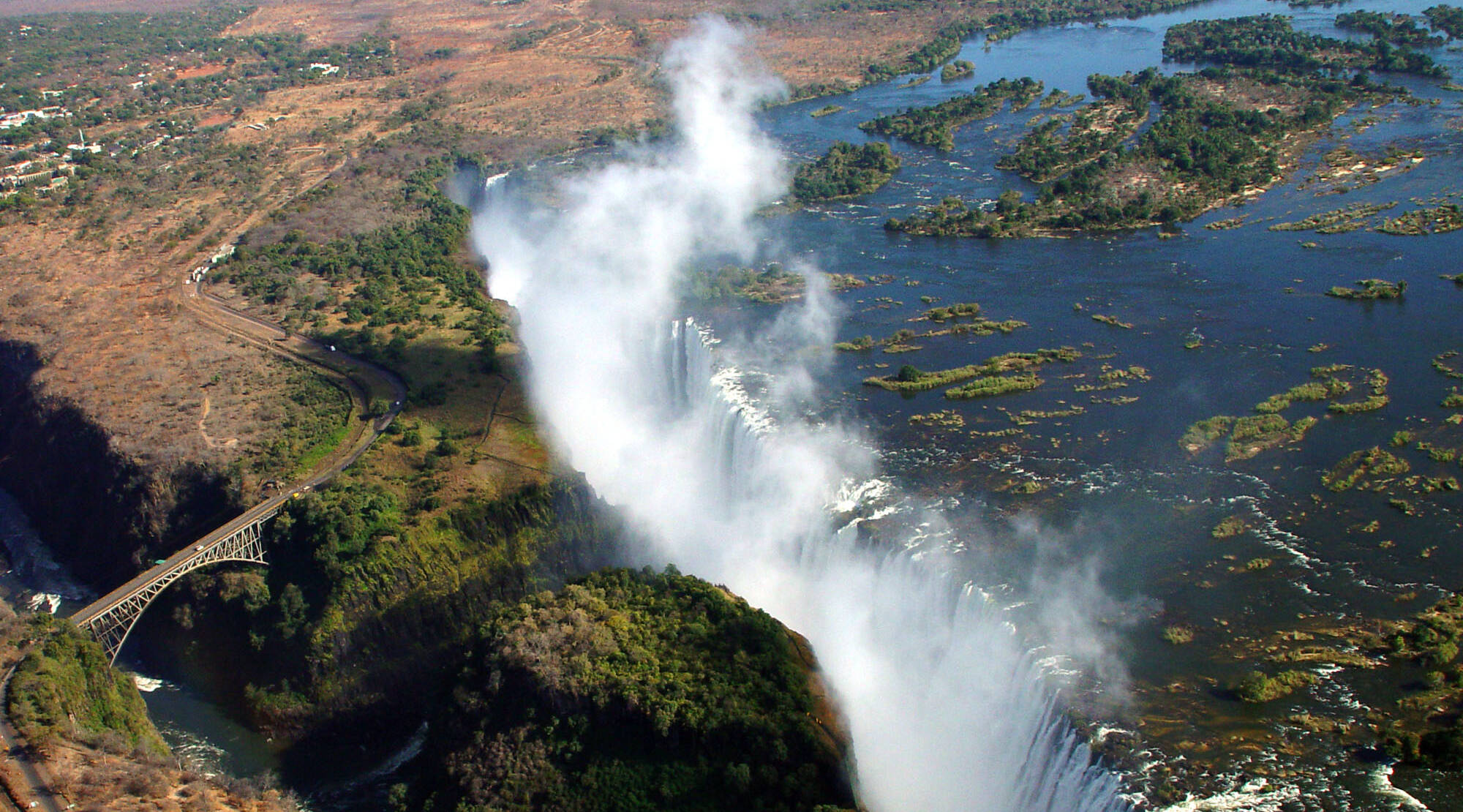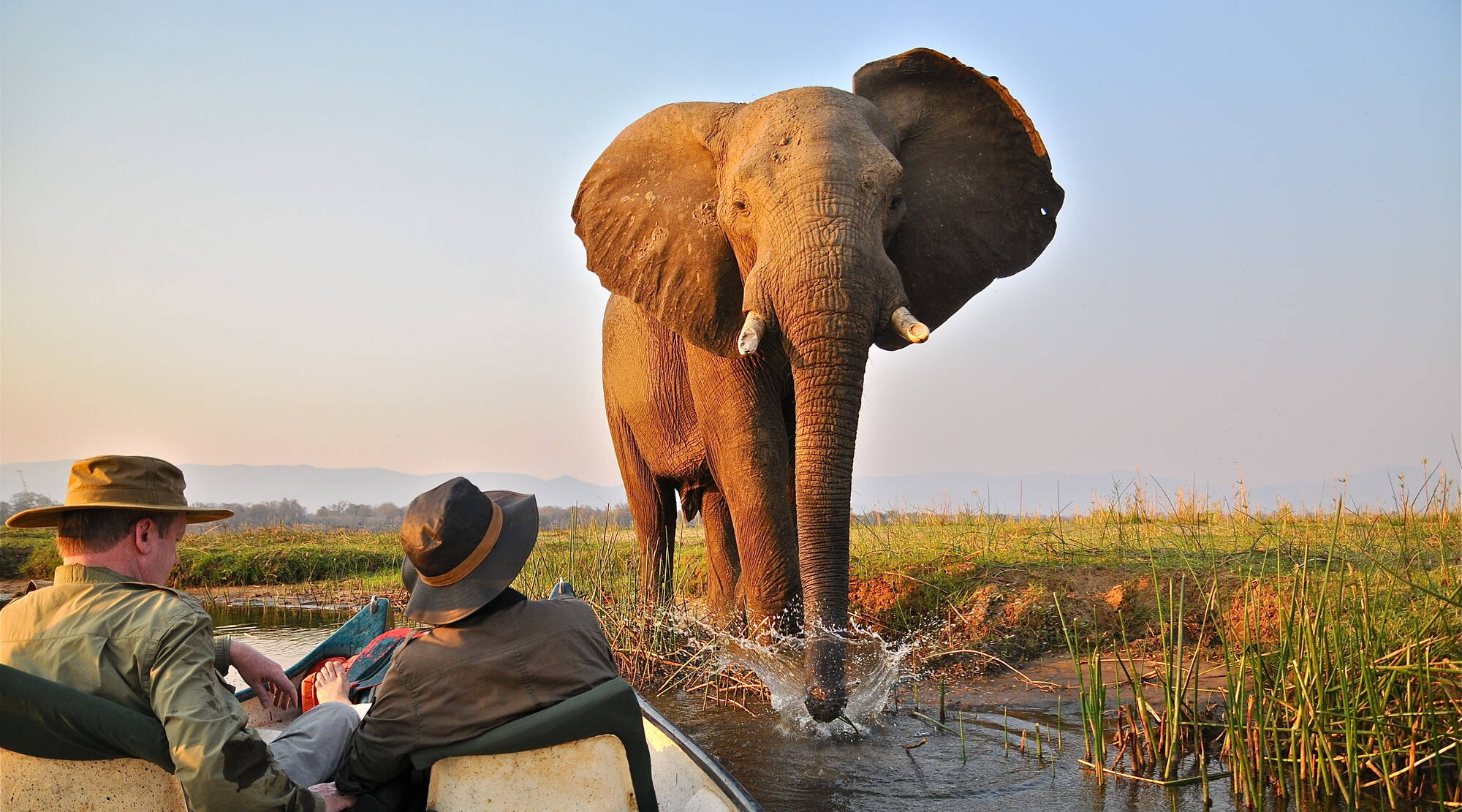Zanzibar Holidays
Zanzibar is magical: the spice-scented, quintessential Indian Ocean idyll. Tropical, turquoise waters lap miles of palm-fringed, sandy beaches.
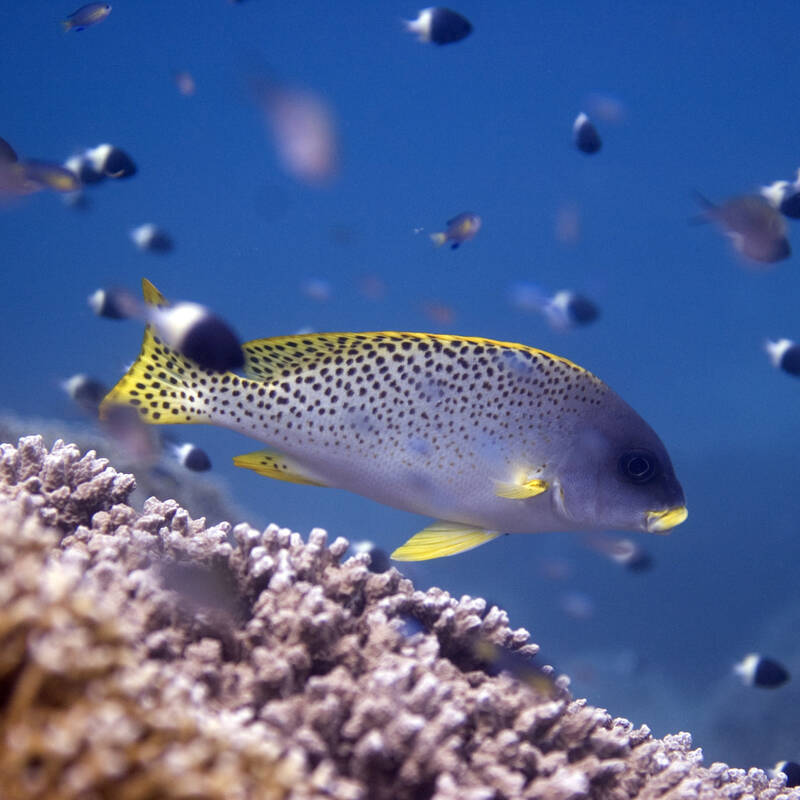
For hundreds of years, traders and travellers have eulogised about Zanzibar’s intoxicating aroma of spices, its beautiful beaches and the bustle of its Moorish capital, Stone Town. It’s name alone - as evocative as Timbuktu, Casablanca or Kilimanjaro - is alluring enough for many to dream of visiting.
Just a short hop across the water from mainland Tanzania - of which Zanzibar is a semi-autonomous part - is this lush array of islands. It’s impossible not to be enchanted as you approach from the air: clear, sparkling waters, darkened only by patch reefs, and punctuated by the billowing triangular, white sails of passing dhows.
On land, chic beach retreats, intimate converted palaces, private island villas and fun family-friendly resorts offer warm welcomes and totally tropical experiences. Be it trailblazing models of responsible tourism or world-class sophistication, the options are myriad.
The capital’s heart, ’Stone Town’, is an UNESCO Heritage Site: a labyrinth of narrow winding alleys dotted with bustling markets, eclectic souvenir shops and fine merchant houses hidden behind intricately carved doors. It’s an exotic urban backdrop and a fascinating insight into the islands’ Omani heritage.
For many, it’s the Indian Ocean beach experience that has the greatest lure: palm-lined stretches of powder-white coral sands, warm waters and coral gardens teeming with marine life. From adrenalin sports to simple seaside fun; sipping sundowners to deep-sea diving; some of the islands’ most magical moments definitely centre on the sea.
Above the waves, kite-surfers showcase their aquatic aerobatics, snorkellers ply the shallow lagoons and traditional dhows take fishermen in photogenic flotillas beyond the reef. Below the surface, tropical fish and turtles entice divers of all abilities, and starfish-studded intertidal walks are fascinating. And from the shoreline, watching golden sunsets melt into the sea make for perfect ends to laid-back island days.
Speak to one of our Experts to start planning your dream Zanzibar holiday.
Beach areas & islands to visit in Zanzibar
Click below to read more detailed information, where you can stay, and holiday ideas visiting each area.
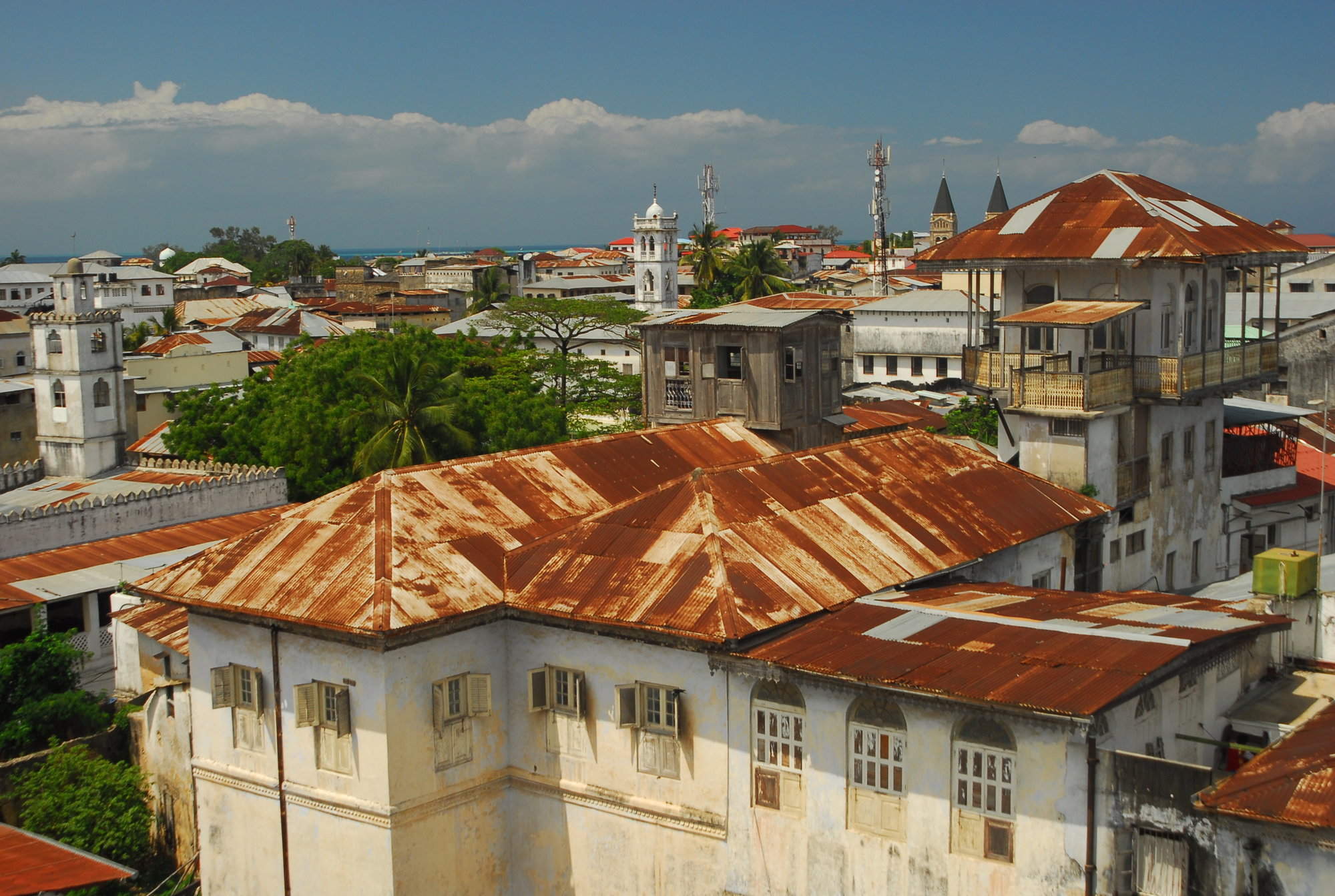
Stone Town
16 places to stay
An enchanting UNESCO World Heritage Site, Stone Town is rich in history and culture, and has some very chic little hotels.
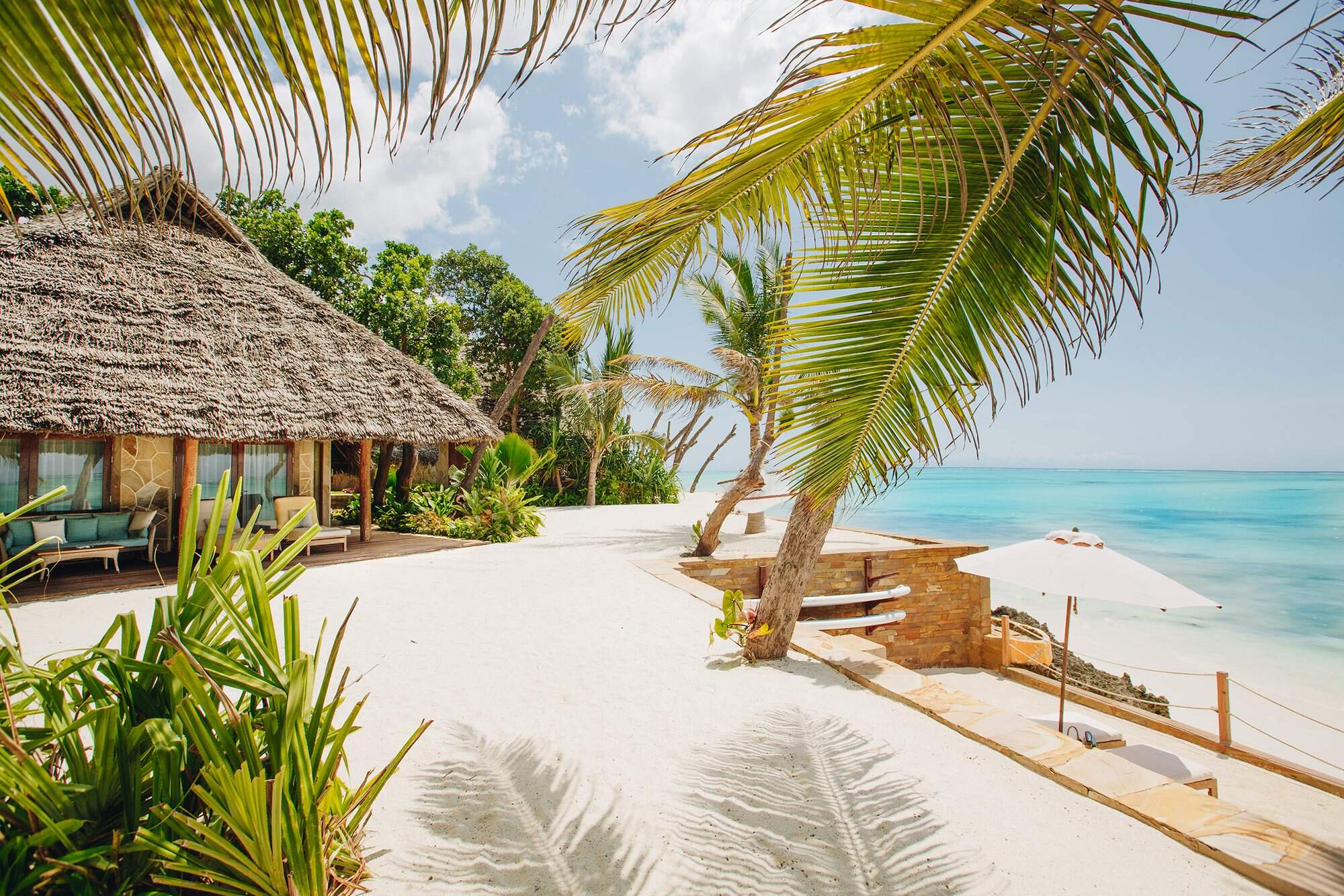
East Coast Zanzibar
10 places to stay
Palm-fringed, powdery beaches, teeming coral reefs and tropical tranquility reign on Zanzibar’s captivating East coast.
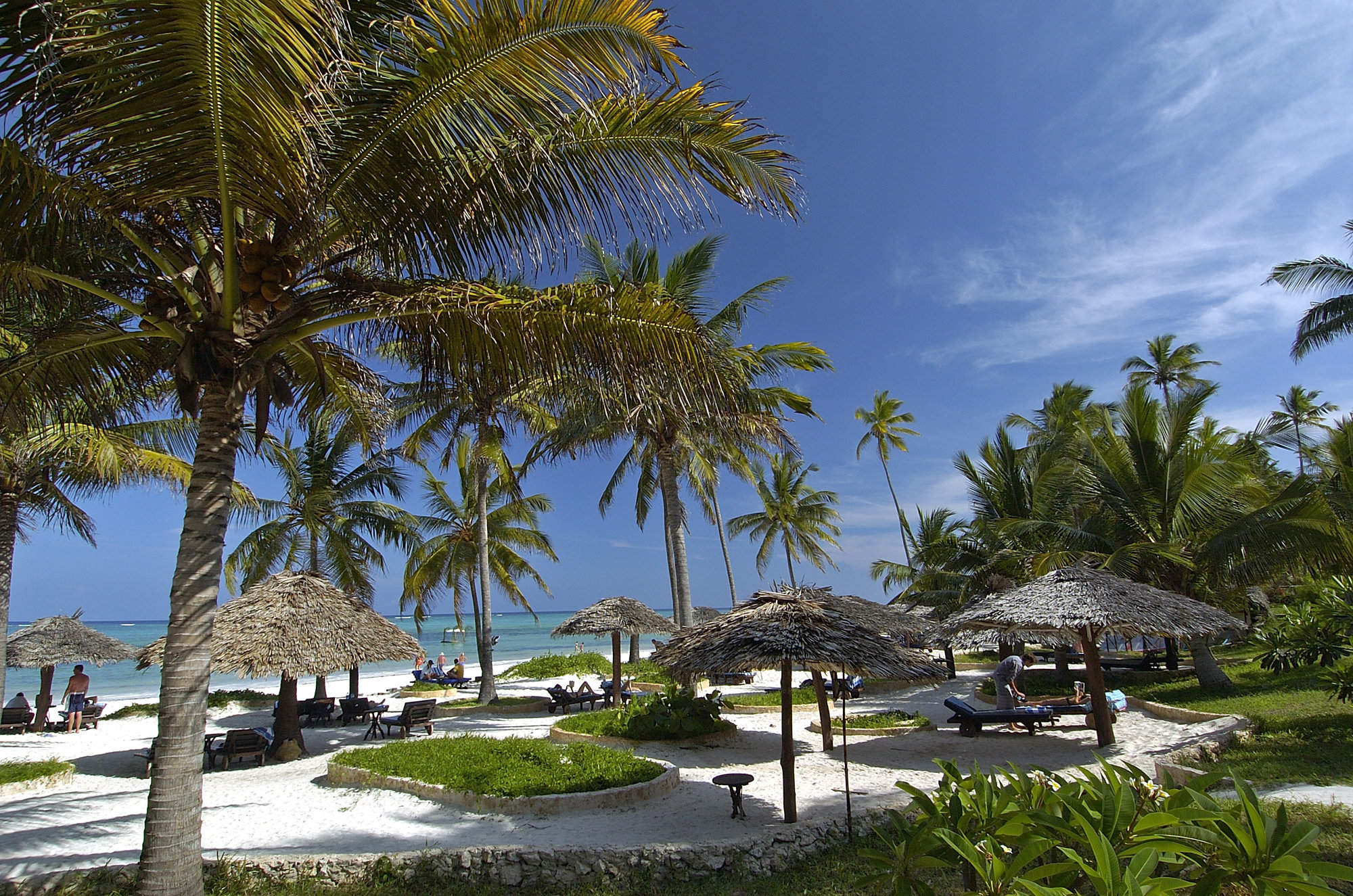
Michamvi Peninsula
10 places to stay
Beautiful beaches, diving and watersports make Zanzibar’s East coast an alluring area for a beach stay.

Northern Zanzibar
5 places to stay
Buzzing beach and village life, sparkling seas and myriad watersports draw travellers to northern Zanzibar.
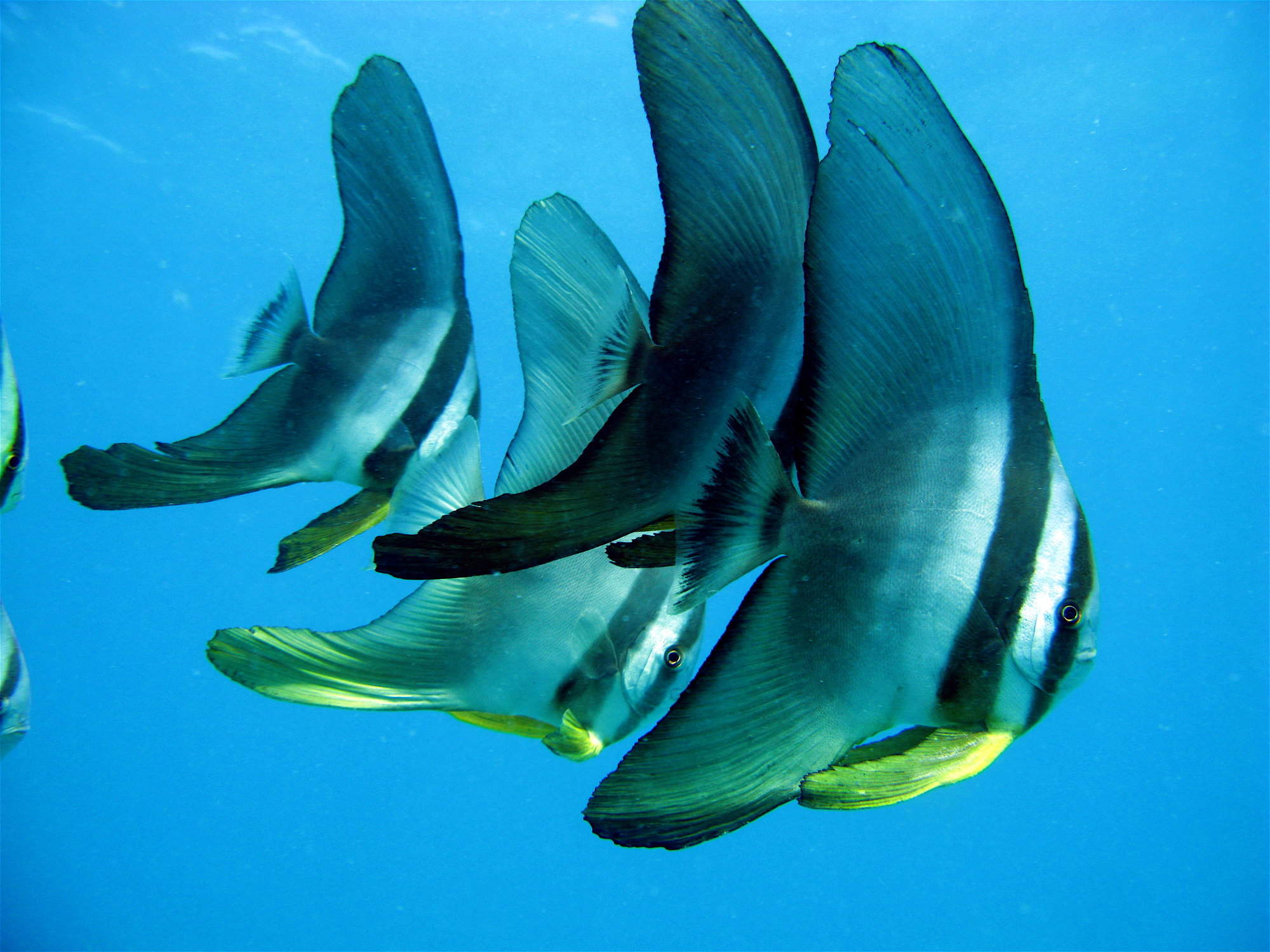
South-west Zanzibar
4 places to stay
Zanzibar’s quietest corner has peaceful retreats, offshore islets, and excellent snorkelling and dolphin-watching.
Our top beach holidays in Zanzibar
Here are 8 great Zanzibar holidays to inspire you.
Our travellers' 10 most recent Zanzibar reviews
All are published in full; none have been edited. Click the button below to browse all 560 reviews.
When to go to Zanzibar
Our month-by-month guide to the best time for visiting Zanzibar
Jan
Feb
Mar
Apr
May
Jun
Jul
Aug
Sep
Oct
Nov
Dec
Zanzibar in January
As on the Tanzanian mainland, January typically marks the start of the short dry season in Zanzibar. Conditions are likely to be hot and mostly dry, with temperatures exceeding 30ºC, although it is not uncommon to get a tropical shower in the afternoons. January can feel very humid at times, and this is particularly noticeable in Stone Town, although this can be tempered by the cooling sea breeze.
New Year is one of the most popular times to visit Zanzibar, with many hotels being fully booked over the festive period. The island generally becomes much quieter after 10th January, and prices drop too.
- Mostly hot with the occasional shower.
- High humidity, which can be relieved by the refreshing breeze.
- Very busy over New Year, with high prices and long minimum stays often
- Quieter and better value later in the month.
- Wind from the northeast, and so the southwest coast is more sheltered.
Our view
A good time to visit, with pros & cons
Weather in January
Zanzibar in February
The weather in February is fairly similar to January, with days typically being hot and sunny although expect the occasional rainy spell. The humidity remains high, however the coastal areas often have a refreshing breeze. Zanzibar is fairly quiet in February, and with comparatively low prices it can be excellent value for money.
At this time the wind blows from the northeast, and so the southwest coast is often more sheltered and there can be good diving in the Menai Bay. The northeast winds can also lead to good conditions for kite surfing, with many kite surfers heading to the southeast coast and Michamvi Peninsula. For music lovers, Stone Town hosts an annual African music festival ‘Sauti za Busara’ each February. The festival's dates change each year; ask us for details.
- Variable: mostly hot and humid with some cloud and rainy spells.
- Fewer tourists and comparatively low prices.
- Popular time for kite surfing, especially around the southeast coast.
- North easterly wind, better diving in the south west of the island.
- ‘Sauti za Busara’ music festival in early February.
Our view
A good time to visit, with pros & cons
Weather in February
Zanzibar in March
March sees the start of the ‘long rains’ in Zanzibar, although the exact start date varies every year. The weather can be unpredictable, with a combination of hot sunny days, rain showers, and the occasional tropical storm. The arrival of the rains lowers the humidity, and it can also lead to some beautiful sunsets – most obviously on the west coast where you can watch the sunset over the ocean. Prices remain low during March, and the island is likely to be relatively quiet.
Diving is generally not recommended during the rainy season, as variable conditions can lead to reduced visibility from rainfall runoff, and choppy water.
- Hot and humid, leading to heavy rains later in the month.
- Low prices, and the island is comparatively quiet.
- Variable weather leads to poor conditions for diving.
- The start of the rains can lead to beautiful sunsets.
Our view
This is not a great time to visit
Weather in March
Zanzibar in April
April is typically the wettest month of the year in Zanzibar, and the long rains are in full force. The average rainfall is more than 250mm during this month, and tropical storms are common. Flooding regularly occurs, which can impact the quality of the roads, and consequently cause difficult, slow journeys across the island. Many of the hotels and beach lodges close at this time, so accommodation options can be limited. Having said this, prices are at their lowest, and if you don’t mind the risk of bad weather you can get some real bargains.
Despite the poor conditions, Easter weekend is often popular, and advance booking is recommended. Due to the strong likelihood of rain and poor conditions diving is inadvisable at this time.
- Heavy rain and tropical storms expected throughout the month.
- Areas of flooding leading to poor travel conditions.
- Many hotels close for refurbishment at this time.
- Low prices and few other tourists.
- Diving inadvisable due to heavy rain and reduced visibility.
Our view
A time to avoid if possible
Weather in April
Zanzibar in May
The long rains continue into May, and as with April you can expect thunderstorms and heavy showers, although these typically ease up towards the end of the month. Parts of the island can experience flooding, causing damage to roads and impacting travel times. The temperature typically drops a little in May, with a daytime average of around 25ºC. The rains lead to a lower humidity too, and mornings and evenings can feel a bit cooler.
Many of the hotels and lodges are still closed, however a handful stay open and prices remain low. While diving is possible, the rain and storms mean that diving conditions are not at their best.
- Continuation of the long rains, with thunderstorms and lightning.
- Flooding common, but conditions becoming drier as the month progresses
- Drop in temperatures, with cooler mornings and evenings.
- Prices low, and many hotels remain closed.
Our view
A time to avoid if possible
Weather in May
Zanzibar in June
June marks the start of the long dry season in Zanzibar. While the island still gets rainfall, especially early in the month, it’s becomes less likely as the month progresses. Temperatures remain steady, with daytime highs averaging 25ºC, and it likely to be mostly dry. Any rain you do experience is likely to be in shorter bursts rather than heavy storms and hours of continuous rain, although conditions vary from year to year.
The wind direction switches to blow from the southeast, and the northeast coast is likely to be more sheltered at this time. Diving conditions can be variable, and while they are generally good there can be some rough days.
- Variable weather: mostly hot and dry, with some rainy showers.
- Wind from the southwest, and more sheltered in the north east.
- Diving conditions variable, dependent on the wind and rain.
- Lower prices and generally good weather can lead to great value.
Our view
A good time to visit, with pros & cons
Weather in June
Zanzibar in July
July is a very popular time to go to Zanzibar, and this coincides with the long dry season. July and August are the school holidays throughout much of Europe, and Zanzibar can often be busy with families. Weather conditions are generally hot and dry and pretty ideal for a beach holiday, however there is still a chance of an occasional short shower. Conditions for diving are typically pretty good, however this will be dependent on recent weather conditions.
The Zanzibar International Film Festival takes place in July, with lots of people flocking to Stone Town to soak up the atmosphere. The dates for the festival change every year, so chat to Expert Africa for details.
- Typically hot and dry with clear skies, although showers are possible.
- Can become very busy, with many families traveling during holidays.
- Zanzibar International Film Festival takes place in Stone Town.
- Great beach weather result in high prices.
Our view
A very good time to visit
Weather in July
Zanzibar in August
August is one of the most popular times of year to visit Zanzibar, and with good reason; this is one of the driest months and it is typically hot with clear skies – ideal for relaxing on the beach. Many families choose to visit during August, and the island can be busy, and this is particularly noticeable in Stone Town and around the more popular snorkelling sites.
High demand can mean that many of the more popular hotels and beach lodges can be booked up more than 6 months ahead, so advance booking is crucial. Due to the popularity and great beach weather prices are high.
- Hot and sunny, generally ideal for relaxing on the beach.
- Popular time for families and the island can be busy.
- High demand leads to higher prices, and advance booking is essential.
- With little rain falling and causing soil run-off, the sea is clear.
Our view
Fantastic: the very best time to visit
Weather in August
Zanzibar in September
September is an excellent time of year to visit Zanzibar. Weather conditions are typically very good, with clear skies and temperatures ranging from 20¬–30ºC. September is also one of the driest months, averaging 50mm of rain during the month, however rain showers are still possible. Due to the great beach conditions prices remain high, however with fewer families travelling in September the island can be a little quieter at this time.
September to December are often some of the calmest months at sea, which can result in superb conditions for diving. The wind typically blows from the southeast, and the northeast coast can often be a little more sheltered. You can find some beautiful snorkelling and diving spots around Mnemba Island.
- Warm temperatures and clear skies, with the off-chance of rain.
- Fewer families travelling, and the island can be a little quieter.
- Great beach weather means that prices remain high.
- Relatively calm seas result in good conditions for diving.
Our view
Fantastic: the very best time to visit
Weather in September
Zanzibar in October
October is the tail end of the dry season and you can generally expect hot, dry conditions. The short rains typically start in early November, and so this does mean that there is an increased likelihood of rainy spells as the month progresses. October remains a popular month to travel, particularly so during the European half-term school holidays, and advance booking is advised.
With high demand and great weather prices remain high, however there are some long-stay special offers to be found. South-easterly winds mean that the northeast coast can be more sheltered and conditions for diving can be good.
- End of the dry season, generally good beach weather.
- Increased chance of rain, particularly near the end of the month.
- Popular with families during the half-term school holiday.
- High demand means prices remain high.
- Northeast coast generally more sheltered.
Our view
A very good time to visit
Weather in October
Zanzibar in November
The short rains start during November, however their exact start varies year on year. You are likely to experience a mixture of hot, dry days with the occasional tropical shower, however we find that short showers can actually be quite refreshing. With the start of the rains the humidity can shoot up and while the coastal properties tend to receive a pleasant cooling breeze Stone Town and the island interior can feel quite hot and clammy.
Prices drop in November and there are some real bargains to be found. This time of year can be great value for money, especially near the start of the month when the weather conditions are very comparable to late October. The demand is generally lower, and the island starts to feel much quieter.
- Variable weather: mostly hot and dry but with some clouds and rain.
- Hot temperatures, with humidity on the rise.
- Less busy than October, and with lower prices it can be great value.
Our view
A good time to visit, with pros & cons
Weather in November
Zanzibar in December
December falls in to the short rainy season, and the weather can be variable. Days are likely to be hot and humid, with the occasional patch of rain, although showers can be a blessing in disguise as they help to lower the temperature. Early December is fairly quiet and prices are low, however this changes dramatically over Christmas and New Year.
The festive season, from around 20th December to 5th January, is arguably the most popular time to visit Zanzibar. Prices are at their highest, and long minimum stays are imposed. Due to the very high demand booking early is essential, especially if you’re a group or a large family. Book six months to a year in advance, or even more, if possible.
- Variable weather, with a mix of hot, sunny days and tropical showers.
- High humidity, which may be mitigated by the cool ocean breeze.
- Quiet with lower prices earlier in the month.
- Busy and exceptionally popular over Christmas and New Year.
- Advance booking over Christmas and New Year is essential.
Our view
A good time to visit, with pros & cons
Weather in December

Looking for inspiration on where to travel next?
Visit our trip chooser to explore your options and find inspiration for your perfect African adventure
Inspire meZanzibar beach holidays
Indian Ocean beach holidays on Zanzibar
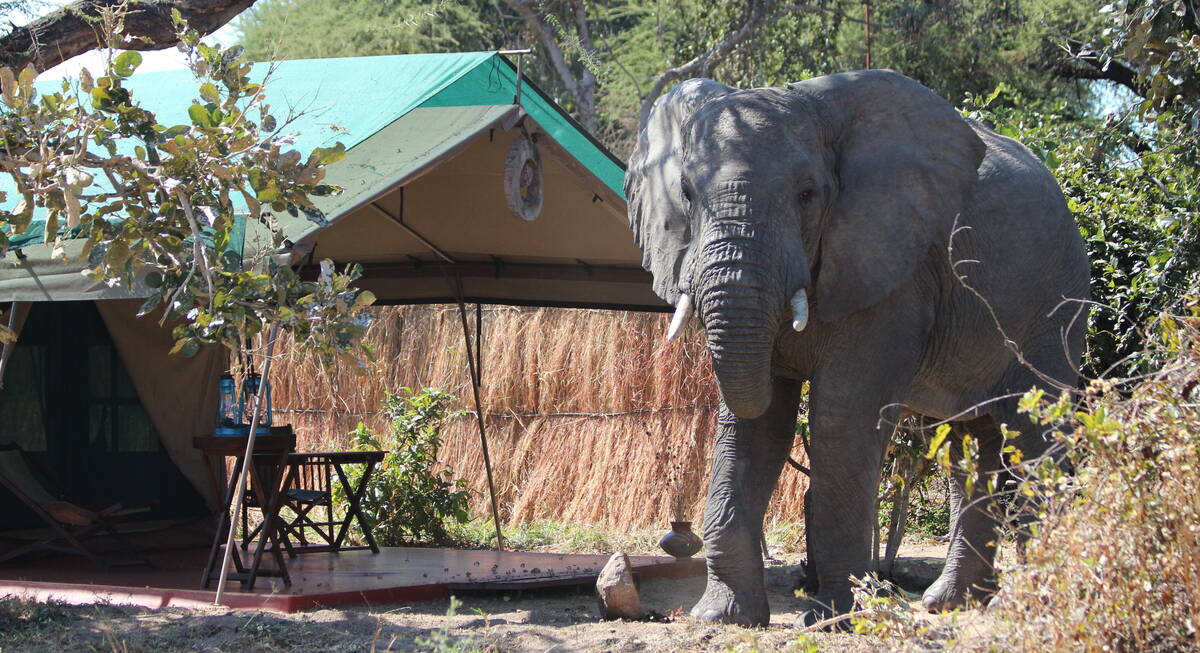
Turaco Safari
12 days • 4 locations
DAR ES SALAAM AIRPORT TO DAR ES SALAAM AIRPORT
This top-value holiday idea combines two safari areas with a week on the Indian Ocean island of Zanzibar. Photograph lions and elephants, then relax under the palms on a powder-sand beach.
US$6,190 - US$6,830 per person
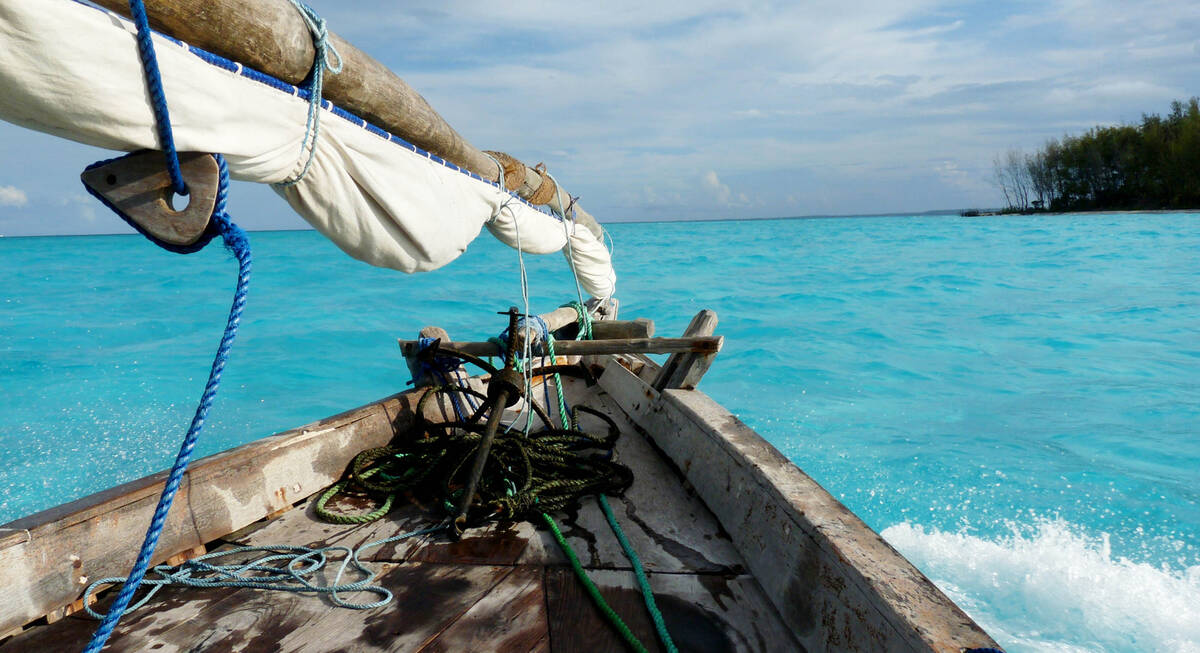
Turmeric Beach Holiday
7 days • 2 locations
DAR ES SALAAM AIRPORT TO DAR ES SALAAM AIRPORT
Relax on powdery white beaches and snorkel over colourful reefs on Zanzibar’s picturesque east coast before heading on to Stone Town to explore the labyrinth of cobbled streets.
US$2,510 - US$3,750 per person
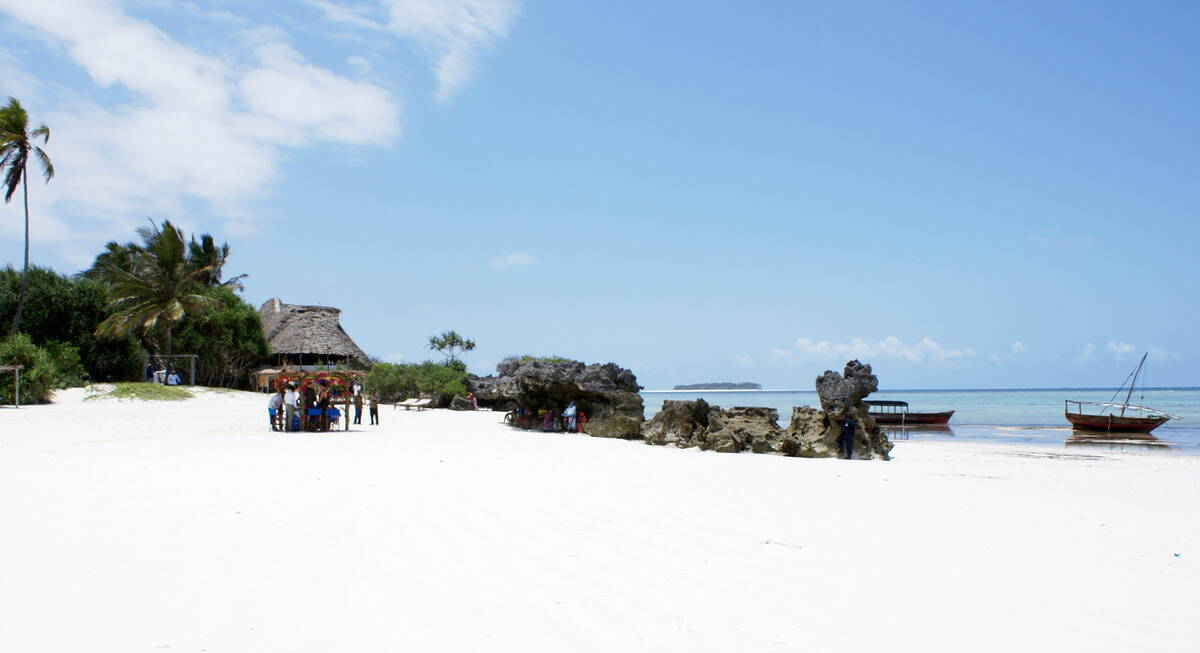
Papaya Beach Holiday
7 days • 2 locations
DAR ES SALAAM AIRPORT TO DAR ES SALAAM AIRPORT
A relaxing holiday with a range of activities, where Chumbe Island Lodge and Matemwe offer tranquil atmospheres, considerable exclusivity and the chance to learn about worthwhile local conservation efforts.
US$3,100 - US$3,910 per person
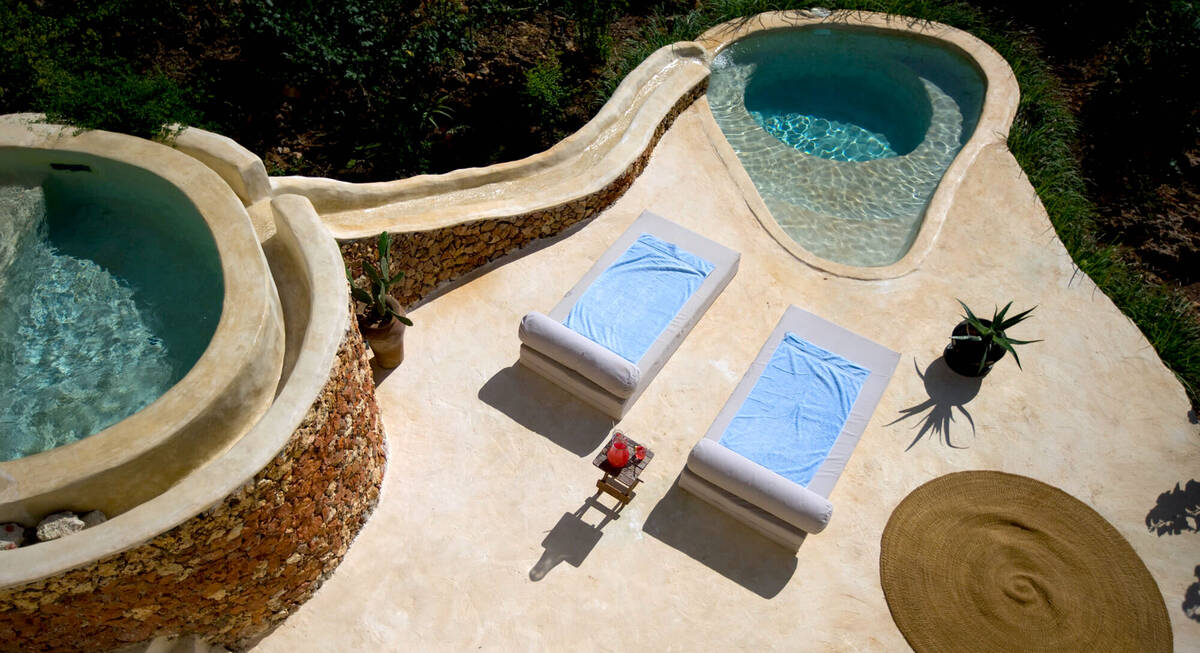
Masala Beach Holiday
9 days • 2 locations
DAR ES SALAAM AIRPORT TO DAR ES SALAAM AIRPORT
Two luxuriously elegant hotels offer relaxation on Zanzibar’s beach-front and exploration of Stone Town. Combine peaceful tranquility with fine dining, indulgent comforts and vibrant culture.
US$7,000 - US$9,560 per person
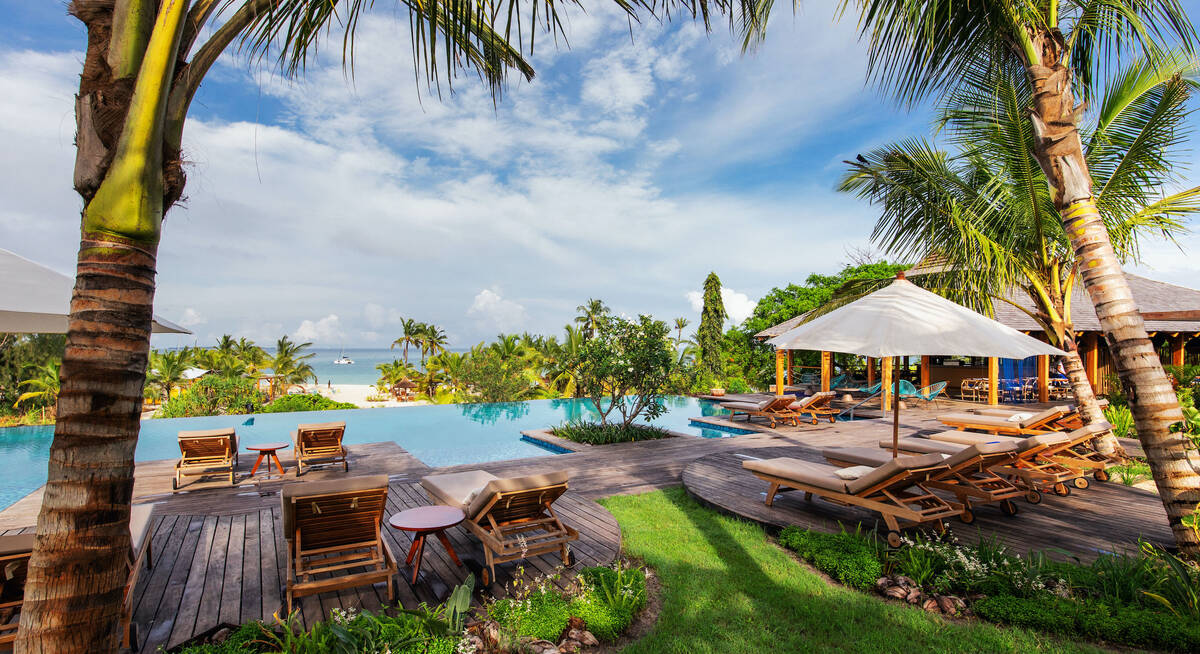
Red Colobus Monkey Safari
11 days • 3 locations
DAR ES SALAAM AIRPORT TO DAR ES SALAAM AIRPORT
This luxury holiday suggestion combines a wildlife safari in Ruaha National Park with a week on Zanzibar, exploring Stone Town’s narrow streets and relaxing on a palm-shaded beach.
US$6,660 - US$8,490 per person

Regal Sunbird Fly-in Safari
12 days • 5 locations
KILIMANJARO AIRPORT TO DAR ES SALAAM AIRPORT
Experience the highlights of Tanzania with a safari in the country’s famous northern parks followed by historic Stone Town and the palm-fringed beaches of Zanzibar, staying in high-quality accommodation throughout.
US$10,570 - US$16,370 per person
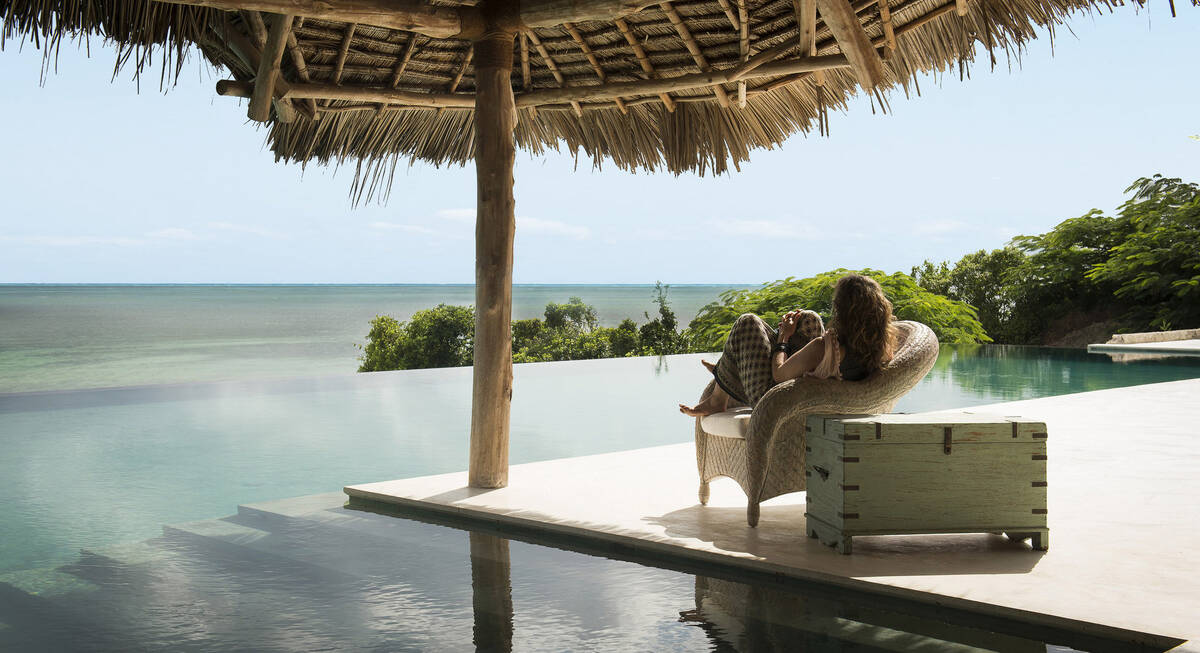
Dik Dik Safari
12 days • 4 locations
KILIMANJARO AIRPORT TO DAR ES SALAAM AIRPORT
Combine safari with peace and relaxation on Zanzibar’s white-sand shores during this exploration of Tanzania. Stay in three high-quality sister camps within Tarangire National Park, Ngorongoro Conservation Area and Serengeti National Park before concluding with a stay on Michamvi Peninsula.
US$10,640 - US$15,130 per person
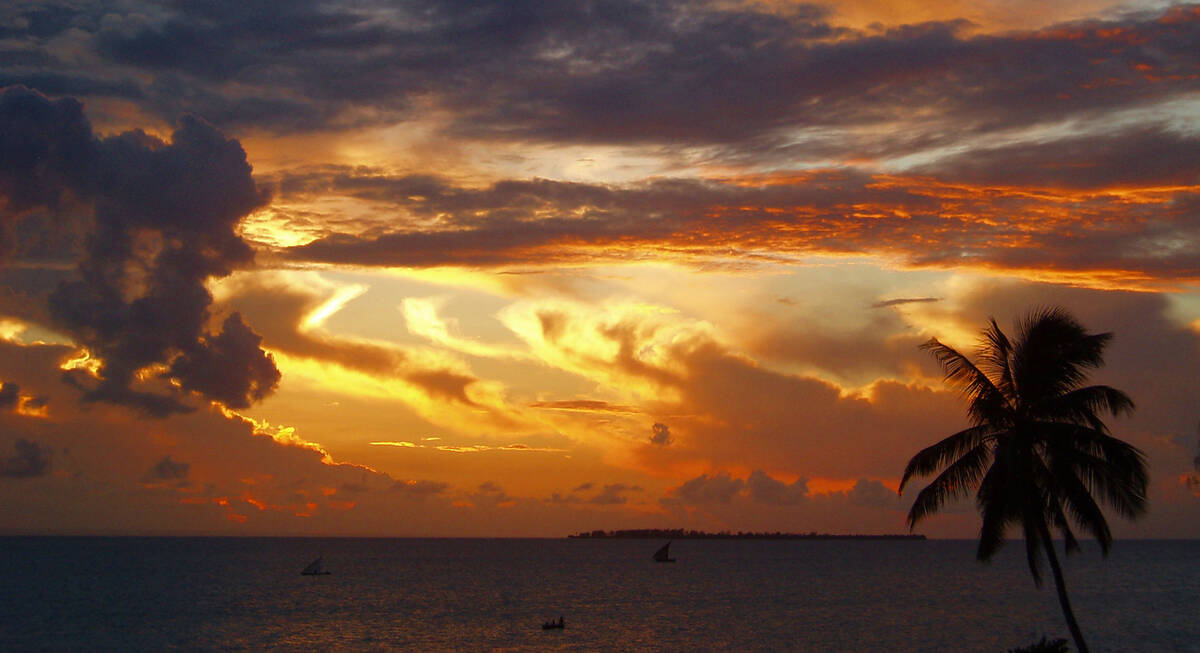
Coconut Beach Holiday
6 days • 2 locations
DAR ES SALAAM AIRPORT TO DAR ES SALAAM AIRPORT
A luxurious island getaway split between a small boutique hotel in Stone Town and your own sumptuous private villa on a spectacular swath of white sandy beach.
US$2,820 - US$5,510 per person
Plan and book your trip with Expert Africa
All of our trips are tailor-made, so we'll always adapt them to suit you. Talk to an Expert and let us plan and arrange your perfect trip.

Talk to an Expert
Call or email us now! We’ll match you with the Specialist in our team who is best suited to help you. Then together we can start planning your trip.

Set up your itinerary
Based on our experience and your ideas, your specialist will create a detailed, costed itinerary. We’ll refine it together, until we have a trip that you’re perfectly happy with.

Prepare for your trip
The same Specialist will make the seamless arrangements for your trip, send you detailed travel documents, and be available to answer any questions before you depart.

Travel with peace of mind
After you set off, you’ll be cared for by our partners in Africa, most of whom have worked with Expert Africa for decades. And if you ever need us urgently, we’re available 24/7.

When you return
We love to learn about your trip, and so will always be grateful if you’ve the time to give feedback to your Specialist when you return.
Where to stay in Zanzibar
Ask us for more details of what’s where, and what’s likely to suit you best!
Zanzibar holiday styles & special interests
From family adventures to romantic breaks, find ideas here for your perfect Zanzibar beach holiday
Our other African destinations
Elephant safari
in Linyanti
Talk to a Zanzibar Expert
These members of the Expert Africa team have been to Zanzibar and can advise you from their own personal experience.
Start a conversation with them today to help plan your trip.
Zanzibar specialist
I spent three years working with meerkats in the Kalahari Desert I've spent 20 days researching in Zanzibar.
Destination manager, Zanzibar
I grew up in a tented camp in Ishaha, Queen Elizabeth National Park, Uganda I've spent days researching in Zanzibar.
